
|
| Accept Cookies | Customize | Refuse Cookies |
Ferorake www.juzaphoto.com/p/Ferorake  |
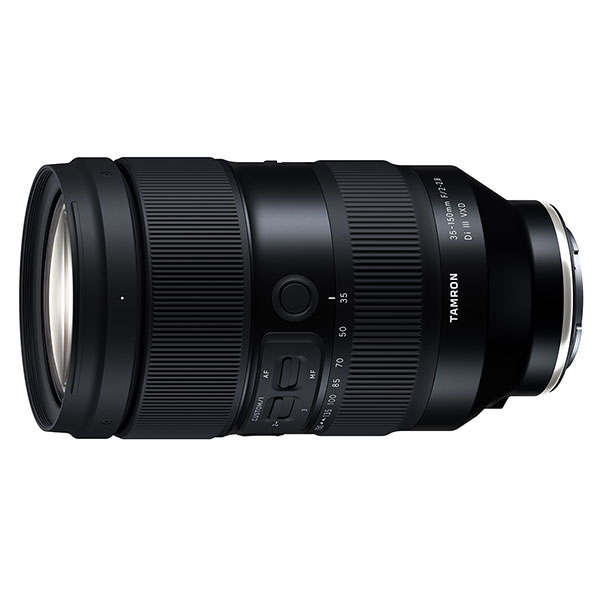 | Tamron 35-150mm f/2-2.8 Di III VXD Pros: All Cons: Absence of OS but which would have inevitably enlarged the lens Opinion: What can I say, a work tool. Buying it for anything else seems silly to me. In a work context I can say that it can serenely cover the needs of a professional from A to Z. AF speed, quality, truly absurd. You don't miss the range between 150mm and 200mm, a focal length that in my opinion leaves the time it finds when shooting events, and it is necessary that the PDC is not too small, otherwise you will throw away the photo. Digitally cropping when shooting at 150mm can give you great results though. In short, nothing to say, it costs but honestly I prefer it to Samyang for obvious reasons of reliability and possible assistance in case of problems. It's bulky but allows you to use a single camera body during an event, and it makes all the difference. sent on June 15, 2025 |
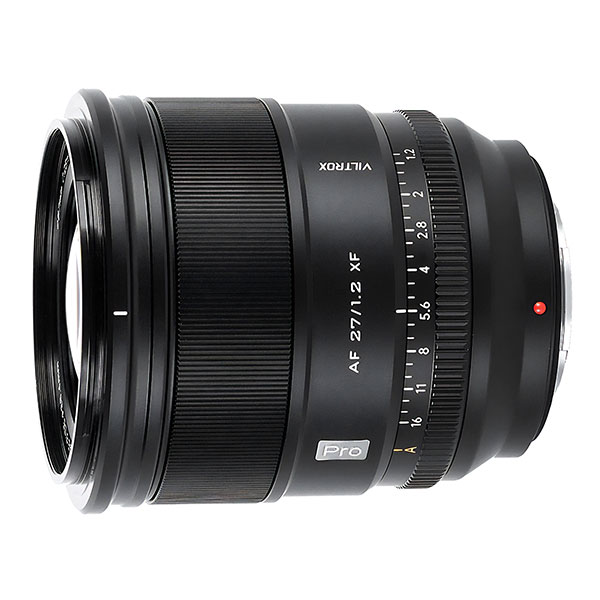 | Viltrox AF 27mm f/1.2 Pro Pros: Very interesting perspective in a work context Cons: Perhaps exaggerated dimensions on non-pro bodies Opinion: Nice lens, I used it in a work context and it did not disappoint me. A focal length that becomes about 40mm on full frame, perfect and honestly, in my opinion, better than 35mm as an angle of view. Very usable at f1.2, you close the aperture only to increase the pdc, not for lack of sharpness or contrast. The dimensions are very important, I found it uncomfortable to the limits of unusable on xe and xpro bodies, while excellent on xt5 thanks to its revised ergonomics. To be evaluated therefore, honestly I would not consider it for amateur use, given the inconvenience in use. For general use, the size of a 33 1.4, for example, is still a huge advantage. For a professional, however, it can be a definitive solution to shoot 90% of an event, which honestly happened to me. Too bad then for the ridiculous rendering of Fuji in low light conditions that made me abandon the system. If I had stayed, however, without a doubt this viltrox, perhaps together with the 56 1.2, would have been my work combination. Too bad that its "companion" is the 75 1.2, decidedly long on aps-c for professional use. sent on November 09, 2024 |
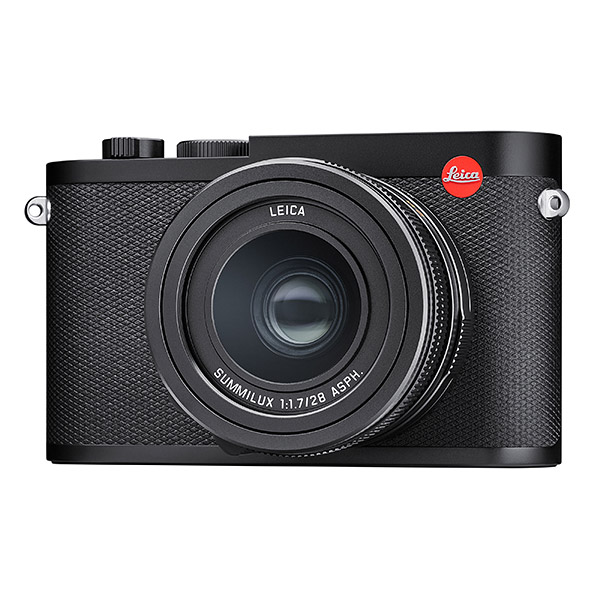 | Leica Q2 Pros: Image quality, coat-of-arms, feeling Cons: Creepy, cumbersome ergonomics, fixed lcd, no usb-c charging, mind-boggling price Opinion: Thoughts that will antagonize me many: the leica q2 horrified me! Take a Leica m10, remove the peculiarities that distinguish it, weld a 28mm on it, leave the unjustifiable cost, and you will have a Q2! I honestly didn't find anything that could justify such a purchase. Cumbersome use, between very hard dials and a mixture of settings between touch and some physical buttons, very boring focal length, possibility of customization and processing of shots taken paro paro by a Canon of 15 years ago... What's the point of this machine? Not to mention the fixed LCD, a huge limit for me in street (solved with the q3). It's a far cry from being a "compact", it needs a camera bag for every use, unless you're walking around with the coat of a Los Angeles inspector. Other amenities such as a viewfinder with flush glass, or the impossibility of charging the camera via USB-C socket, you decide. For me it's a nonsensical machine, I might as well throw myself into the M world and enjoy the experience of the rangefinder, which would fit like a glove here. Leica has to hope that no one else will offer a compact camera with a FF sensor, because seriously it could remove the q2\\q3 from the price list. Between the x100v and the Q2, held simultaneously, I wouldn't have the slightest doubt about recommending the Fuji. An ocean of more possibilities, between simulations and OVFs that this Leica dreams of. sent on June 06, 2024 |
 | Leica Q2 Pros: Image quality, coat-of-arms, feeling Cons: Creepy, cumbersome ergonomics, fixed lcd, no usb-c charging, mind-boggling price Opinion: Thoughts that will antagonize me many: the leica q2 horrified me! Take a Leica m10, remove the peculiarities that distinguish it, weld a 28mm on it, leave the unjustifiable cost, and you will have a Q2! I honestly didn't find anything that could justify such a purchase. Cumbersome use, between very hard dials and a mixture of settings between touch and some physical buttons, very boring focal length, possibility of customization and processing of shots taken paro paro by a Canon of 15 years ago... What's the point of this machine? Not to mention the fixed LCD, a huge limit for me in street (solved with the q3). It's a far cry from being a "compact", it needs a camera bag for every use, unless you're walking around with the coat of a Los Angeles inspector. Other amenities such as a viewfinder with flush glass, or the impossibility of charging the camera via USB-C socket, you decide. For me it's a nonsensical machine, I might as well throw myself into the M world and enjoy the experience of the rangefinder, which would fit like a glove here. Leica has to hope that no one else will offer a compact camera with a FF sensor, because seriously it could remove the q2\\q3 from the price list. Between the x100v and the Q2, held simultaneously, I wouldn't have the slightest doubt about recommending the Fuji. An ocean of more possibilities, between simulations and OVFs that this Leica dreams of. sent on June 06, 2024 |
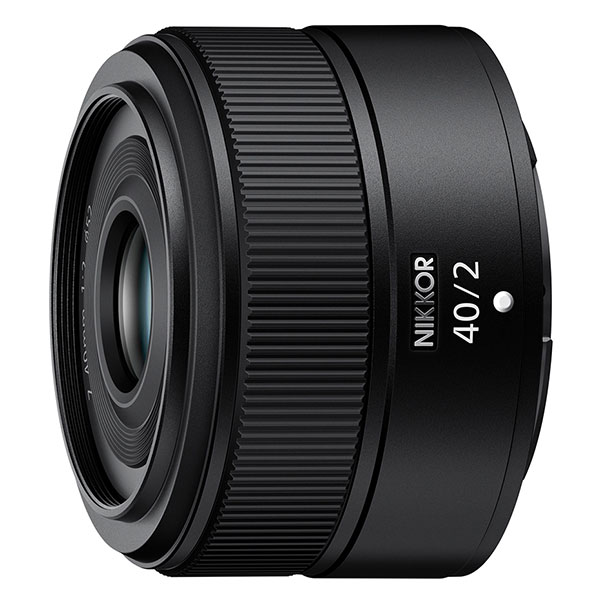 | Nikon Z 40mm f/2 Pros: Very nice all-rounder, very interesting focal length, adequate image quality Cons: SE stand-off version, pitiful construction Opinion: A super interesting focal length, longer than the 35mm, but shorter than the 50mm. One of my favorites, since it allows you to shoot with an "all-rounder" lens, which can alternate between street and portrait set without great sacrifices. With the 50mm it would be limiting in one direction, with the 35mm in another. In fact, it is sold together with the ZF in KIT, designed as a unique lens, and what a KIT! It's a shame it's all plastic, and the SE version, called SPECIAL EDITION, is actually a plastic. Alas, I can't stand to ride with a jewel like the ZF, and to feel in my hand this snag with a gray painted plastic bezel that wants to emulate an old AI. I would have happily spent twice as much for a specimen with a decent construction. I understand the basic version, but why make the SE out of plastic? Why Nikon, why? Basically, it is recommended for those who want a compact 35\\50 mm to be mounted on a Z body and are aware of its CHEAP nature (although the photographic results are not at all), not recommended completely for those looking for a premium feeling from its lenses and a rewarding user experience. sent on May 10, 2024 |
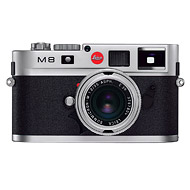 | Leica M8 / M8.2 Pros: CCD sensor absent from m9 problems, Leica feeling Cons: Technologically outdated, cumbersome use, asp-h sensor Opinion: What can I say, a camera that can make an enthusiast happy, but that I honestly wouldn't recommend. The technology is now outdated, the use is really tedious, the asp-h sensor is limiting, difficult to shoot at non-native isos. A set of limitations that honestly led me to use it little or nothing during the time I had it at home. On the one hand it has no problems of corrosion of the sensor present on the M9, so even a used one can be bought without particular fears, on the other hand it suffers from hot pixels that require a little more than an annual visit to the Leica centers for remapping (which you cannot do on your own). Just search the net for "leica m8 green pixel" to realize what I'm talking about. Summing up all this, honestly to experience the thrill of a CCD sensor I would buy a canon 5d mark 1, and I would leave this one to extreme enthusiasts who for collectors might want a specimen. sent on April 11, 2024 |
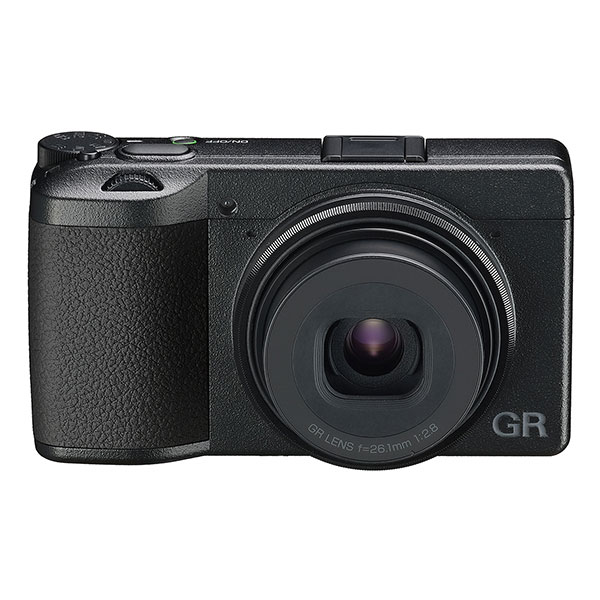 | Ricoh GR IIIx Pros: image quality, PERFECT size, simulations almost at Fuji levels Cons: Lack of viewfinder, battery life, very "modern" feel, lack of swivel screen that would have made the difference Opinion: What can I say, a CRAZY camera. Finally a real "compact". I laugh when they call an X100V or Q2 "compact". What is compact about them? Absolutely nothing, because I defy anyone to fit such a camera into a "pocket". If they are then used with lens hoods or various other ammeniconi, goodnight. This has always "stoned" me with the cameras mentioned above, although the undoubted quality of both, and the pleasure I used in using them. But let's be serious, they are NOT compact cameras, and they don't have anything more than a camera with pancake lenses or the like attached. Here we are really in front of a compact camera that can fit in any leather jacket, in the inner pocket, perhaps going out on a motorcycle. Unfortunately, these dimensions are paid for with a lack of a viewfinder and a general feeling of "approximate" shooting, far from the above-mentioned. It feels like shooting with a full-fledged smartphone, but with an image quality that is unattainable for the latter. The film simulations are also beautiful with a system very similar to the Fuji. The battery life is a "minus" but honestly negligible, if I want to take hundreds of photos for a whole day, I take something else with me. For the use for which it is intended, it seems to me to be more than acceptable. sent on March 18, 2024 |
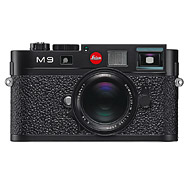 | Leica M9 / M9-P Pros: Colors and unique CCD sensor, Leica feeling Cons: It's a nightmare to find a specimen that doesn't turn out to be a condemnation Opinion: Taken years ago by a "super reliable person", with a sensor replaced by the parent company, it actually arrived at home with more corrosion than mpx. After curses and other things, I manage to have it repaired by a specialized laboratory, with the result of seeing corrosion appear again after a few months. A nightmare for all intents and purposes, if I'm honest. Leica no longer manufactures the sensors, and it is not possible to determine "from which year" the sensors are actually final (apparently it seems to be possible by asking the Leica Store), as it is not possible to determine whether the repairs made above are valid or not. Given the not exactly cheap cost in which they are used, for me it would be madness to recommend their purchase, unless a SCRUPULOUS attention during the purchase phase, with painstaking search for even the smallest sign of corrosion present in the sensor. Realistically, by now, a replaced sensor, if it belongs to the faulty specimens, will have already shown signs of corrosion. You only have to shoot at f11 a sky to realize this. I don't comment on the Leica feeling, it's well known and it would be superfluous. sent on March 04, 2024 |
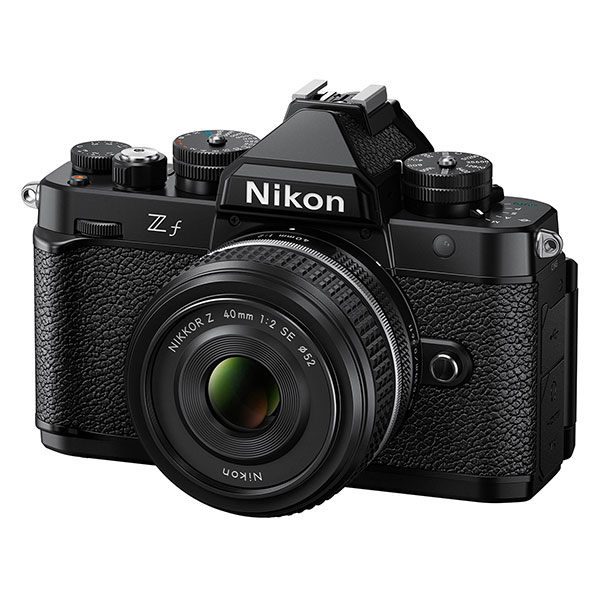 | Nikon Zf Pros: It's a z8 with a very good sensor... Cons: Which you can't use. Opinion: Useless to make great digressions, I had written a long review that unfortunately was deleted. The ergonomics are ridiculous, to the point that I came to sell it after months of summer inactivity. The body is a bar of soap, there is no handhold, and in a camera intended to be used with one hand because of the manual focus, for me it is a HUGE defect. I could have solved it with grip and the like, but I might as well buy something else if I have to distort the aesthetics of a car in this way. Which they also knew, given the negligible cost of the official grip sold by Nikon, a more unique than rare case. To this we add a menu that I would call cryptic to say the least (really there are those who complain about the Sony or Fuji menus, when here the electronic shutter is hidden in SILENT MODE in a submenu among the general settings ? ), a non-existent lens park (do we really count the SE lenses with gray plastic ring to simulate a vintage look ? ), And the omelette is done. An excellent gadget to place on the shelf, nothing more. To date, Fuji offers a vintage experience that is vastly superior to Nikon. And I speak disappointed, having invested in this body practically at the time of presentation, with great enthusiasm. sent on February 28, 2024 |
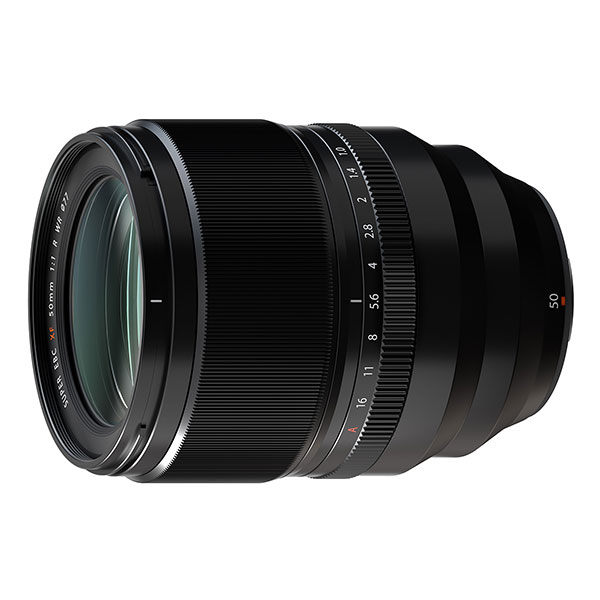 | Fujifilm XF 50mm f/1.0 R WR Pros: Impressive IQ for a 50 1.0m, very usable at f1.0, few acs, very solid construction Cons: Exaggerated size for Fuji bodies, lack of stabilizer, too bulky lens hood, little sense compared to the 56 Opinion: Excellent lens but that in my opinion wants to launch into trying, badly, to ape a high-level portrait lens for FF, not succeeding. The dimensions are gargantuan, poorly manageable on bodies that are not of the XH series. Even on the xt5, despite the pronounced grip, the balance is very precarious, and with the lens hood mounted the whole thing is quite ridiculous. We are light years away from a "fifty". It should be understood to all intents and purposes as an 85mm, too bad the compression remains that of a 50mm, with "strange" results. The image quality is stellar, perhaps one of the best 50 f1 0.95 around, although alas the DX sensor thwarts its chances in my opinion. Given the size, I assume a safe cover of a larger sensor, which would really do justice to such a lens. The price is falling inexorably, given the specificity and the little difference with the 56 1.2, which I would undoubtedly prefer in a generalist context. In conclusion, it is a lens that I did not understand well, and like many others, given the numerous specimens on sale almost new in the various markets. It nullifies the sense of a Fuji body by throwing away portability, usability and discretion during use, prerogatives of this system. To make portraits from a standstill there are other systems and other lenses... sent on February 08, 2024 |
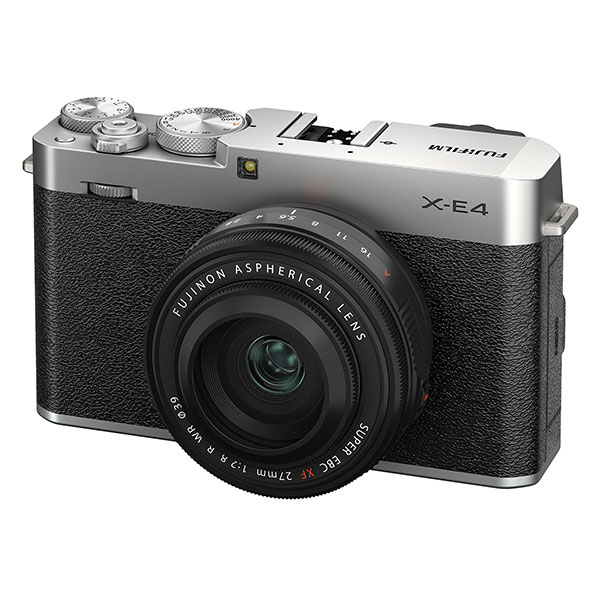 | Fujifilm X-E4 Pros: Usual great fuji sensor, high build quality, compactness Cons: Revised ergonomics, inadequate viewfinder, missing keys perhaps too many Opinion: Too bad, a really wasted opportunity. Will they fix it on the xe-5 or just don't make it anymore? Good question, which for now has no answer. The camera is excellent, the construction is a cut above the xe-3 (even the price), AF and general operation are excellent, but, there are some buts. There are very few buttons, to the point that changing settings will become frustrating. At least an af\\mf selector I would have sincerely placed. There's minimalism to spare: exposure ring, shutter speed ring, a front wheel and little else. It becomes difficult to extricate yourself with the electronic \\mechanical shutter, exposure reading and other settings, it is inevitably necessary to resort to the Q button, which I have never used sincerely until this camera. The most downside, however, is probably the ergonomics that leave something to be desired. The machine has no finger holds, neither front nor rear. It gains in beauty, it is sincerely a design object, but operationally it is not. A thumb-rest is required to be able to use it with one hand. Another sore point is the viewfinder, which would have deserved a higher quality. For the rest, however, apart from a few flaws, it is certainly a machine that can give great satisfaction and that I recommend. sent on January 19, 2024 |
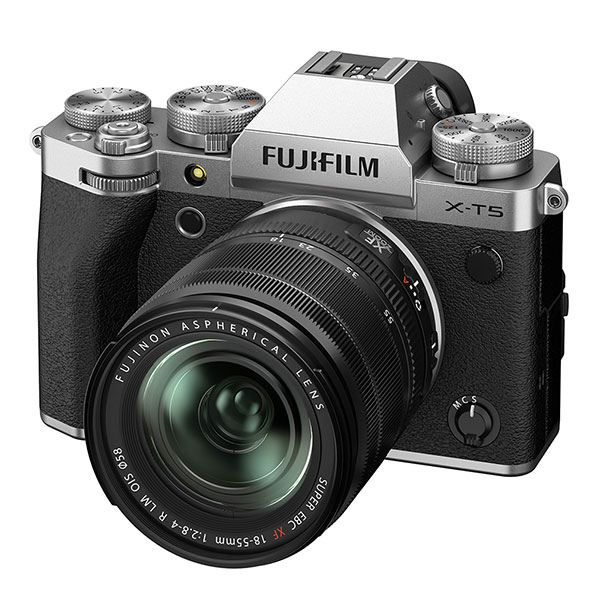 | Fujifilm X-T5 Pros: Ultimate Iteration of the XT Series Cons: A menu that has now become cryptic and requires a university exam to understand it Opinion: What can I say, they solved the problems added with the xt4 and its bizarre LCD, now we have the refinement of the xt3. The 40mpx sensor is an addition that I think anyone would have done without, but that little bit of extra resolution is always handy. It's a shame that the size of the files has become "important", and the SD cards, shooting jpg-raw, are quickly emptied. Solid keys, improved grip, I don't really know what more could you want. I prefer the rangefinder, but for now, Fuji doesn't offer a viable alternative. The stabilizer not brutally effective in videos, I would have expected something more. The price is perhaps the only real "stumbling block" to date, clashing with FF alternatives, inevitably better as ISO increases. For those like me, however, who use Fuji exclusively for their film simulations and JPG shots, it is a sacrifice that can be made. The only drawback for me is a menu that has now become so rich in settings that it is really difficult to understand. Without using online guides, it is almost impossible to use the camera body. Trivially, already turning off the camera you lose the settings, as if they were "temporary", which can certainly be solved through some settings, but which I have not yet found. The rest of the menus are now eternal, and without the slightest explanation that would have certainly helped (classic info button...). AF, on the other hand, is also very usable in a work context, used to photograph a boxing match with a 100-400 and did not take a photo, it was also about time. In conclusion, definitive iteration of the XT system, a must-have for Fuji enthusiasts. For the others who are not interested in the world of film simulations, now with these figures, I would turn to something else. sent on November 01, 2023 |
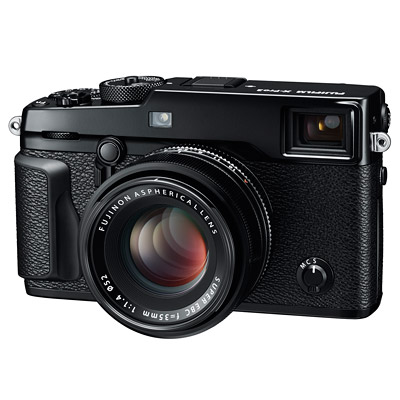 | Fujifilm X-Pro2 Pros: The best xpro, detach the xpro3 Cons: extremely delicate finish, viewfinder that crumbles even just to see it, software deliberately castrated by Fuji Opinion: A beautiful machine, which could have been serenely a definitive machine if Fuji had not decided to abandon the idea of Kaizen of some time ago. Abandoned and deliberately castrated in functionality, simply inserted through updates, but never done. There are no film simulations, no color temperature management features, so many things are missing... But the body is perfect: full of keys, all reachable, and so solid! See for yourself the difference in construction between the xpro2 and the xpro3, find an extremely clear video on youtube. Every door, every button, every bezel, is all GRANITIC. The shutter itself clicks with a sound of a beauty that today I struggle to remember in other machines. Unfortunately, however, a GORGEOUS body has been weakened by a ridiculous viewfinder coating, which crumbles after a thousand shots, and is not even replaceable. Or rather, it is but through the use of cyanoacrylic glue, because making an interlocking system would have been too simple, so no! In fact, the ones you will find for sale will all have no eyepiece covering, and it is quite inconvenient to use. At the time I replaced it myself, but still a rough solution, clearly crouched. For the rest, note how the xpro2 also mounts the best optical viewfinder produced by Fuji, with the best magnification ratio, higher than that of the xpro3 (why remains a mystery). Digital viewfinder instead not excellent, but I do not see why use it sincerely ... Without dwelling on the machine, if you have the opportunity to try it do it because today it is the best Fuji interchangeable optics for NON-professionals (but if you want given the double slot you can also use it for something serious), and for film simulations just set in the name the values to be entered in the color temperature, and you can bypass the SHAME that fuji has not added through software update the ability to tie color temperature values to the various custom settings (something present on newer and low-end bodies for other ). At the right price it can be a nice toy to keep. I much preferred it to xpro3, incredible chip... sent on February 22, 2023 |
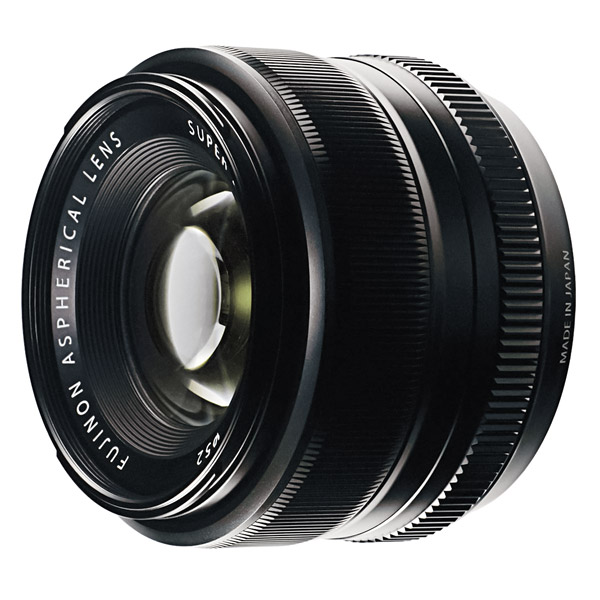 | Fujifilm XF 35mm f/1.4 R Pros: must buy for those who only use Fuji aps-c Cons: af slow and noisy, not tropicalized Opinion: What can I say, everyone has talked about it, and let's throw down two lines! I had this 35 some time, and I confess that in the ocean of material I have, sometimes I went out with him tied to an xpro-2. Magic! It reminded me of a great voigtlander, a vintage lens, something special, a Canon 50 1.2, something artistic, picturesque, not very precise, but so pleasant... Did I return? It has some defects for heaven's sake, the AF is very slow and probably not too resistant (go and understand when the specimen that arrives in your hands was produced), but the photos it really takes let you forgive EVERYTHING. Among other things, it should be noted that the dimensions are very compact, useless to try to describe it, look for a comparison on the net with other lenses you own. It does not even cover the optical viewfinder of the xpro in a particularly invasive way, to get an idea. For me it is an excellent lens of character, vintage, but with the addition of a decent autofocus for amateur use. I had the opportunity to compare it to the new 33 and obviously it comes out defeated for professional use, where the 33 clearly outclasses it with regard to the management of aberrations and backlight, AF speed, various distortions ... It should be noted, however, that the 33 is practically double if not triple once the hood is mounted in terms of size, and it is a factor to take into account. If I went out with the xpro tied around my neck, I wouldn't think half a second about leaving 33 on the bench in favor of the old 35. For this reason, I also believe they are lenses that can coexist in a kit, and I do not see them overlapping, so much so that Fuji is continuing to produce both. If in doubt, if Fuji aps-c is your only kit, a walk taking two photos I would do it, for what it costs then now used ... sent on February 22, 2023 |
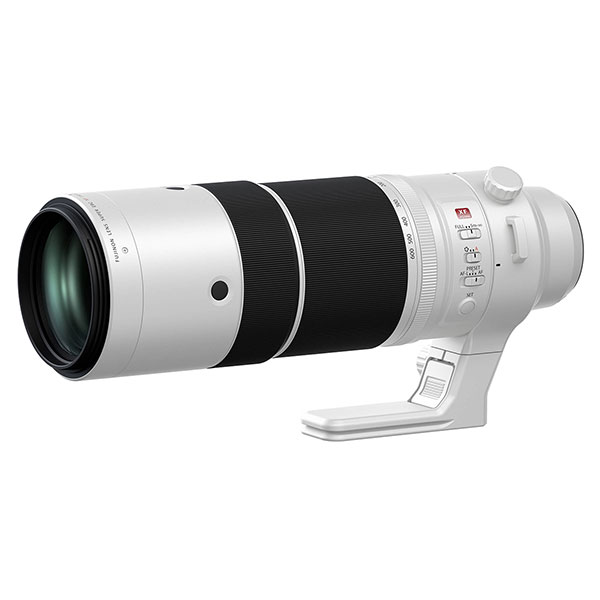 | Fujifilm XF 150-600mm f/5.6-8 R LM OIS WR Pros: excellent sharpness, internal zoom (but now they have all zoommons) Cons: dark, plastic, pachydermic AF on pre-xtrans5 bodies Opinion: What can I say, total disappointment. Pulled out of the box, I immediately heard "cra", lifting it up. Settling noises of the body, which to define it plasticous is to say little. If it didn't say Fuji, I would have serenely thought of some Sigma lens from the early 2000s. I understand it does not belong to the professional series (although the cost of € 2000), but really, here we are at really mediocre levels. The Fuji 100-400 for example is another galaxy. For heaven's sake I do not doubt that the white color helps not to dilate in particularly hot environments, I do not doubt the weight that has gained, but here it is all plastic, at this point I buy a Tamron ... As image quality we are, you will split "the hair" to be honest, but unfortunately F8 feels and also a lot, and although the focal range is a lot on aps-c, at intermediate distances the blur is not rewarding, and you will always tend to work at 500 \ \ 600mm. When the light goes down you will not take pictures, you want for the opening, you want for the focal range, you want for the yield at high periclitante iso of the Fuji bodies, you want many things that sincerely make me think: at this point it is not convenient to buy a used d500 and a 200-500? I leave for last then the sore button, that is the autofocus, absolutely unsuitable and insufficient on pre-xtrans 5 bodies. Used on Xt-3 it was better to stay at home, in fact it accompanied me for a single outing before ending up on the market. Probably the usability on a body like the xh-2 is different, but does it really make sense to invest figures of this kind with all the competition there is? For heaven's sake, this zoom is definitely a welcome addition to Fuji's lens park and will make many people happy in the future, but right now it is a lens that needs a TOP body to be used, which for other brands it is not. Even on "entry level" bodies it is possible to enjoy the "zoommons" with pleasure, with sometimes questionable limits compared to the flagships with super-luminous canvases attached. The Sony 200-600 was mentioned, but I used it serenely with an a7r2, decidedly old body, without missing a beat. Clearly with the A9 it was another thing, but the shots were possible to take home even with the old a7r2, which I often did. With the xt-3 and the 150-600 instead, I really found myself going back and forth to photograph static subjects, a torture that made me return home after a few minutes. sent on February 22, 2023 |
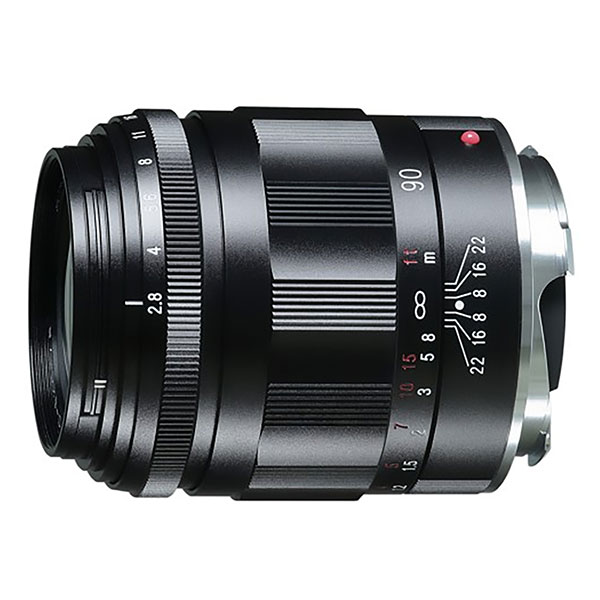 | Voigtlander VM APO-Skopar 90mm f/2.8 Pros: amazing optical performance, tank construction, dimensions from 50 1.8 Cons: nothing... Opinion: I follow the previous review. Amazing lens, a 90mm easily usable on rangefinder without burning practically never thanks to the f2.8, while maintaining an excellent blur. Beyond that, it lends itself beautifully to fit on any system given the leica-m draft, and the truly laughable size of the whole does not turn it into a distressing experience with small bodies such as Fuji xpro or xe. It is much smaller than it seems, simulate the size or see photos, it does not make the idea otherwise. On the optical and construction quality there is not much to say, it is an APO and it is Voigtlander, sum up. All this then, obtained with 7 lenses in 7 groups, therefore with the ability to pull out dizzying black and white. In my opinion a lens to have from ANYONE if you do not fear manual focusing and are looking for an all-rounder lens, which can range from landscape to portrait, with focal length above the classic 50mm. You throw it in your bag and forget it, unlike for example a classic 85 1.4, which you will struggle to forget given weight and size. Turning to 85 1.8, I doubt you can find anything manual with this level of yield. But anyway, I struggle to think of a lens that can really "fight on equal terms". Construction, optical quality, dimensions, versatility... for me a 10\\10 sent on November 30, 2022 |
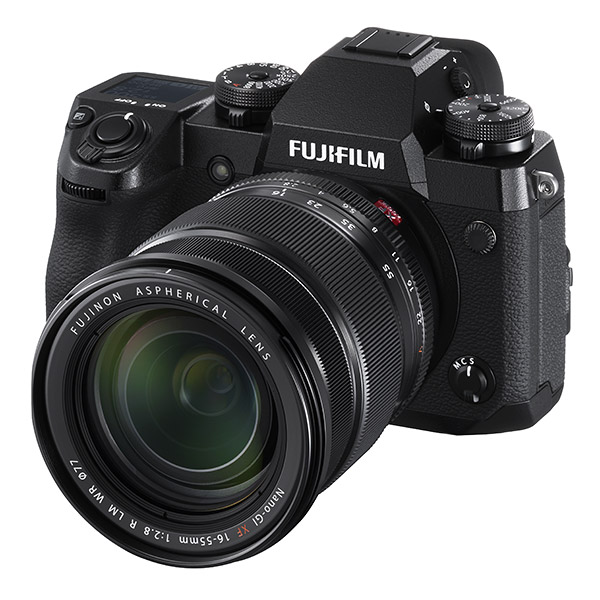 | Fujifilm X-H1 Pros: The best Fuji aps-c ever produced if you are looking for a "Pro" tool Cons: That they haven't updated it enough Opinion: It's a brutal machine. It has a body that cannot be described, you have to hold it in your hand: it exudes solidity in every aspect, from the rings, to the buttons to the tires. It has an infinite amount of buttons, an exceptional viewfinder, a stabilized sensor, not even an empty corner of the car. One of the last machines that Fuji produced saying "we want to do the top!". Too bad an AF department not exceptional, but that is amply sufficient for 99% of uses. Very convenient BG that contains 2 batteries, to which to add the one present in the body, which compensates for a not exceptional duration of a single battery. Too bad only for Fuji who has castrated the possibilities by not updating the film simulations section to probably push the sales of his other bodies. I recommend it with my eyes closed again instead of xt3 and xt4, without the slightest doubt. Among other things, right now it is at the price of the xt3, crazy stuff ... sent on November 10, 2022 |
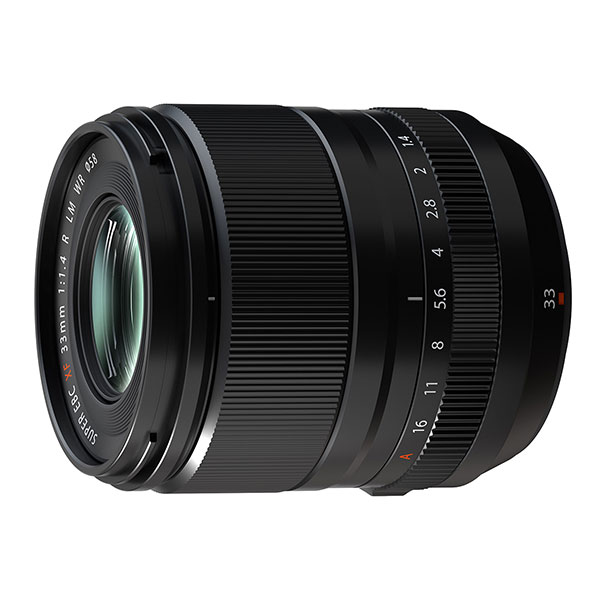 | Fujifilm XF 33mm f/1.4 R LM WR Pros: AF finally level, excellent construction, indisputable optical quality Cons: dimensions... Opinion: Optics that finally combined with a recent fuji body seems to say "I'm like sony!". In fact, the feeling will be the same, and I also want to say: it was time. Unfortunately, however, all this is paid with dimensions not really "contained", unlike the previous 35 1.4 which on balance is about half. Personally, in fact, I preferred to keep the old model (not yet understanding if both will remain in production or will tend to replace it), since the dimensions are priority over the AF. I do not doubt, however, that to some matrimonial players such a lens could be extremely convenient, so they will have pondered that a few more cm was expendable. On optical quality, I do not particularly pose the problem, I use the XF system always with film simulations, I do not notice the optical subtleties. For that, I have other machines and other lenses, and so it should be for everyone. If you look at the edges of the frame, you have the wrong system. However, nothing to complain about, we are probably a step above 35 1.4. sent on November 10, 2022 |
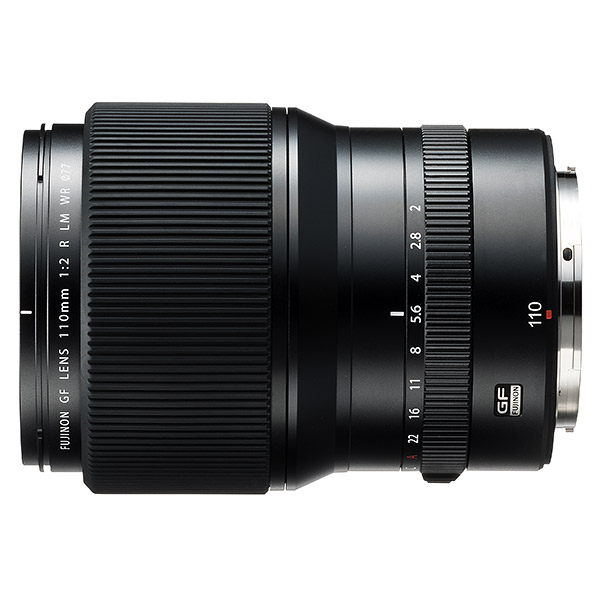 | Fujifilm GF 110mm f/2 R LM WR Pros: Optically gorgeous, granite construction Cons: Hood too large and ambiguous feeling Opinion: What can I say, it is a lens for naked and raw portraitists, it occurs to me to compare it to the old 85 1.2 of Canon: you make portraits and stop. In the hands of a professional can give paintings and money, in the hands of an "enthusiast" can quickly turn into a nightmare (I slip in the middle). The dimensions are exaggerated for any use that is not professional, so forget about using it as an 85 that you keep in your handbag to make the portrait to the cat if necessary. The autofocus is LM so quite fast but probably the camera bodies castrate the already few capabilities of this lens, and unless you have the gfx100\\100s (which I doubt you would carry with you for anything else that are not well-paid jobs), we are talking about a real sloth. The price is then in line with other recent professional portrait lenses of Canon, so I do not demonize it, around € 3000 Fuji Italy, but probably about € 2600 at the "street price". Although I took it at 1800€ from the usual Dutch site that when Fuji does cashback goes crazy, I resold it and I do not miss it. Optically it gave me the impression of being a "refined" 85 Art, with the same sharpness and creaminess, but with tonal passages and progression of the blur much more beautiful, a la Canon. A perfect combination between an "artistic" lens and a "precise" lens. The dream of every portraitist? Probably yes, and as mentioned at the beginning, in the right hands it is a weapon to carry paintings and money. However, I do not see it in the hands of an enthusiast, who can have fun with many other lenses with a much lower cost, juggling the monumental GFX sensor with the lenses he prefers. sent on November 09, 2022 |
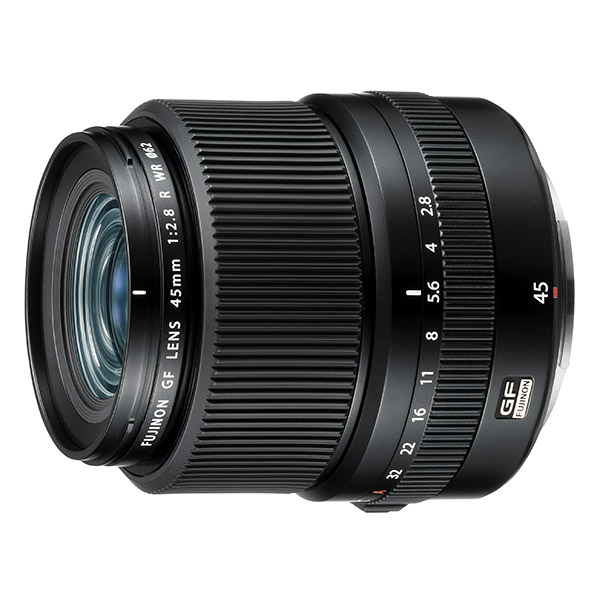 | Fujifilm GF 45mm f/2.8 R WR Pros: Outstanding as every lens in the system Cons: Ridiculous AF, 2.8 aperture... Opinion: Amazing lens at the optical level, MF ring very comfortable, granite in construction but ... Is it worth it compared to the 50mm? The AF is cariola while the 50mm is LM, and the difference in use is important. It is much larger, the hood is a plasticozzo, and in general the yield is better than the 50mm, but by how much? In my opinion not to justify the double outlay in the used and triple to the new, and in general the usability. I think it's a bit unfortunate and needs a revision: I would see it well f2 and with LM engine. There it would make sense and a person could justify the sacrifices compared to the 50mm. To date, personally, I do not see the sense. sent on November 09, 2022 |
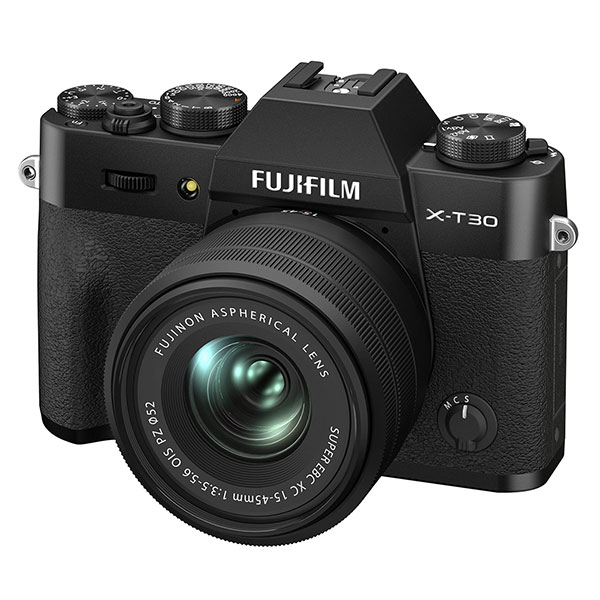 | Fujifilm X-T30 II Pros: It has the Fuji X-Trans4, costs the right, body still made to be ergonomic and not just cool Cons: honestly nothing for the price at which it is proposed Opinion: For me one of the best Fuji machines, castrated a bit by the ambiguous name that brings back to a cheap segment and that deserves much more. It is very small, but every point of the body has been exploited by inserting a button, just see the images. You will have everything at your fingertips, although the "neophyte" inclination makes you turn up your nose, with a lever to put the machine in automatic that you could have saved. The feeling in general is to have a "cheap" car in your hands, but honestly it is not that the feeling of the Fuji TOTL is now from Leica. It seems to me that the proud "made in japan" that distinguished them has been lost a little. Note how the grip is really good, unlike for example the xe4, which has become a brick and not really easy to hold with one hand. It also has "definitive" film simulations, in order to have selected color temperatures for each custom setting, without having to use various tricks to remember them. It can therefore be an alternative to the xe4 for those who want a better grip and do not appreciate the rangefinder style. On the quality of the sensor I do not express myself because it is the usual excellent x-trans 4. sent on November 09, 2022 |
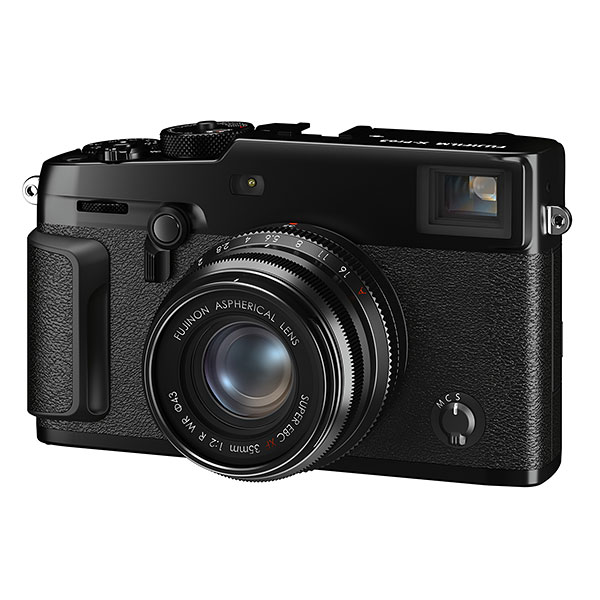 | Fujifilm X-PRO3 Pros: it's beautiful to look at Cons: downgraded viewfinder, keys gone, front dial not clickable, LCD opening mechanism destined not to last, eyepiece always ruined after even 1000 shots, ridiculous doors compared to the X-PRO2, film simulations not updated Opinion: Fuji is plummeting. Common sense would have it that a brand improves its products, not that it makes them worse. Well, Fuji is a specialist in this. Take the x-pro2, a fantastic machine with few flaws, add a mountain of other problems, eliminate interesting features and... Here is the X-PRO3! Pass the screen and the hidden LCD, which is very cool that I would have appreciated, if it had not been for an "insecure" mechanism to say the least, and a poor customization of the screen. Using Fujixweekly's film simulations, I was always anything but in sight, almost never fitting what I had selected with. In the end, you will find yourself using it as a normal OLED LCD, with shooting data and various settings, as if it were a top screen (not bad then but not really nostalgic). The problem is that the machine is half empty: they removed a lot of keys. The D-pad with the central "Menu" button is missing, "delete" is moved to the top, AF-L and AE-L become a single button, the front dial is NO longer clickable... You also slap me at this point while I buy it right? You find yourself in your hands a machine that is literally EMPTY, you perceive that there should be keys that have been deliberately removed. ISO ring still NOT updated, therefore always unthinkable to rotate: in the end out of desperation you will leave it on A and you will forget it (to say the new ring of the x-100v that once raised remains so and does not return down at every step). Even the construction has dropped in quality, just think of the doors no longer snap and spring, but dangling and ready to detach (there is a video on youtube that you can find that compares them). The climax then is that there are NO film simulations that instead are on xe-4 (which should be the younger sister), xt-30ii etc. I serenely advise you to buy the previous model, but it is deliberately castrated in film simulations and other features related to settings, such as color temperature to be set manually every time etc. But at least you will have a solid and functional body. I've had so many cars, but this was without a doubt the biggest disappointment. sent on November 09, 2022 |
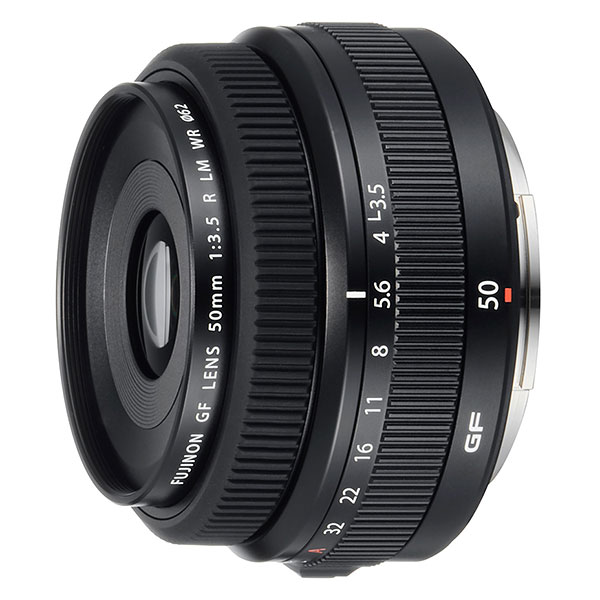 | Fujifilm GF 50mm f/3.5 R LM WR Pros: Solid Fuji GF style construction, diaphragm ring proportionate to that of the MF, record-breaking optical rendering, small dimensions Cons: No one sincerely... Opinion: What can I say, an exceptional lens with virtually no flaws. Amazing, although the size is far from a normal "pancake" to which we are accustomed on FF. The yield is perfect, zero distortion, zero aberrations, zero vignetting: perhaps a step below the brother GF 45. Honestly, however, everything is recoverable very quickly in PP, so much so that I am undecided on which of the two to keep. Excellent extremely fast autofocus, which is not obvious in the GFX system. The only negative note is clearly the price that is light years away from the 50ino Nikon 50 1.8 D or the 50 1.8 Canon, but the quality you pay. Here we are in the field of "flawless" optics, and rightly all this comes at a price. sent on September 27, 2022 |
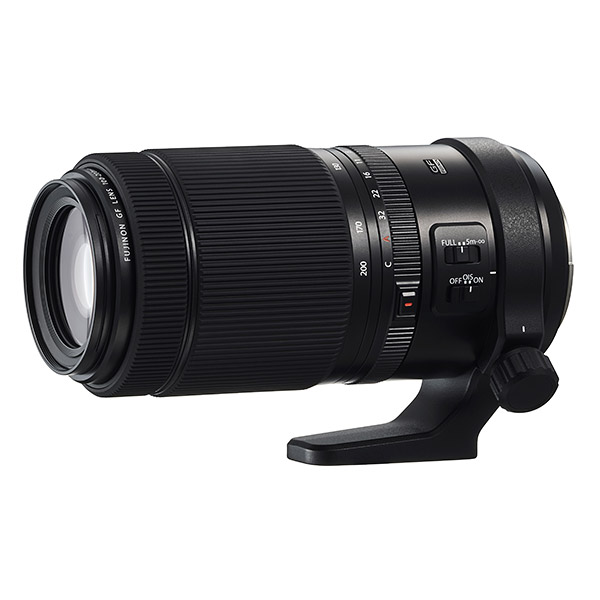 | Fujifilm GF 100-200mm f/5.6 R LM OIS WR Pros: So many fixed together, IS exceptional Cons: Dark Opinion: Lens taken at a ridiculous price from a Dutch site, during a triple cashback\\various discount, and what to say, I'm more than happy. It's not the classic 70-200 for FF, we deviate from that kind of photography. The real limits are due to the opening, but if it had been different, it would necessarily have required different weights, dimensions and costs. The IS works to the point that you can shoot with the gfx 100 even at 1\\30 without problems at 200mm, and this says a lot. Comfortable internal zoom and excellent AF speed, as well as tropicalization of a level much more than professional. There is little to say, a lens highly recommended to those who own the system, to be used as a true "handyman" but of unattainable quality on FF. sent on September 02, 2022 |
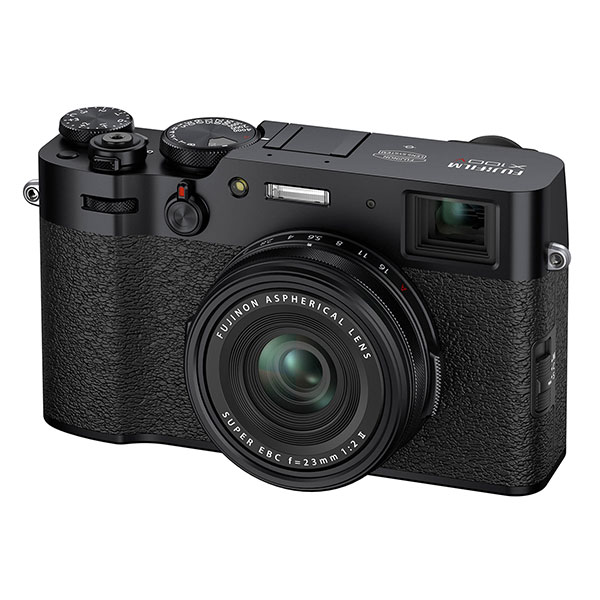 | Fujifilm X100V Pros: The ultimate compact Cons: AF still limping, shutter button loose, black screen of 3 seconds after using "clarity", android app still ridiculous Opinion: By now everyone has talked about it and yes, it is worth the money it costs. Personally I also doubt that Fuji 23mm fixed lenses combined with a body with x-trans 4 can give such a result. The "welded" lens is truly amazing. Unfortunately, some critical issues remain, such as an AF that is definitely unreliable indoors, a "clarity" that inexplicably makes the machine unusable for several seconds when used in fur simulations, and an app that simply does not act and nullifies the "leaving home without a PC by moving the photos on the tablet \ \ mobile editing the JPG on the fly". Constructively it is so beautiful, but I do not understand why the shutter button should give such little confidence, shaky everything, despite the proud "made in japan" written below. The most important part of the machine seems to have had the least attention. Much less with the additional keys above, which make it really difficult to clearly perceive the "the wall", the end of the pre-race, as it is called in photographic jargon I do not know, but I hope you understand. I've often found myself shooting inadvertently, and if you have film simulations active, it's annoying to suddenly see the camera stall a couple of seconds. Overall it is a fantastic car but not without flaws, which however is simply unrivaled. It also has some goodies such as the leaf shutter, a retractable ND filter, an interchangeable optical viewfinder (whose usefulness seemed poor to me but which I re-evaluated) that help, but I do not personally consider "killer features". The real strength of this machine is a very weatherproof body, a great sensor, an amazing lens, and film simulations. The rest could also have removed it. sent on July 06, 2022 |
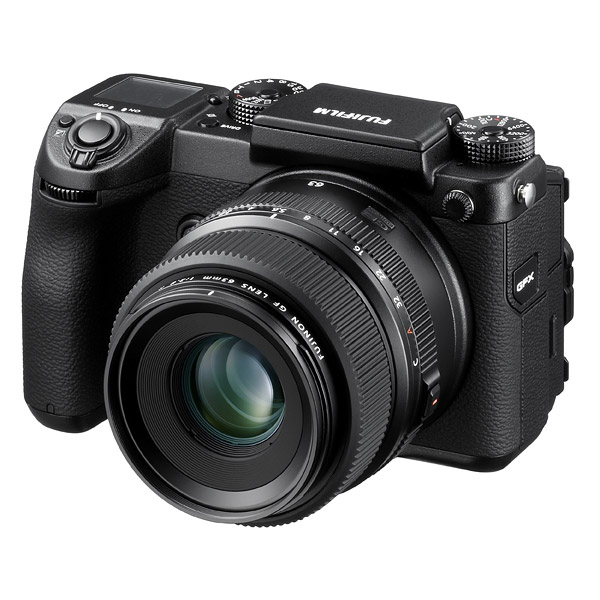 | Fujifilm GFX 50S Pros: All Cons: Viewfinder too large, deep screen, lack of EV compensation ring, temperature not adjustable in personal profiles (but pinnable in the name for a quick change) Opinion: What can I say, going back to the full frame will be very difficult. Camera taken for an occasion, after chatting with a long-time photographer who made me pick up the monkey. There is little to do, between this and an excellent full frame like the A7R2 there passes, and quite a lot too. The larger sensor makes the difference and not only that, the 4:3 ratio allows vertical photos on unthinkable FF. The three-dimensionality of the photos is another thing, only by taking it you can realize. The body is record-breaking, light years from the 50s2 (tested in the store 2 minutes and laid), with each granite key in its seat, an infinite amount of customizable keys, rings, submenus: there is everything. Even the depth and the overall dimensions in the end are not limiting, we are at the levels of a classic REFLEX (and perhaps less). The real problem lies in the crosshairs which is exaggeratedly large. In addition to the size it is also inconvenient to use, being the rubber front too thick, and at least to me with the glasses it made it difficult to use. Not bad because the LCD is record-breaking, sideways distant from those mounted on Sony, and allows use even in the sun. I therefore found myself leaving the house without a mounted viewfinder, with a very light body, and a MEDIUM FORMAT rendering. The articulated screen on each axis is really comfortable when you want to shoot vertically (which will happen in 90% of cases with this machine). The AF didn't even seem slow to me. Obviously not comparable to the various modern FFs, but still usable to work without particular problems. Another advantage is the amount of excellent lenses that can be found on the market capable of covering the SFF sensor (super full frame), which allows you to avoid the instant purchase of native GF lenses, beautiful but particularly expensive. I don't know what to say, I was ecstatic and every photograph I would like to print it. The great limitation that comes to me is the difficulty of using it in low light. In fact, the lenses are all particularly dark, and the huge 50mpx sensor not stabilized, will capture the slightest movement. If you have the handle, you will hardly be able to shoot under the reverse of the focal length, and when you have f2.8 lenses, it becomes a problem. Although it is intended that the machine holds up without problems 12800 iso, which really amazed me. Merit of the elaboration without a doubt, which in addition to allowing hallucinatory film simulations (on which I avoid to dwell), works in an amazing way even under normal conditions. What can I say, give it a chance if you are amateurs or professionals working in controlled environments. You will not regret it. sent on June 20, 2022 |
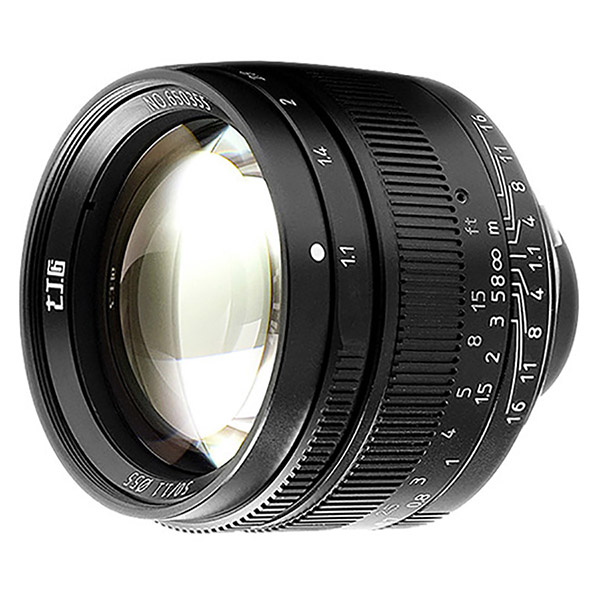 | 7Artisans M50mm f/1.1 Pros: 12 diaphragm slats, double nature, construction Cons: in relation to the price null Opinion: What can I say, a lens that amazed me. Reading about it on the net, it seemed that I had found a patacca in my hands, but it is not even remotely so. The lens changes nature between f1.1 and f1.4. At maximum opening the bokeh will be jagged, it reminds me a bit of the helios with its "swirly bokeh". If used, however, without particularly punctual and repetitive backgrounds, it is easily usable with a detachment and a record-breaking pastiness. Closing at f1.4 instead this characterization of bokeh disappears, and we will find ourselves 12 slats that round everything and make it magical. Perhaps one of the best yields ever seen with a 50 f1.4. Infiltrations disappear, contrast drops, it truly becomes an excellent lens, with a bokeh whose optical aberrations are reduced by the presence of diaphragms. Beautiful, beautiful and really beautiful. Obviously demanding a uniform yield from edge to edge on a similar lens is out of place, buy more. It also performs well on Sony, but obviously the edges are of lower quality than you could have on Leica, and frankly I do not recommend its use for genres where they are of fundamental importance. Give it to you if you want to have a multipurpose lens with a double character. You will have in all respects in your hands a vintage artistic TA lens, and an excellent 50 1.4 with compact dimensions in the rest of the diaphragms. The construction then is granite, all glass and metal, impossible to ask for more. sent on June 07, 2022 |
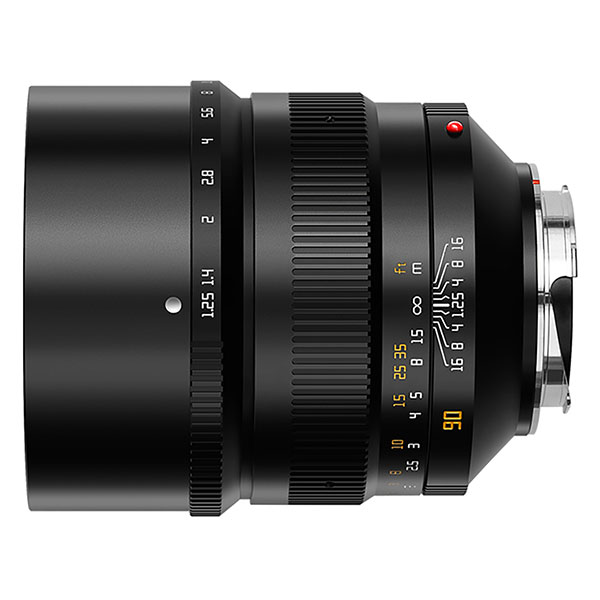 | TTArtisan 90mm f/1.25 Pros: the yield in general is excellent Cons: unwatchable hood, evident light infiltration, weight (but justified) Opinion: Beautiful lens, I am satisfied with it. Taken a bit on a whim, a bit to cancel the boredom of years of "photographic piattume" and try to find stimuli to go out to immortalize something, it really amazed me. I am a little masochistic and I confess to having tried many of these "cinesate", often reselling them without particular patemi. This time, however, I think the matter will go differently, because the lens is really exceptional. You can not ask for a sharpness from edge to edge, nor to use it for architectural photos, we are serious and we use the objects for the purpose hypothesized in the design phase. If you are looking for a surgical lens, turn to something else. If you are looking for a brush to use for your portraits, think about it. The Leica-M mount allows it to be used on all mirrorless cameras in circulation, from Sony to Fuji GFX. I personally use it on Sony, and despite the non-"native" sensor (for those interested in the filter issue I leave it to Google to clear the mind), the results are exceptional. The edges are not particularly sharp, but as far as I have seen it is little to blame on the body, since the defect is also present used on Leica. The center and the half frame, however, are excellent, in my opinion sharp enough to allow portraits even at maximum aperture. We are not obliged to shoot TA with the subject in the center, which unfortunately is present on some Chinese lenses of this type. We are in addition to the various Chinese lenses released in recent years whose photos at maximum aperture were more for whim than for real utility (I am reminded of the 50 1.1 Artisans). The contrast is great and you can churn out the photo without any particular tweaks. The construction is very solid, even too much for my taste. If you do not have a quality adapter, to rotate the rings will dance everything in your hands. I use it with techart pro on Sony and it moves it without problems, but we are at the limits. The aperture yield is not the best, but I personally do not buy a similar lens to use it at f2.8. The only drawback is the extremely limiting light infiltration. The hood is grotesque and truly Machiavellian in use, describing it would be impossible, and I therefore refer to one of the many videos on the tube. If it were just ugly, it would have been fine, the problem is that it does not have the slightest functionality. With a little experience and skills you can still take home the shot, and certainly the "serene" nature of the lens, does not presuppose a dynamic use. You can forgive her all this, in exchange for an almost unique rendering, and comparable to the best portrait lenses I dare say in history. The three-dimensionality is crazy, light years from the various Sigma Art. It reminds me of the Canon 85 1.2, which, however, is endowed with an incredible ability to spoil and get dirty, which led me over time to sell it. What can I say, give it a chance. sent on May 23, 2022 |
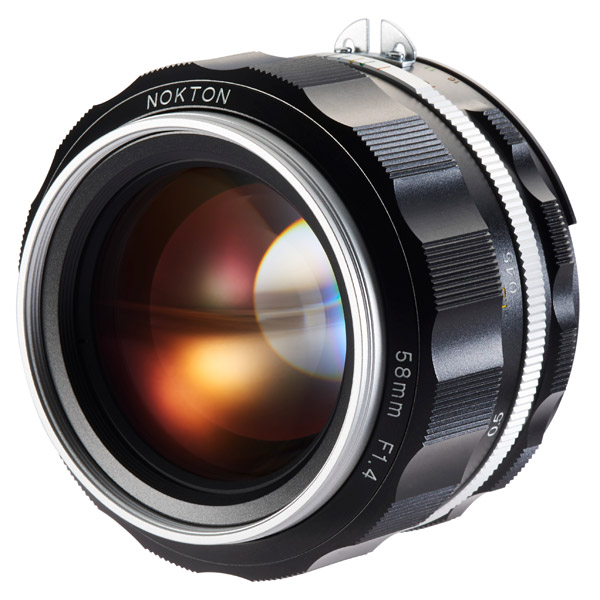 | Voigtlander SL II 58mm f/1.4 Nokton - S Pros: Three-dimensional yield, Zeiss style granite construction, style to be sold in the ai-s version Cons: Nikon mount only, non-stellar ergonomics of the diaphragm ring, hood sold separately Opinion: An optics that is a must for fans of the genre. Who has come this far, is not the classic chopper-photographs to be crushed at weddings with 24-70. It's not even the engineer (I blame myself) with the 8k monitor who wants to squeeze the pixel. No, who comes this far, it is because as in an eternal return, he has returned to the beginning, and wants to photograph with his soul, and does not need an optics, but a brush for his canvas. Forget optical perfection, Sigma Art style bokeh, and enter the world of micro-contrast and three-dimensionality. Try to take two photographs, with this and with a classic sigma-art, put them close, and evaluate which of the two seems more "real". I do not advise you to do this, because the risk of selling everything is there. Apart from that, the very long stroke of the MF bezel is pleasant, and the all-metal construction with clear reference to the old Nikon a-is. That said, and note the substantial "magical" rendering of this lens, we must also mention its negative aspects. Apart from the separately sold hood, ridiculous, the aperture ring is particularly uncomfortable, especially when used with mirrorless adapters. The lack of a "graspable" part of the lens, means that during the insertion and removal of the lens from the body, there is always a tendency to "force" through one of the two rings. They are not extremely limiting defects, but still present. The price, however, light years from a leica asph, justifies these small shortcomings. I would appreciate a modern version with sony fe mount, I'm honest, to avoid me adapters. One of the few lenses that I really sold with regret, but it would have been useless to continue to keep it in the case to mold, photographing grotesque masked individuals on the street. I add that the focal length is very interesting, an excellent middle ground between a 50mm and an 85mm. A bit useless in my opinion if used for half-length portraits, it excels in whole and set portraits, where the three-dimensionality reported ensures a result out of the ordinary. sent on January 06, 2022 |
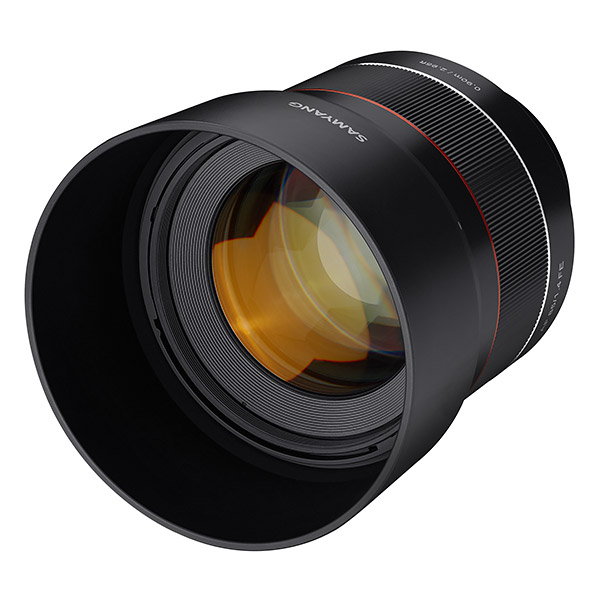 | Samyang AF 85mm f/1.4 FE/RF Pros: all Cons: He doesn't cook you Opinion: Yet another big blow from Samyang. The lens is amazing, used for the first time in a professional way yesterday, and I can only be thrilled. Autofocus is very fast, even in eye-tracking it practically never fails. The yield is fantastic, it does not have the invasive dominant ones of samyang 50 1.4 ( which is in its own way an amazing lens anyway), it has no chromatic aberrations, the photo is exploitable in all conditions. The very light warm shades do not find them annoying or limiting. The lampshed is extremely generous in size, which makes it easy to use in backlights and the like. It also is seamlessed without games of any kind, and conveys a feeling of extreme solidity. I personally didn't notice sharp falls or anything, and I used it in a quarry in full sun. So in my opinion, slow promoted with flying colors. I do not find the vignette highlighted by other reviewers. Maybe they've received some failed specimens, or maybe they don't have the active fix, I have no idea. Perhaps the only note of "demerit" is the construction, not at the level of a Sony GM, while still having its "dignity". Much better in my opinion, however, than the "first generation" Sigma Art. The general dimensions are not contained, it is still an "old style" 85 1.4, so it does not take advantage of the possibilities of mirrorless pull. I personally consider it a miracle lens, because with 500€ or so, having access to a definitive portrait lens, is simply a miracle. I confess that I took it instead of a Sigma 105 Art, sold as objectively unsustainable to use. I do not sincerely regret the 'downgrade', as the compromises to use Sigma were not, in my view, justified by an actual advantage in terms of yield. sent on May 09, 2021 |
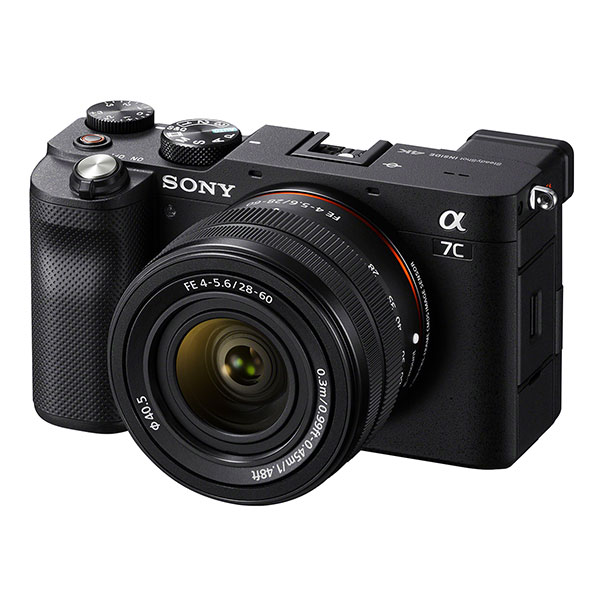 | Sony A7C Pros: Sony's usual Cons: Sony's usual Opinion: I'm going to start by saying that I was excited about the idea of a Sony "Leica style" machine. Whether for the unapproachability of the dot ecosystem, or for the complete adoption of the FE system, the dream of a small machine with FF sensor did not give me sleep... And now it doesn't sleep for me to have tried this A7C... The pros are the usual, needless to say: amazing sensor and first-class AF, like any Sony. The problem is all the "improvements" compared to the A7iii, which are actually downgrades. Many keys, a ring, have disappeared, and the menu button is placed in an obscene position. You'll always find yourself switching from viewfinder to screen to press it, with considerable waste of time and undeniable frustration. But then the worst part: the viewfinder. Magnification ratio 0.59x, basically not seen, and not only, it also has a real window where to place the eye extremely small, unusable in my opinion by an adult. Final tap the shutter key inherited from generation 2 ( inexplicable ) and not from the 3. Note only the adoption of a tipper screen with some touch features. Basically for me it's a nonsensical machine, it doesn't make the slightest sense. Those who want a Sony of this level buy an A7iii, those who have to make professional videos buy an A7sIII or the new release of the PRO series, those who have to make vlogs buy a Sony with a reduced sensor that also facilitates freehand shooting. I can't find the point of this machine, little to add. It does not satisfy anyone, neither the photographer, nor the videomaker, nor the Fuji enthusiast who would like a larger sensor. sent on March 21, 2021 |
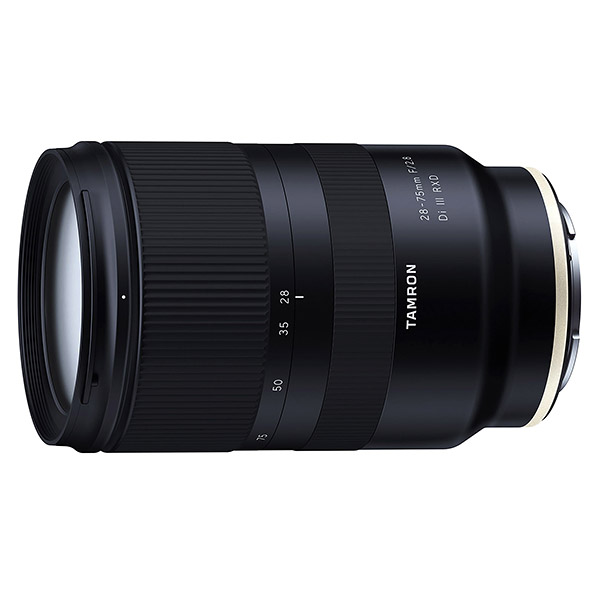 | Tamron 28-75mm f/2.8 Di III RXD Pros: Price, uniqueness Cons: Non-fluid zoom ring, questionable lampshal Opinion: A must for those who need a zoom at a low price for Sony FE. The focal excursion is particular and allows you to limit the dimensions by sacrificing 4mm in the wide-angle area (you notice a lot so it is up to you to decide whether it is worth the sacrifice). The AF is quite fast, now it is really a question of ingezie between a top lens and a mediocre lens in these focal points... The construction in general is of a good standard, the plastics adapted to today's standards ( it is not metal but not even a samyang), except for the lampshed which is too small and probably useless. The quality of the photos is discreet. Bokeh does not excite and uniformity of sharpness is not adequate for large hyperfocal prints. Was it born for this? No, so I find it sterile to expect a zoom that can return fabulous portraits, incredible landscapes and maybe even print your photographs while you eat a pizza. The sharpness in the center is high, the chromatic aberrations negligible, the distortion corrected easily automatically: in essence it is an excellent lens for working and that will not make you regret the 24-70 GM (which urgently needs an update). sent on March 15, 2021 |
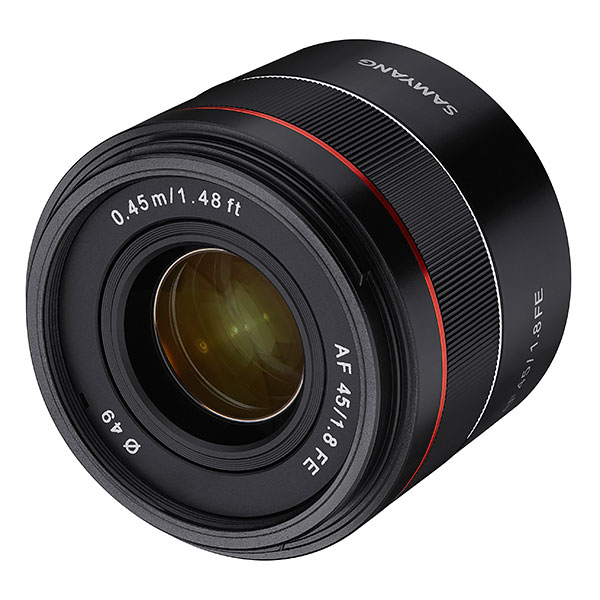 | Samyang AF 45mm f/1.8 FE Pros: the real fifty-year-old Sony house Cons: Nothing Opinion: Impressive lens, little to add. It has a remarkable optical yield, it is small, it has a fast AF, it is cheap. It's the classic "fifty" that you pull in your backpack, always carry with you, and use with carefreeness. The construction is a bit plastic and a "rough" finish would be fabulous (the smooth cheap effect is not that it is the maximum), but even so it is appreciated. I do not find faults, the only real upgrade to such a lens would be a Sigma 50 1.4 Art or related, but it would still keep its character. It's not the usual 50 1.8 "loser" made specially by the house to make you want something more. The colors are "hot", clearly wrong, but if you do not like them with half a click you settle down. In money, it is a must-buy if you are looking for a carefree lens to always carry with you. It's a little bigger than the 35 2.8, which in my opinion, Samyang could at this point trash. The difference in size is almost imperceptible. sent on September 10, 2020 |
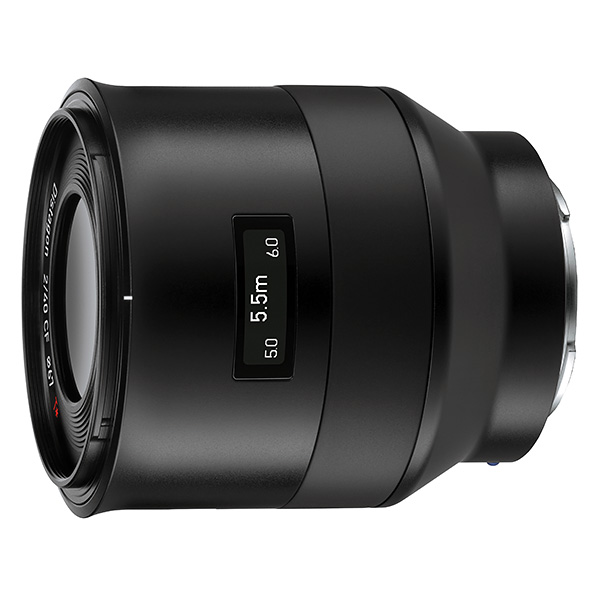 | Zeiss Batis 40mm f/2 CF Pros: High and even sharpness, near macro focus distance, excellent construction Cons: Low-level bokeh, high price, usually plastic lampshade Opinion: A lens that the likeable Dustin Abbott has legitimately called a "Swiss army". It does everything right: it has a perfectly even sharpness, very few AC, a fast and quiet AF, a minimum distance of really small focus. It's basically a lens that you keep attached to the machine, and you shoot a whole event, going from normal stolen photos to improvised still-lifes. Unfortunately, all this versatility is paid for, both with a really high price and with a size that is not properly contained. There's not much to talk about further: it's a lens you can work with and in the right hands you can really guarantee those "extra" shots, but I doubt an amateur can get much out of it. sent on September 07, 2020 |
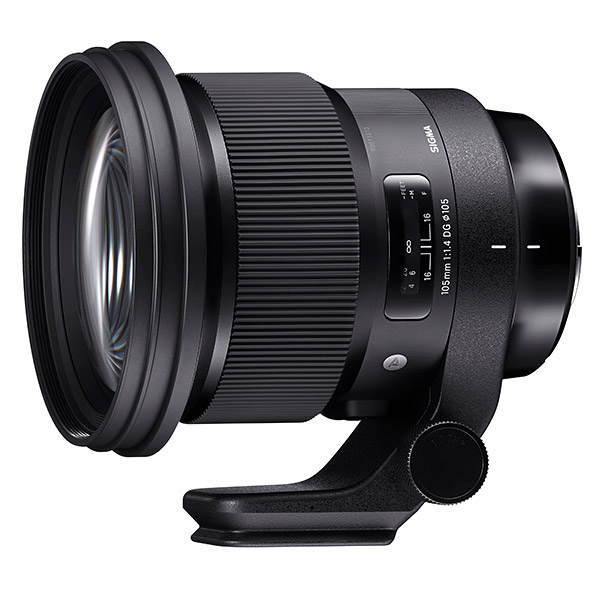 | Sigma 105mm f/1.4 DG HSM Art Pros: Sky-high optical quality for today's standards, fast and accurate AF, fair price Cons: Painting construction, screwless lampshade, unnecessarily chunky, unusable except on easel Opinion: An optics that I will probably keep as the only "working" portrait lens, but that I do not recommend for moral duty. The pros are obvious: perfect sharpness, non-existent AC, creamy bokeh, and all the qualities that give a desired "modern" lens. It defeats all the various 85-105 of the competition, simply because it is decidedly old. If he beats it with the 85 1.2 Canon, but because they possess two complementary philosophies, and they can coexist in a set. The problems are all on the ergonomic-constructive side. Let's start with the most obscene thing: the lampshade. What's the point of a plastic screw lamp on a 105mm? It has only one: ruin the tires in case it doesn't fit well, as happened to me. Filter insertion zone made of butter, a micrometric oversight and tac, scratch on the plastic that you will keep for life, and it will be a great excuse for the shopkeepers to drop another 50 euros. The overall size of the lens follows, exaggerated, which oblige its exclusive use. It will therefore not replace an 85mm in case you spin with two machine bodies. We are still a span above the first Sigma Art at the construction level, but far from a lens that will last you 30 years. The AF is fast and precise, even on Sony, like a native lens. Basically I can only recommend it to professionals who find the 135 too long for portraits (I understand them ), and would like for fanaticism something more than 85. Absolutely unusable for marriageists or for anyone who makes a dynamic use of it. sent on July 21, 2020 |
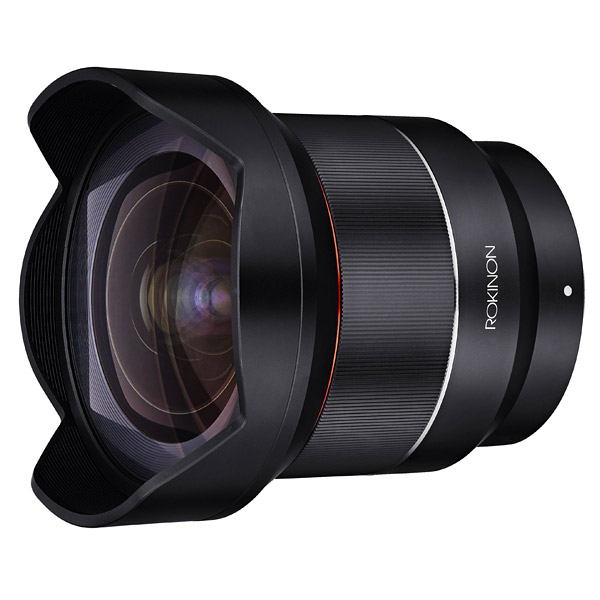 | Samyang AF 14mm f/2.8 FE Pros: construction, price Cons: At this price nothing Opinion: It's a 14mm. It is a dutiful premise that must be made. You can't rate the sharpness uniformity of a 14mm as if it were a 50mm. That would be unfair. That said, the lens is egregious, especially the construction. It is solid, it really gives back a feeling of solidity, on the contrary for example the various Batis, with their lasco and pathetic lampshade, distressing for the sale price. It has no strange games, the front cap is grafted firmly, the ring is fluid, the red ring a touch of class. I start a little biased because my passion for the Samyangs is archnota, but they deserve it. Every lens they've released for Sony or the XP series is a small masterpiece. This is not, but not because the company could have done more, but because a 14mm can not be better than climbing dizzyingly with the price. On the super-grandangulars you have to settle. Here, however, the company combines the inevitable "optical mediocrity", other level features: fast and quiet AF, granite construction and inviting price. So I'm recommending it? Yes if you know what it means to shoot at 14mm, and what is a 14mm. Don't think that buying a Sony GM or a Sigma Art will get you so much better. You're not going from an 85 1.8 Canon to an 85 1.2 II. You will have less chromatic aberrations (but there will always be and you will have to correct them ), more uniformity of sharpness (but that with sensors above 36mpx still makes you see the detachment between center and edge ), less vignette (but that anyway at TA is always at least 2.5 points ), less distortion ( but always present and clear ),but ... you will not have eternal salvation in your hands. This type of lens does not compare at the level of complexity with the various medium-tele that have reached optical perfection for several years. sent on July 16, 2020 |
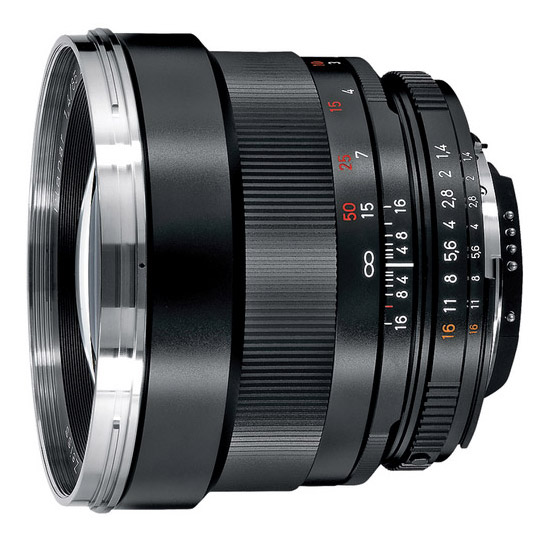 | Zeiss ZE/ZF.2 Planar T* 85mm f/1.4 Pros: Granite construction, unique optical yield, exemplary contrast, non-existent price loss Cons: it's not the most sensible choice in terms of spending, but life is also made of emotions and not just math Opinion: I think the whole thing can be summed up a little bit. It is a particular lens, with a very long focus that allows extreme precision, but of course slows down its use. This lens is an experience, it has a different color rendering from the classic 85 because it has a scary contrast but a medium sharpness, which basically opens the doors of the infamous "microcontrast". It's a lens that is haunted by all the proponents of this "microcontrast", because in fact the black and white photos become... Magic. 6 elements in 5 groups is less than half the lenses of a Sigma Art, and some difference with half the glass must be there. It's not a newit lens, it's a lens from artists who want to "brush" with the camera. On Sony it works better there is little to say, the electronic viewfinder allows much more precision and limits the photos out of focus a lot. Personally it's a magic lens, and snubbing it is a bit like saying "eh but that Alfa Spider is old, consumes too much and is not fast, this bmw consumes less, runs more and a tenth of maintenance". The thing is, the emotions of that Alpha, the bmw don't give you. In essence, it's a lens that's extra-advice to those who want to devote themselves to portraiture even in b-w, and don't have to run after the model by firing volleys. As a unique ness of surrender I compare it to a few lenses, including the 85 1.2 Canon-Mitakon, both of which have a "unique" yield, which deviates from the banal optical perfection, but without becoming "unpleasant". Not least the price is granite, it does not go up nor goes down: you buy it on the 700 and it is a circular check. I recommend to take it around this figure if in good condition with all the kit, without waiting for business of lenses used by cafoni that destroyed them, or worse you have lost the original kit. The resaleability of a similar object by "collectors" without bundles, is almost nothing sent on December 02, 2019 |
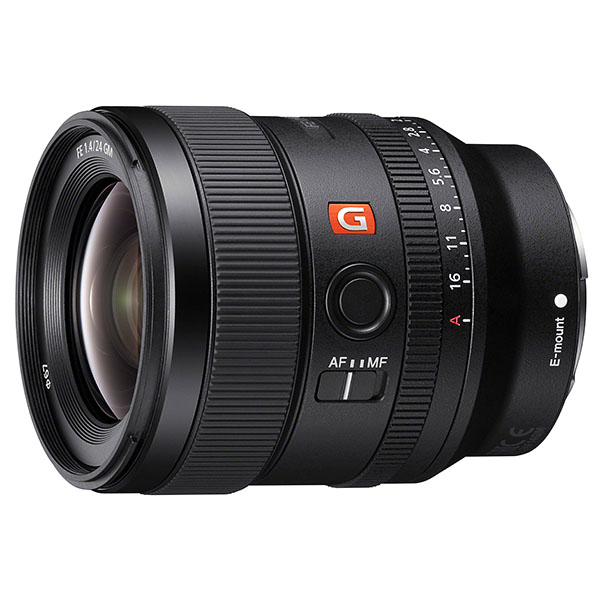 | Sony FE 24mm f/1.4 GM Pros: Small size, excellent image quality, diaphragm diaphragm dial with declick, light, price Cons: Nothing Opinion: Speechless. Small, with a bokeh that does not look like a 24mm, very bright, a very solid construction, tropicalized, AF inaudible (and precise of course ), super contained distortion... I don't know what to say, it's clearly the perfect 24mm. It will have some AC in absurd light conditions, but the size greatly outclass this defect. By the way, we are not talking about ACs always present, but extreme backlit conditions. Any other lens has similar problems. There is not one that in any light condition does not show the slightest hint of AC. The fact is that this lens having no other existing defect... well something has to be written in the reviews, Nikon-Canon still something pagan. You have the choice, but for me this lens is phenomenal. The price also seems to me strongly in line with the offer (about 1300-1400th cashback and the like ), which results in the 24mm DEFINITIVE. sent on November 09, 2019 |
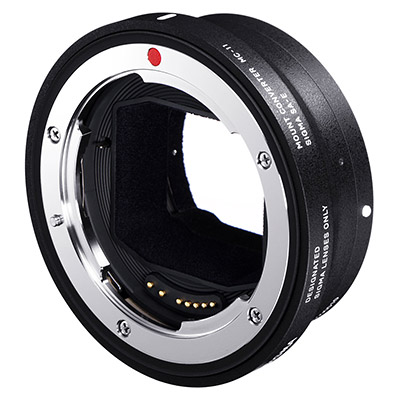 | Sigma MC-11 EF/Sony Pros: All Cons: Honestly nothing Opinion: Without this ring I believe that most of the current Sonari would not have been. I also believe that Sony owes a lot to Sigma, and much of the success is due to the possibilities that this adapter guarantees. In money makes any lens for Canon, usable perfectly on Sony. It's worth noting that native L lenses work beautifully, as opposed to the Sigmas they sometimes hold (probably the company wants you to buy their lenses with native attachment). On the series III bodies is deadly, most of the time it is the lenses themselves that "castrano" the speed of the system itself: for example an 85 1.2 or a 135 2.0 will work exactly as if they were mounted on a pro Canon body, but on the contrary they will have an accuracy and the AF eye (works with any lens without problems ). Canon professional lenses such as 70-200 II-III and the like work beautifully. On a9 I saw no difference between her and a 1dxII (summary tests ). The only lenses that hold out are the third-party super-tele. For example, the 150-600 scan thos can be used with static subjects, which are completely unusable in the case of in-flight and related sparrows. It does not cause any exaggerated drain of the battery, and does not degrade the quality at the edges of the pushed widecorners (as the metabones does ). The price is perfect considering it can allow you to postpone the purchase of native lenses. The only "problem" is that ergonomics is often bad, as reflex lenses are balanced for a different draft. Great for saving sacred portrait monsters such as 85 1.2, 135 f2, 50 1.2 and related. For goodness sake it also works well with the 70-200 and the 24-70 of the latest generation, but at this point it is better to buy native zooms. sent on November 09, 2019 |
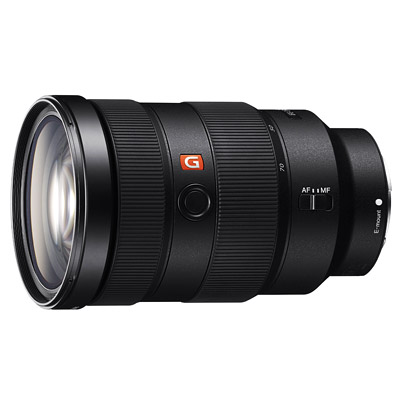 | Sony FE 24-70mm f/2.8 GM Pros: ------- Cons: Presence of flare, unwatchable lampshade, filter diameter 82, non-mirrorless size Opinion: We completely skip the part on optical quality: it is good but there is important flare presence. This means that in frantic conditions the probability of pulling off a discarded shot is unfortunately a reality. Now, on an instrument intended for a professional, I consider it extremely limiting. It is true that you can get used to it, but it is true that having to be one of the last projects of 24-70 on the market, I find it a little annoying that it is suffering from a similar problem. Otherwise it has no big flaws, the focus speed is instantaneous, the customizable button is comfortable, the zoom dial is fluid but it's better. In short, it's a mediocre optics that I personally think stand alongside titans like the 24 GM or the 135 GM of Sony's professional series. We add to the package that it is not a compact or light lens (it looks like a 24-70 from reflex )... Personally I consider the 28-75 Tamron a much more sensible choice, or even better other fixed lenses like a batis 40. sent on October 24, 2019 |
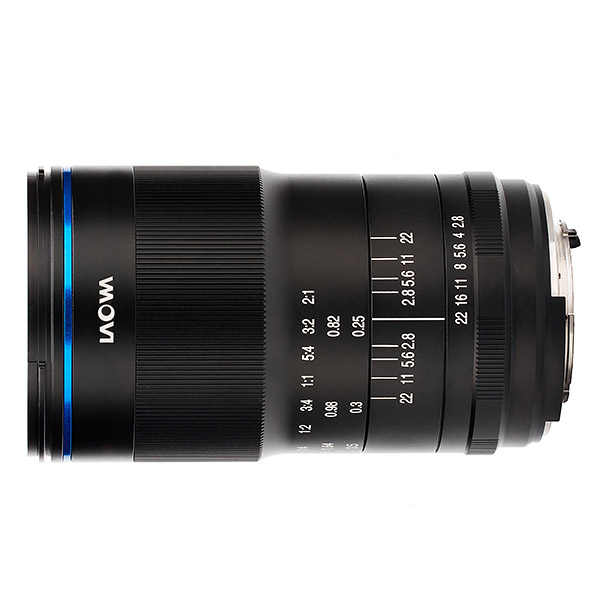 | Venus Laowa 100mm f/2.8 2X Ultra Macro APO Pros: Metal construction, E-Mount version with 13 slats, AC equal to 0, RR 2:1, excellent IQ, ridiculous price of about 500 euros Cons: absurdly inaccurate focus, metal that doesn't return a premium feel, unzigged lampshade, plastic, slack, no easel attachment, availability Opinion: I've been waiting for this lens a lot, about 4 months, and for now I'm not satisfied with it. Optical side you can not say anything, it is the top you can want for macro. The problems, however, arise as soon as we stop looking at the result, and the reasons are summarized in the cons. Let's start with the focus that is inaccurate, has a rotation angle too small: obscenely short for playback ratios from 1:4 to infinity, and just enough for macro distances. It will be impossible to use this lens as portrait canvases, the focus is absolutely out of the question that it succeeds. Real macro side (so from 1:4 to 2:1 ) we are at the limit, you have nowhere near the precision that you can get with an irix 150mm (of which you find my review ). It's a real shame, because optical side is the best you can wish for macro side: the wording APO is real, and any sensor will not pull out green-purple halos or other chromatic aberrations of sorts. The problem is that in the use you are really castrated, also because the lens is very long in the Sony version, and not having the easel attachment, the whole thing turns out to be ungainly and unstable. I am very disappointed, also because I imagined a lens along the lines of the Laowa 105, which instead apart from a lampshade to forget, has a granite Zeiss-style construction, an eternal focus style Zeiss 100 f2, and a general feeling from prestige lens. We would advise against it, because at this price it will beat any other macro lenses on the market, but I would have preferred it to cost maybe 300 to 400 euros more but did not have all these characteristics visibly necessary to reduce production costs, that would make it the best macro lens in existence. sent on September 29, 2019 |
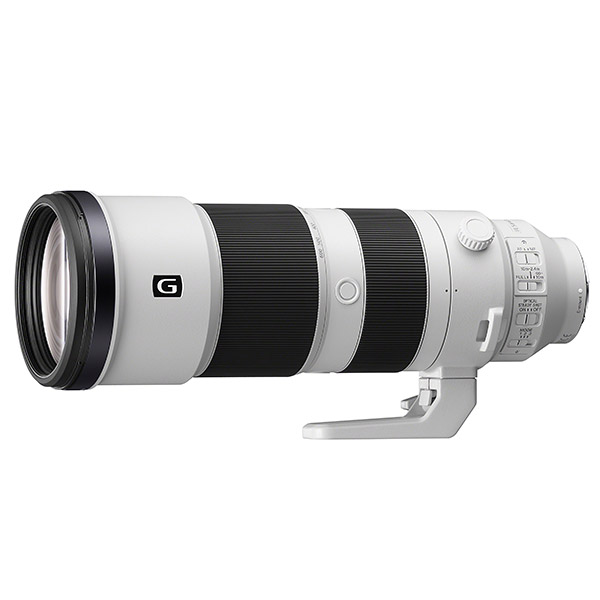 | Sony FE 200-600mm f/5.6-6.3 G OSS Pros: Hands down the best super-tele zoom out there Cons: Lower bracket too small that does not facilitate transport Opinion: Lens that is rightly bringing frightening sales volumes to Sony, and it is not uncommon for us to give us waiting times equal to a 600 f4 to have it. The reason is simple: Sony takes the merits of every super-zoom in circulation, and eliminates its main flaw: the external zoom. This is in fact the biggest flaw of any lens in this category: it impacts the balance, makes it difficult to zoom without an easel, and not least it affected the tropicalization and structural rigidity of the whole. Sony has managed to implement an internal zoom, which although not very fluid (not that of a 70-200 2.8 ), works well. For the rest there is little to say, on 24mpx already at 6.3 the sharpness is enough, closing the diaphragm serves just to increase the PDC. Merit note is also a pleasant bokeh, which will lead us to exploit the out of focus in an artistic way, as we would do with a fixed. The focus speed is brutal on the A9, and apart from extreme conditions, it will work impeccably. The only flaw I find at this lens is the lampshade without internal zigzagging, and an easel attack too small that makes freehand transport a hell. It is now the only usable Sony super-tele, spanners and spans above a 150-600 sports adapted, which absolutely does not hold up the comparison. I don't find the slightest focus distance a problem, usually with the 600mm I don't shoot birds at half a metre. Needless to mention filters or metal lampshades, they are finessefrom super-tele that cost 6 times as much, and inserting them between the cons would be silly. sent on September 23, 2019 |
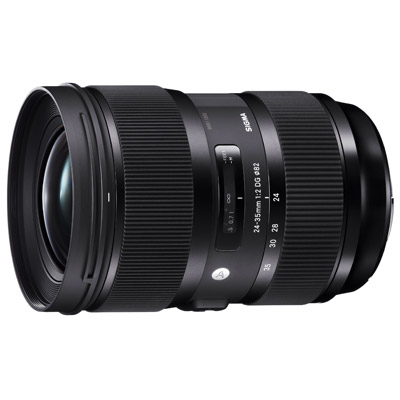 | Sigma 24-35mm f/2.0 DG HSM Art Pros: landscape versatility, uniform sharpness and egregious medium openings, uniqueness, construction superior to normal ARs but still not granite Cons: weight (unusable for street), focal excursion perhaps too small, actual utility Opinion: An optics that I really appreciated in Trentino, where trekking I could photograph everything from flowers to mountains (the opening and the slightest distance of MF help ). The strength of this lens is definitely the fact that it can be considered a "fixed", but it has the peculiarity of being able to vary the focal length. The quality of the shots is in fact well above a classic 16-35. The negative note is that the focal excursion is very small, so I would consider it more a 28mm than a croppa. We add how the weight is challenging, and on mirrorless it's really unbalanced (although it works well on Sony at communication and AF level). I see it well as an alternative to the classic 16-35 for a professional who wants to give a different "touch" to his photographs, but I do not consider it a must-buy lens that should inevitably be part of an amateur's kit. Given the size and price I would definitely prefer the 28mm 1.4 Art, cropping if necessary, or taking a few steps back. The 82mm filters were another "rip", not having that big ones, it prevented me from using the classic 77mm filters that more or less we all own. To praise the construction that echoes the philosophy of the SPORT series, that is, with the ghieres much more robust than a classic 35-50-85 ART. I do not know at the engineering level what exactly changes (if there is a higher amount of metal ), fact is that the robustness and feeling is definitely better than the tires of the aforementioned early ART. sent on September 03, 2019 |
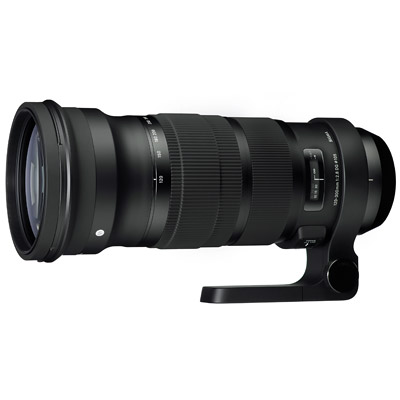 | Sigma 120-300mm f/2.8 DG OS HSM S Pros: Price to be a 300 2.8 with even the lower focal points, all-metal egregious construction, set with wide freedom via USB dock, all in all balanced Cons: Image quality far from fixed 300 2.8, AF incomparable to fixed 300 2.8, scary focus breathing, unusable filters (there is no drawer for filters near the bayonet ) Opinion: We assume that as usual reviews are done with your feet. The lens has no "great sharpness" either in the center, let alone at the edges of F2.8. It's not shoddy for charity, but far from a 300 2.8 (Nikon or Canon doesn't matter). The guy who can't mount the lampshade should read the instructions. It is perhaps one of the best Sigma, being yes all metal, but having a double hooking system: first you have to "snap" spring, and then you have to tighten a screw (classic supertele screw ). Of course, if you just screw the screw, fall. Macchinoso all for charity, however in the end makes the lampshade on the lens and without unwanted reflections (to put it mildly the various 500 f4 Nikon of the past and the like had a gap between body and lampshade, this does not ). It should be noted that the optical scheme is the same as the old non-Sport version, so the problem of focus breathing remained (at 300mm at the minimum distance of MF is kind of a 150mm, well). The AF is absurdly MINUS VELOCE of 150-600 sports. Both docked on speed priority, the zoommone is faster. This has a little bit of a fuss, I have to confess that I expected more. Of course, you must not forget that you have in your hands a 300 2.8 with the possibility of "getting away" up to 120mm, at a price practically low compared to the counterpart. In fact, a good 300 2.8 of the Nikon-Canon home will cost us at least twice as much. In the used something can be found at the same price, but always overused and with the possibility that it will leave us at any moment. I recommend it to anyone who makes indoor sports photography or absolutely needs to stretch the focal point compared to a classic 70-200, as long as it has an easel. Freehand I doubt you can photograph with this beast for more than 30 minutes (despite the excellent stabilizer). In money, taken used on the 2000-2500 has its because, new to 4000 frankly loses sense, and I would prefer it a 300 2.8 used. Not recommended on Sony, used on the A9 has a very slow hook, in my opinion not exploitable in work contexts. Once hooked it does not lose fire, but you have to hook... sent on August 26, 2019 |
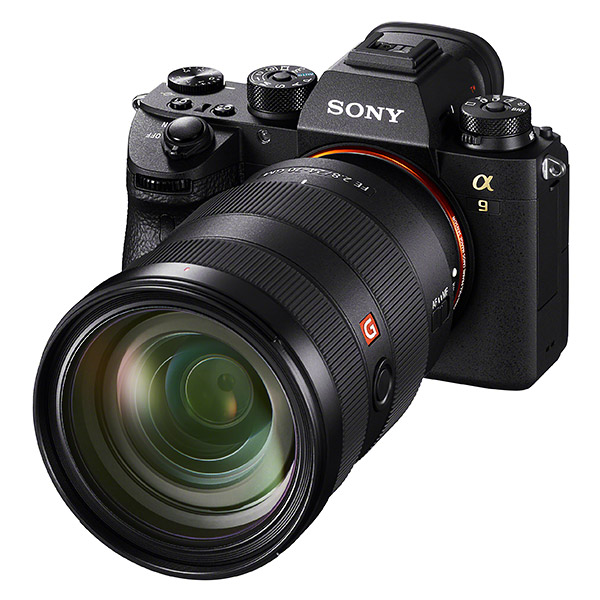 | Sony A9 Pros: It's a great machine Cons: Nothing, not even the price since it currently costs half of a flagship Nikon-Canon Opinion: It is an exceptional machine, it has no defects. It turns out that it has the body of a mirrorless Sony and therefore ergonomics is what it is, otherwise I do not find any note that can be stuned. Let's go step by step: the yield is brutal at high ISOs, and if properly treated with Topaz Denoise AI, it will allow you unthinkable ISO shots. The image quality is superb, but with a 24mpx FF it's also a foregone conclusion. Skip these "normalities", let's move on to the succulent notes: AF, burst and BLACKOUT'S INSOR. You stand there firing volleys without the slightest noise, without ever losing sight of the subject. You have to get used to it, because the feeling of "am I really shooting?" is strong. When I had a 1DXII at the same time, it was laughable. The latter firing gusts resembled more of an AK47 than a reflex. The fact that the image never gets obscure, makes the sessions more hectic definitely less stressful for the eye, which comes out rested even after several hours. The AF itself does not miss a beat, you have to really strive to make out-of-focus images. The settings are really a lot, but even if you put "ample AFC" you will still take home the shot, without too much fuss. At today's sale price of 3000 to 3500 new is an absolute best-buy. It costs half of a Flagship Nikon Canon and offers much more. Especially thinking in a way of buying the "new", I do not see how you can prefer a D5 - 70-200 FL, to this A9 - 70-200 GM, which will even save us over 3000 euros. I advise all professionals to try it, so as to realize the real majesty of this machine. UPDATE: If you could post the conversation I had with a professional friend to whom they lent an a9 to 135 GM. He Nikonista always, "perculated" me for my adoration towards the Sonys, and after 4h of working with this combination, he stopped mocking me and started to ask me "Do I take import or italy the a9?". sent on August 19, 2019 |
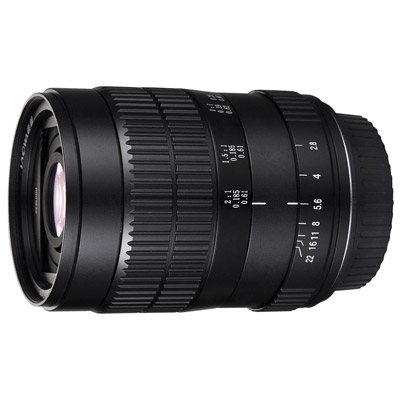 | Venus Laowa 60mm f/2.8 2x Macro Pros: Fantastic optical yield, 14 slats that help to have a great blur with closed diaphragms Cons: Construction a little cheap albeit metal Opinion: Lens despised for no valid reason. There are many for sale, yet it is completely metal, it has an RR of 2:1, excellent optical quality, a diameter filters contained, of the small size, and a decidedly inviting price. Compared to other macros it also has an important number of slats (14 ), and the fact that it possesses a manual diaphragm diaphragm diaphragm can instantly gives you an idea of the depth of field working in macros. Although DX is mistakenly reported, it covers the FF format abundantly, without mechanical vignette. For me it is a "Swiss knife" lens, to be carried around and also to be used as "normal" (if you have a mirrorless that allows you to focus nimbly ), being able to range from RR 2:1 to infinity, which IS UNICA of its kind. For example, a 65mm voigtlander costs twice as much, has an RR of 1:2, and opening f2 instead of f2.8 does not in my opinion justify the price difference and macro-side waivers. Convenient the fact that the lens does not "extend", and indeed simply retracts (in the photo you see here on juza is in RR 2:1 in the maximum extension ). This allows you to place a good UV filter in front, and to have a small macro lens without potential dirt infiltration. The small size of the front lens also facilitates the backlit rendering, in fact Laowa does not provide any lampshades. sent on July 08, 2019 |
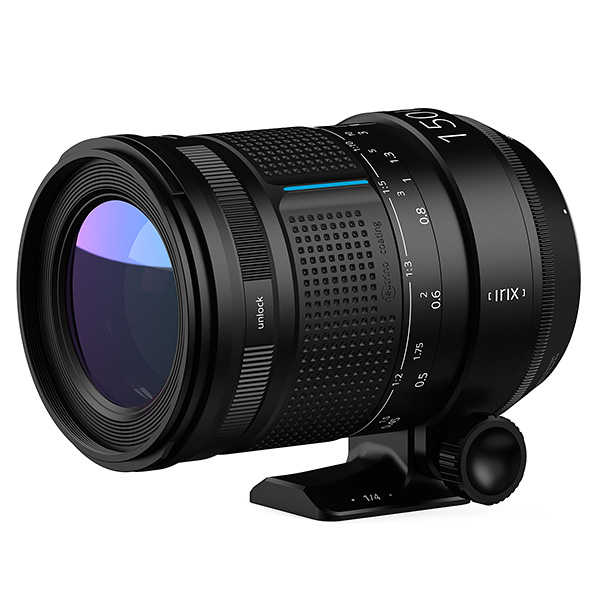 | Irix 150mm f/2.8 Macro Pros: BEST BUY property Cons: Little advertising that the company does in Italy Opinion: I folded on this lens after the biblical wait to get a laowa 100mm 2.8. In the end I jumped at the offer found on eBay of a gentleman French who sold it for about 370 euros, and I did not repeat it. It's STREPITOSA. I start by saying that I've had a lot of macro lenses (100 f2 zeiss, canon L, sigma 105-150-180-180 2.8, laowa 60 2.8, nikon 60-105-200 ), and I wouldn't be exaggerating in saying that this is the best of all. Of course I take into account the fact that it is a 150mm, which differentiates its use from a 60mm. The "best" is due to the analysis of the particularities and the general synthesis of these. Let's start listing them. The first is definitely the internal focus. A key feature to ensure adequate tropicalization, especially of a lens whose use will be predominantly "wild" (the same name dragonfly implies). The second is the size. 840gr for a lens of its category are very few. I sold the 180 2.8 Sigma precisely because of its abnormal size, which relegated its use to the easel only, which in certain macro contexts is not easy to use. This one is as big as a normal 85mm, with probably the front lens even smaller. The third is the presence of a dial that hardens the focus. Being a fully manual lens it is in fact necessary that the focus is as ergonomic as possible, and irix has studied this system that centers IN PIENO. Depending on our needs, we could in fact soften or harden the focus ring. This at very high magnification ratios, will allow us to have practically a micrometric slide embedded in the optics itself. Too bad only for the absence of millimeter indicators of distances on the barrel. It is true that the focus dial is perforated rubber, and therefore a minimum of reference we can still have it. Fourth feature is definitely the excellent optical quality. ACs are virtually non-existent, a result that had never before been reached by any macro lens above 105mm. The unnecessary sharpness to say is ready to meet sensors well over 50mpx in the range of openings between 4 and 8. The only flaw i can say is that the lampshade is not really granite, and how the case is perhaps too narrow (although welcome addition to the package ). The latter is made of very rigid plastic material, capable of absorbing moderate shocks. It is not (to make a reference) the classic Sigma case, which certainly would not be able to absorb a bump. Basically it's a lens that in my opinion on the 600 th is a best-buy. If it beats it with the laowa 100 2.8 (which sooner or later I will get ), which has from its an rr of 2:1, but a focal length of 100mm and an "internal zoom" not properly engineered. sent on July 01, 2019 |
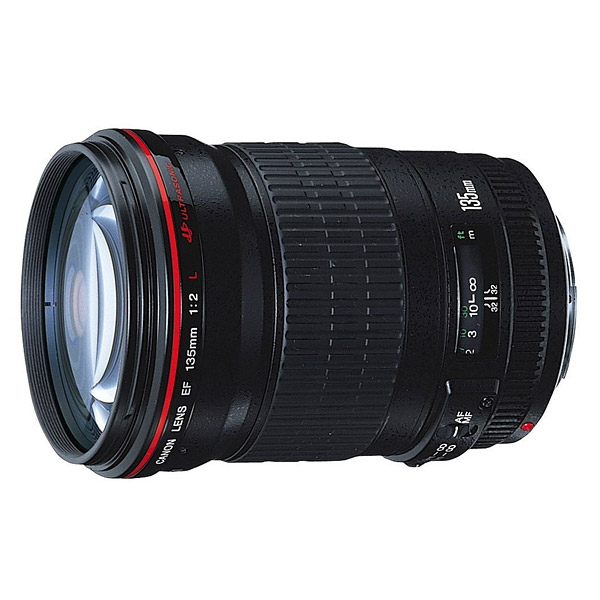 | Canon EF 135mm f/2.0 L USM Pros: Optical quality, discrete AF, excellent speed even on Sony system Cons: Definitely cheap construction Opinion: A lens that approaches the 85 1.2 with regard to the "character" with which it inevitably manages to mark a photograph. They're not fetish fantasies, they're reality. Unfortunately from the online photos you can not really appreciate that stamp, being often altered by post-production more or less intrusive. You realize the art of this lens when you shoot a subject, and simply by taking advantage of natural light you can pull out a picture. It is here that in fact the "vintage" lenses (of which this 135mm fully inherits the philosophy) give the best. That "pastiness" to which many refer, is the right compromise between sharpness and creaminess. Just think that the manufacturers to meet the market's SHARPNESSSSSSS demand, have started to produce lenses with apodization element , which do nothing but "blunt" the image from mid-frame onwards (but eating the light passing through ), so that the center is crisp but at the same time the peripheral bokeh is creamy and pasty. The best lens that embodies this philosophy is the Sony 100mm GM, but to do so it has a 5.6 T (which completely limits its use at night without flash ). Personally, I think it makes much more sense to use a less correct lens with important openings, than an engineering monster on which architects must be installed to "simulate" the vintage yield. Returning to this 135mm, it must alas emphasize how the construction is outdated, and the feeling of "plastic" to the touch is really strong. Nothing to do with the new series of Canon L, in which we tried to raise the bar of constructive quality. Note how used with sigma mc-11 on third-generation Sony bodies, it loses absolutely nothing compared to using it on a Canon body. sent on June 28, 2019 |
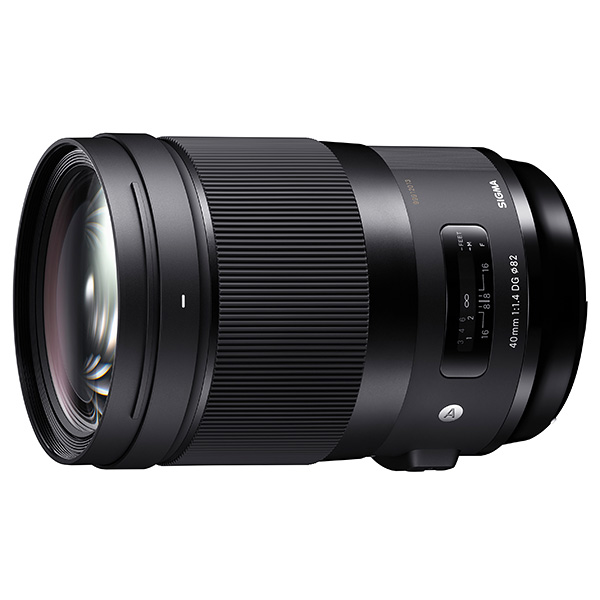 | Sigma 40mm f/1.4 DG HSM Art Pros: Sharpness suitable for 8k video, uniformity, few AC Cons: Weighs more than 135 Art, AF still not lightning, unmanageable freehand Opinion: I had read something before I had it in my hands, and I can only be grounded. It is gigantic, if you hide the number engraved on it, it could very well be confused with a 135mm. It is absolutely not a good thing, being the focal 40mm used for carefree use, and this lens does not allow it. It is also true that the dimensions are justified by a virtually perfect optical rendering. It may be the maximum existing for amateur film use, but the absence of the declicked dial (there is not really the dial) in my opinion limits its use even in such contexts. The construction looks better than the first Sigma Art, with the most sought-after paralysed light-topping engineer that now has a button for release (Canon-Nikon style), which avoids unpleasant episodes. Ridiculous size on Sony, to the limits of the unusable. I'm not sure this is the best way for Sigma, this MTF race is not good for anyone. sent on June 24, 2019 |
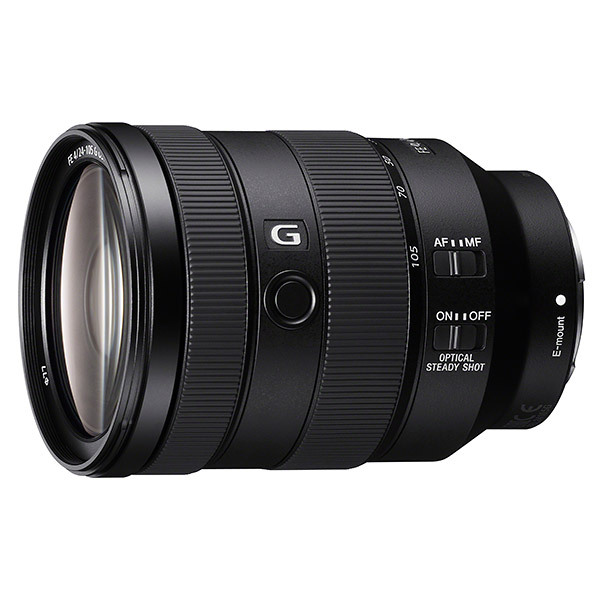 | Sony FE 24-105mm f/4 G OSS Pros: Discrete optical quality, even exaggerated construction Cons: Devastating price, hard zoom ring, tenting AF in interior Opinion: In my way of seeing things is a lens that doesn't make sense. Over €1200 for a heavy, bulky zoom, with fixed brightness at F4, when at just over half the price there is the Tamron 28-75 2.8? For goodness sake the construction is enviable, as usual Sony on the series G \ \ GM does not make you wish better. However the price is too high, and the lens is not free from defects. With light down the AF is lame, but it is still an F4. Although silent in fact, I realized how to face a little ' too up and down indoors, and a lens so expensive can not afford it. The zoom ring is also excessively friction. Accomplice this "tropicalization" of which everyone goes crazy, which then to the practical act destroys the usability of the rings for zooming (except where this happens internally), having to force things to seal as much as possible the cracks. On a zoom like that frankly I would have avoided, so as to facilitate the sliding of the cylinder. In conclusion the optical quality is discrete, the construction is Egregia, but in the end the usability is low. Accomplice an important weight, an AF that given the opening has its limits, a challenging zoom ring to rotate for hours and hours, and a price not competitive, make for me a lens to avoid. If you want to spend €1200 for the "Zoommone Tuttofare" to take you on a trip to make photos to Uncle Peppino that makes the chop in full sun, then this optics can very well satisfy you. But for professional needs, where you can not buy the 24-70 GM, you have to be masochistic to prefer this to the Tamron 28-75. sent on May 20, 2019 |
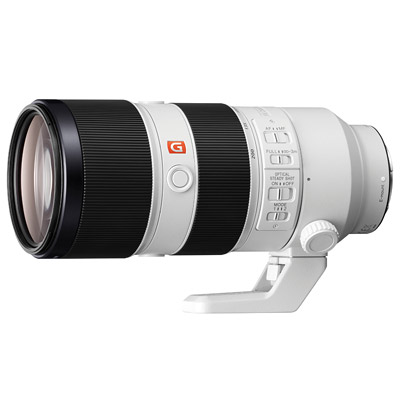 | Sony FE 70-200mm f/2.8 GM OSS Pros: All Cons: Zoom ring a bit hard compared to the competition Opinion: Professional lens. Proven shortly after the Nikon 70-200 FL, and I must say if they play it. Maybe a hair faster than the Nikon, but probably merit the brutal AF of the D500 compared to the A7R3. It has no flaws, it is a professional lens born to meet the needs of a professional. I personally believe that the 70-200 have arrived at the state of the art, and it is difficult to update them in the future. The only drawback of this lens is probably the not very smooth zoom ring, which instead the Nikon FL possesses, and really allows with a finger to rotate and zoom. The image quality is very good, and it detaches the Nikon VR II NET, but absolutely not the latest version FL. I have to contradict the review of another user. Nikon with the latest version FL has done wonders about the quality and artisticity of the 70-200 to 200mm (I invite you to see comparisons 1:1 between VR II and FL online), and this Sony offers nothing more than the Nikon FL. However, they are always two lenses for two different systems, so it is right that both coexist, and are praised for their qualities. Needless to mention the price, on lenses of the kind intended for professionals is superfluous. An iron like that makes you take the bread home, so every penny is justified. sent on May 03, 2019 |
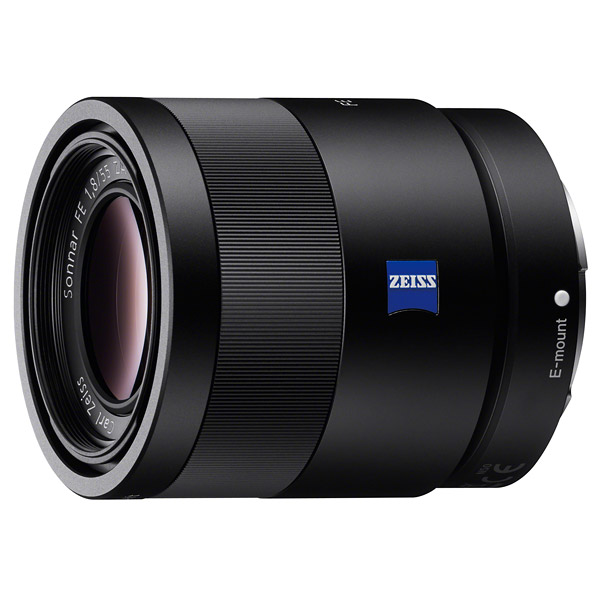 | Sony FE 55mm f/1.8 ZA Sonnar T* Pros: Excellent sharpness Cons: Unwatchable lens hood, prohibitive price, optically far from relying €900 Opinion: If the Zeiss 35mm f2.8 I reviewed it very badly, this I must directly destroy it. I do not quite understand the mechanism for which a company thinks to propose a 50mm f 1.8 to over €900, also offering a lens far from being able to feel perfect. I do not talk about AC, sharpness and trivialities similar, because they are objective data that between exemplary and exemplary can have an uncertainty of 5%, and I find it superfluous to talk about it again being the web full of reviews. I would rather talk about the embarrassing construction of a €900 lens. Do you see photos of this lens with the hood mounted? Few, because it is horrendous and most unnecessary. If the graft is passable, inwardly does not have any velvet, knurling, and laterally it is reduced to a negligible size so as not to be able to perform its function. What's the point of a lens hood like that? By the way it is just ugly to look, enlaring compared to the central barrel like a mushroom (not to be vulgar). Zeiss confirms itself once again unfit to produce lenses with AF. So much I like manual lenses, how much I despise those with AF (of this House you mean). The bayonet is also plasticose, and does not transmit a feeling of quality. All of this would have been permissible for a lens as it can be a Nikon 50 1.8 G from €150, not for a "Zeiss" from over €900. No one denies that it is a compact lens and more or less metal, but to that figure is a crazy and reckless purchase. By the way we are not talking about a Zeiss of future historical interest, but a "consumer" object. To make comparisons already a Samyang 50 1.4 (which we do not forget costs half) would guarantee significantly higher performance. Also because objectively it is not a "pancake" lens, although some reviews might imply, and the dimensions are almost identical to the Samyang (for now single-term comparison in the mirrorless world except the Zeiss 50 1.4). Unfortunately many reviews here on Juza are written by customers who have handsomely paid for what they are reviewing, and therefore inevitably can not be objective. This lens is a clear example. By the way I read about a user who talks about the lens hood inwardly, something that my absolutely is not, and looking for online I had confirmation. Just search on google Sony sh131 (lens Hood Code of this lense) to realize that such a knurling does not exist. sent on May 03, 2019 |
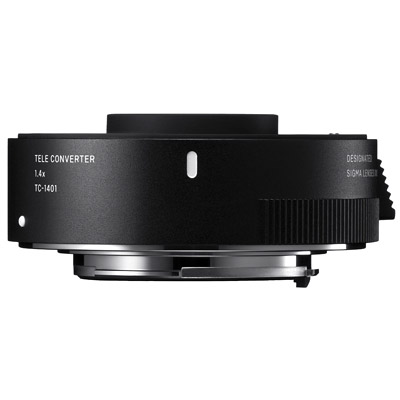 | Sigma 1.4x TC-1401 Pros: Sharpness equal to the Nikon counterpart Cons: Not compatible with Nikon lenses Opinion: TC of all respect, pity it is not usable with Nikon lenses. Tested on D500 with 300 2.8 AF-S version and 200-500, it reports EE error and does not allow the shot. On the contrary on 150-600 S it works perfectly, but the image quality at 600mm multiplied is not satisfactory. Perhaps on less dense machines such as various admirals or other FF with AA filter could meet the same, on D500 and D850 No. I therefore hypothesise functions very well on the 500 F4 Sport. Pity the non-compatibility with Nikon lenses. sent on May 03, 2019 |
 | Nikon AF-S 500mm f/4 D ED Pros: Granite, eternal, non-existent AC also croppando very Cons: Anti-glare treatment bad Opinion: I must say that this lens is really excellent, even if some waiver must be done. Sometimes you can find pictures washed out with a clear fall of contrast. It is to be said that on this lens THERE is no treatment N that Nikon has then started to do later. Will this be the cause? Surely it is a pity that sometimes this happens. At the level of optical quality bare and raw I do not find differences abygenal with Sigma 150-600 S or Nikon 200-500. The real differences are in the speed of AF, which on these fixed specimens is brutal and instantaneous, and the possibility to mount filters of 52mm before. On the €2500 to which it is located is definitely a sensible choice. Other specimens with VR and similar doubled in price, and the differences do not justify the outlay. Attention only to backlighting sent on April 25, 2019 |
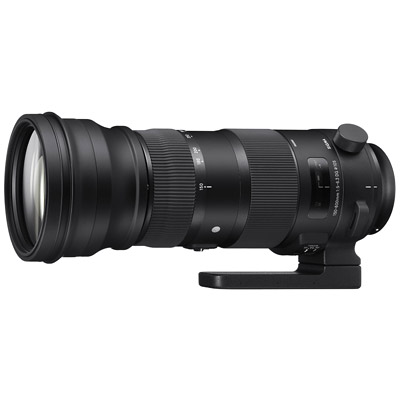 | Sigma 150-600mm f/5-6.3 DG OS HSM S Pros: FAST AF (if docked in speed priority ), very high sharpness (comparable to 500 f4 on some bodies, read after ), completely metal construction Cons: Weight that does not allow freehand use (I am a bodybuilder of 96kg and I think I can definitely decree it ) Opinion: It's a lens that amazed me, especially when I tested the sharpness at F8 against a 500 f4 Nikon. First argument I treat, which is probably also the most requested: unless you use D500 and D850 you will NOT see differences in a 1:1 comparison. Such subtleties in fact emerge thanks to the important pixel density of the aforementioned machines, which rightly declare the fixed winner. The problem is that the difference is NOT scary, and on 24mpx machines with AA filter there are no differences. Of course, these considerations apply to F8, to TA the Nikon gains brightness etc. with the obvious reflections of the case. Another aspect that I compared is the speed of AF, and even here I found no substantial differences. It is true that the Sigma can sometimes reed the shot, but it is also true that objectively if set by dock in priority of focus with the distance limiter placed at our leisure, the usability is almost identical. Trying to overtake on long sloets, it's a lens that's definitely excellent. Unfortunately it has a very important weight that severely limits its use freehand, if not in my opinion prohibits. Sigma, however, has deliberately taken this direction, even inserting a metal screw-attachment (super-tele Nikon style). For the destination of use so I think it is the perfect lens for traveling photo hunting from shed, where the focal excursion represents a real added value compared to a fixed lens. For lovers of long distances and quality, however, I believe that a 500 f4 is inevitably a more sensible choice. For those who manage to get close enough not to crop, I doubt that the investment of a fixed lens is justified, considering above all the fact that the real gain of sharpness I do not think exceeds 10%, and even with comparisons 1:1 to F8, it is necessary to really have the trained eye to recognize what the zoom is and which the fixed. sent on April 08, 2019 |
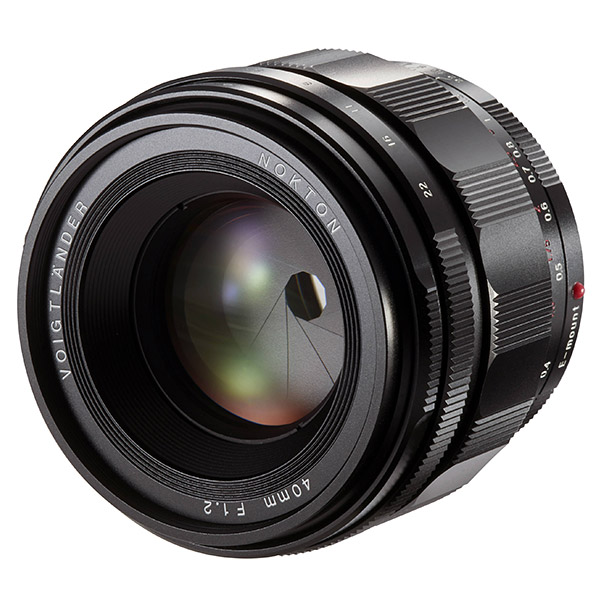 | Voigtlander 40mm f/1.2 Nokton Pros: Lofty lens, black and white will make you cry, absent AC pushy, sharpness to f 1.2 satisfactory Cons: Leica-M best attack version even if erroneously they are declared equal Opinion: I purchased the Leica-M version, and use it on Sony via TechArt Pro. What about, the lens is magical. On the other hand it is a Zeiss with the inscription Voigtlander, what is expected? The construction is equal to a Leica ASPH, so you make the considerations. Very comfortable the aperture ring on the front, so as to greatly facilitate the modification. A habit that I hope also take other manufacturers of manual lenses. At the level of size is very small, just taken in hand and made the first shots, I was pretty much devastated. Voigtlander's net is affirmed as market leader. Ok, Sigma produces super-sharp lenses with cremosissimi bokeh, but the weight? Voigtlander sacrifices a bit of sharpness, in exchange for an incredible weight and transportability. The only "defect" is the lack of AF, which is widely filled thanks to various adapters, which will soon come out for each ecosystem, able to make it AF exploiting the phase sensing system of mirrorless. On the other hand, the TechArt Pro may well also land on the R and Z systems, giving new shine to the lenses of this brand, little known in an unfair way. sent on March 08, 2019 |
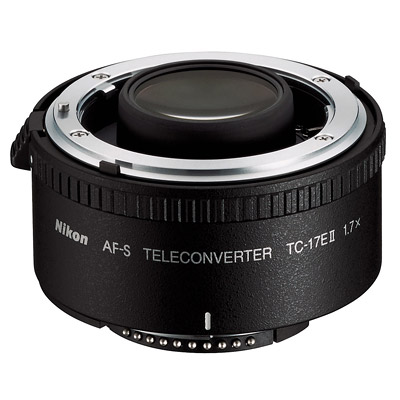 | Nikon TC-17E II Pros: Tolerable quality loss when used on 2.8 Cons: Frankly nothing Opinion: A high quality TC. It allows to transform a 300 2.8 in an abundant 500mm, with a minimum quality loss. From the tests carried out, the loss of quality is higher than the equivalent 1.4 x, but far from that of the 2x. Testing the "good", comparing a 300 2.8 with this TC 1.7 x to a Sigma 150-600 Sport, I found a victory overwhelming by the fixed multiplied. So in my opinion is an excellent tool for owners of 300 2.8 who want to "lengthen" the lens, still maintaining a very important image quality, without switching to a zoom. By sheer curiosity I tried it with a d500 and a Nikon 200-500, and it still works. Of course, very lame, but still usable, and closed to F11, the whole generates enough sharpness to most uses. sent on March 08, 2019 |
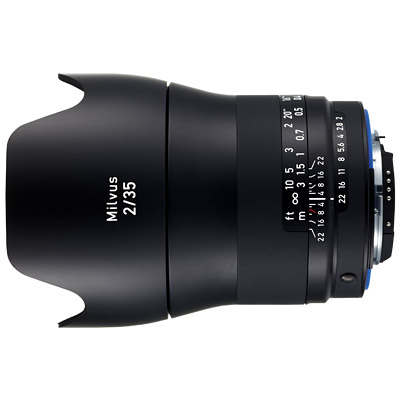 | Zeiss Milvus 35mm f/2 Pros: Microcontrast at the highest levels, sharpness, epic construction Cons: Too many aberrations, not so lofty sharpness, weight Opinion: Lens that replaces the always magical 35mm F2, maintaining the optical pattern and changing only the anti-glare coating (basically two lenses are equal). From the egregious construction like every milvus (practically waterproof and with brushed metal hood with Velvet inside), manages to excite with a crazy three-dimensionality, spans and spans over any 35 mm modern (apart from Voigtlander and some Chinese house). Unfortunately this three-dimensionality has a very salty cost, and the aberrations are many, really too many. The sharpness is high but not to be solved 50 mpx, and for a similar product, it is something that makes a little twist the nose. I recommend a lot to those who photograph in black and white, because it really will change your photos in an important way. You'll be able to have a micro-contrast of vintage lenses, with a sharpness of a modern lens. The negative part is the aberrations, so forget about exploiting the light in an overly creative way, because it's a moment to make a mess. At the price to which it is sold today I do not know how it makes sense, also because Voigtlander proposes similar lenses at decidedly lower prices, or lenses of much higher (Voigtlander 40mm f 1.2) at similar prices. I believe in this case should be assessed the exclusivity of the brand and the emotions that this entails, rather than the simple characteristics. A slightly avant-garde photography concept, so much is the only way to justify a 35 mm F2 from 700gr from the cost of over €1,000. sent on March 01, 2019 |
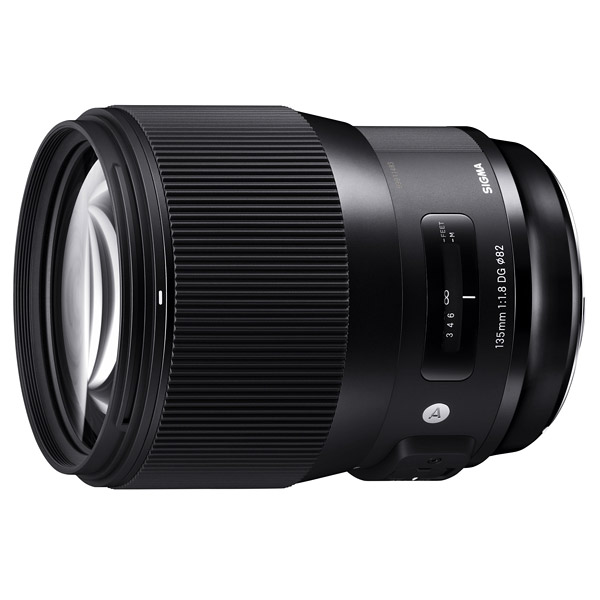 | Sigma 135mm f/1.8 DG HSM Art Pros: Frightening sharpness, medium format bokeh (Leggesi after), contained dimensions relative to the focal, price Cons: Flatness of the image if not conveyed with flash, ring as usual extremely fragile Opinion: Optics with frightening sharpness, and incredible bokeh. This is due to the fact that all Sigma ART lenses are designed for medium format (online test video). This allows you to reproduce an almost perfect bokeh across the frame, obviating the problem of light points to "cat's eye" intrinsic in the nature of the lenses (basically being thought for larger formats than the FF, crop the image eliminating the area Device that is the most affected, and therefore seems exempt from this problem). Unfortunately the Microcontrast has not reached, and to use it as it should, you need the help of Flash. Without the images will be flat, with nuances of faces almost non-existent. It can be an excellent tool in the hands of a professional who needs extreme nitidezze for important prints and knows how to exploit similar lenses. In the hands of an "amateur", can only pull out horrendous images, completely flat, with subjects glued on a blurry background. The PDC is very reduced to TA, and the out of focus is around the corner. This complicmakes its use even more, especially on DSLRs where the AF system punches with all the various sigmas. In essence it is a lens that I recommend exclusivations to professionals who use it in a controlled environment, on well-rigged models and being aware of what a similar lens can give. If you want to buy it just because you want the "sharpness", buy a Macro lens: You'll spend less and you'll be happier. In the hands of an "amateur" this Sigma can only make monsters, and the gallery here on Juza should better express the concept. sent on February 25, 2019 |
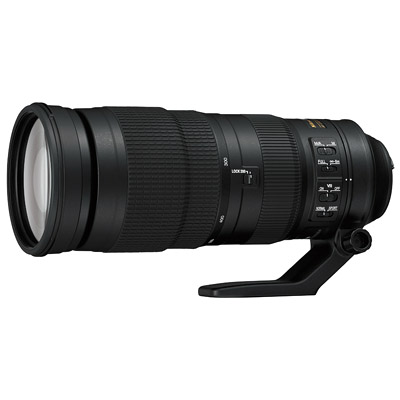 | Nikon AF-S Nikkor 200-500mm f/5.6 E ED VR Pros: Optically egregious, incredible stabilizer, price, very soft and ergonomic zoom ring Cons: Slow AF, plasticose construction, unwatchable lens hood Opinion: We assume that to decide I bought both him and the 150-600 sport, and making a comparison 1:1, I decided to keep the Sigma. But let's talk about this Nikon. Optically it is very good, especially in terms of sharpness. What is lacking compared to a fixed in my opinion, is the contrast. I tried to make a 1:1 comparison with the Nikon 300 2.8, and it turned out to be a big difference in terms of contrast and color depth. For the rest, the sharpness is very similar to a high-level fixed. But unfortunately the AF is slow, there is nothing to do. Here the differences are exaggerated, and for a slightly more "cheerful" use, will show all its limits compared to a fixed as a 500 F4 or a 300 2.8 multiplied. The construction is unfortunately very scarce, all plastic, including the lens hood, which does not even possess a knurling to counteract the reflexes. This constructive choice influences the weight, which is very low, allowing a clear hand use even for the most "Gracilini". The VR is scary, even on a d500 (maximum pixel density in the Nikon house along with the d850) can provide perfectly sharp images even with times of 1 \ \ 50. This allows you to stay content with the ISO, and diaphragm up to F8 to get maximum sharpness. In conclusion It is a very nice lens, optically incredible, with a stabilizer and a weight that allow a free hand use even for whole days, and with a price all in all given. I decided to hold the Sigma simply because I prefer to feel the metal than the plastic, and because the AF is much more responsive. At the optical quality level at F8 find differences is difficult, to TA maybe the Sigma is a sharper hair, but it's not exactly a discriminant. sent on February 22, 2019 |
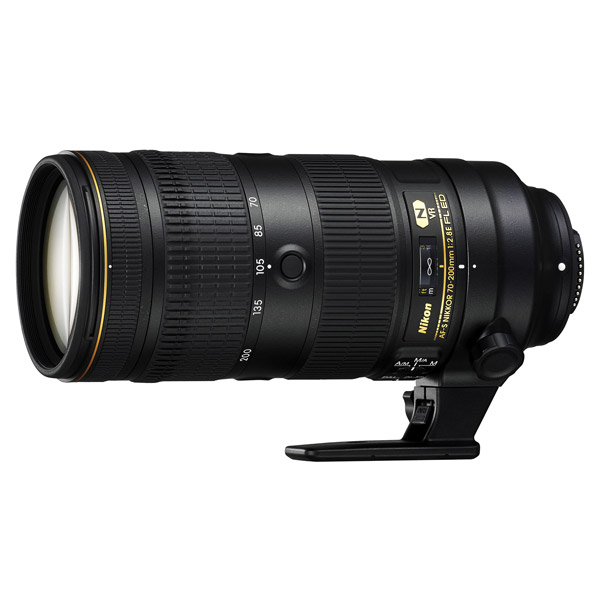 | Nikon AF-S 70-200mm f/2.8E FL ED VR Pros: nitidezza\\improved contrast to previous version, softer bokeh, focus breathing finally eliminated, AF Fulmineo, zoom ring "buttery" Cons: Non-granitic construction but justified by the weight Opinion: What about, a simply magnificent lens. Obviously it is not a portrait lens, buy it to use it for this is sheer madness. It is a lens for professionals needing the TOP. Combined with an AF module like that of the D5\\D500 allows a margin of error perhaps of 1%, no more. It has an image quality that can be surpassed only by lofty landlines as it can be a Zeiss 135mm F2 or an 85mm f1.4, so it will allow weddings and similar events leaving the fixed in the bag for the most time-consuming. It has no flaws, needless to mention the price. A professional as it should if the Nital official pays off with 1 \ \ 2 events. If then the work of photographer in Italy now pays change, it is not the fault of Nikon, and certainly can not sell zoom of the genre to €500 because now there are matrimonalists who take €300 to service photographing with the 600d and 18-200. In 2019 this 70-200 is still the definitive tool for professionals who eat with photography (and it will be for a long while), and does not care to buy a Tamron or a Sigma to save on reliability and operational speed. Note that it is not a simple "reboot" of the VR II, but has fixed the hateful problem of focus breathing, and has visibly improved the contrast to f 2.8. sent on February 17, 2019 |
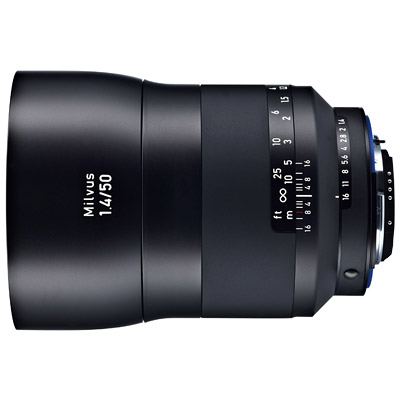 | Zeiss Milvus 50mm f/1.4 Pros: Optically egregious, construction from 10 \ \ 10, metal lens hood with felt interior quality Cons: Exaggeratedly big, lack of AF, ring of ZF version small and uncomfortable to use Opinion: Who had a milvus in his hand knows: the building is magnificent. It is an incredible piece of engineering, made of brushed metal, completely tropicalized, with very clear and difficult to wear writing. Unfortunately a lens is not just construction, and this Zeiss does not excite. Although compared to the previous version is noticeably sharper and better supports chromatic aberrations, but loses that microcontrasto\\3d that characterized the ancestor. The number of lenses is in fact doubled, and if optically the difference is marked, it is also artistically, where in my opinion loses a lot, becoming one of the many "Sigma Art" in circulation. I have to say that there are no important differences between the two: the Sigma has the autofocus but a ridiculous construction, this has a magnificent construction but is completely MF. We add to this "normality of yield" almost 1kg of weight, and here is served a lens in my opinion senseless. I had it and resolute record time: He couldn't give me anything. I preferred by far a Voigtlander 40 mm f 1.2, with its contained dimensions, and its yield decidedly characteristic albeit devoid of intrusive aberrations. In summary it is definitely a lens from the construction egregia, but it can not excite and justify a disbursement of more than €1200. By now in 2019 are being born as mushrooms Oriental companies that produce manual lenses with incredible constructions at honest prices (7artisans \ \ Mitakon For example), and Zeiss may not have to list a 50 mm f1.4 manual, which has as sole "advantage" compared to other Offers, the name Zeiss and the pain in the arms to transport it. A fully manual lens in the 2019 must justify the difficulties you encounter by using it, this Zeiss does not do it. sent on February 15, 2019 |
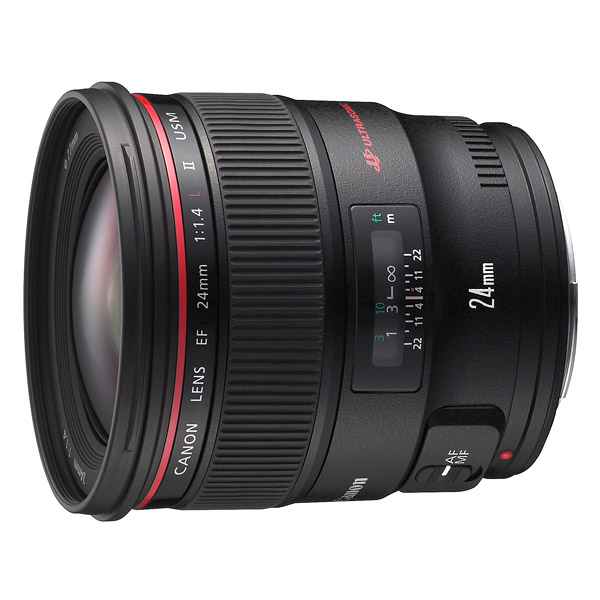 | Canon EF 24mm f/1.4 L II USM Pros: Canon rendition, good quality at f 5.6 Cons: Really low sharpness given the price at TA, AC visible, vignetting of-3 EV to TA Opinion: I am not a big fan of the 24mm, but I must say that this for me has flunked completely. For F 1.4 accustomed to "modern" lenses, the sharpness is missing, both in the center and at the edges. Closing to F4 will reach a "normal" sharpness. Let's add that the flare and the chromatic aberrations are evident, the vignetting at F 1.4 is 3 stops, and that the bokeh has some onion ring... These problems on a lens from 13 lenses in 10 groups are inadmissible. For me it would suffice the embarrassing sharpness to F 1.4 not to buy it. It makes no sense to buy a lens with this aperture, and then have to close to f2.8 to make "acceptable" photos. In conclusion is a lens that makes the "Canon rendition" The only reason to be purchased. sent on January 30, 2019 |
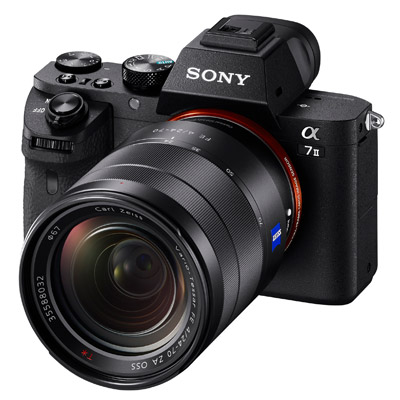 | Sony A7 II Pros: An A7 base "Sgrezzata" Cons: Battery still unsatisfactory, AF does not live up to a PRO use Opinion: Does it make sense to buy it again? It is a broken A7 of that "Leica" style body and transformed into an almost reflex, with a much more canonical setting of the keys. It has no substantial differences from the previous model, at least at the "final yield" level, which is practically identical. Instead, the ergonomics changes, much more suitable for the various daily mistreations, and the shutter gains 10 years, passing from being an AK-47, to be exploitable even in silent environments. The silent shot, the prerogative of the S series, the R2 and the series 3 is missing. A bayonet is added as it should be in metal, a better AF, and a larger viewfinder. Basically all small improvements that in everyday use are felt, but almost doubling the size of the body. They are two machines with two different philosophies, more than two machines one after the other. The first is the advice for an exclusively vintage use, while this also as the first body of demanding amateurs. Note then how the idea of "mirrorless" with this machine fools a little, because the dimensions do not begin to be more so insignificant. The stabilized sensor doesn't do wonders, it's light years away from true stabilization on the lens, so if you want to buy the series 2 exclusively for the Ibis, think about it better. Stabilizing a FF sensor is not like stabilizing a m4\\3. sent on January 24, 2019 |
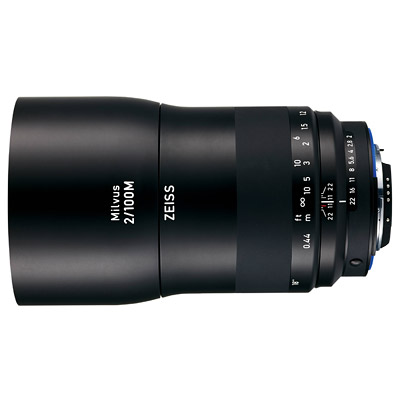 | Zeiss Milvus 100mm f/2M Pros: Unchanged from its predecessor, which is therefore fully promoted Cons: Same problem as the predecessor regarding the lengthening to the lower magnification ratios, not true macro coming only to 1:2, to date in 2019 there are Chinese alternatives at half the price (see the various laowa ) Opinion: I must confess that the hesitation was strong in me before the purchase. I had to send back a Zeiss 100 f2 Classic because I had internal dust, and I wasn't sure I'd spend anything extra for it. In the end I decided, I made the purchase, and I was stunned. You notice The net change of Zeiss regarding the construction. End of the metal "old style" (beautiful but overly delicate ), and welcome the "futuristic" metal. I'm not sure how to get this brushed effect, so much so that it will be really hard to wear out the body. We will have to make a commitment to mark it. The dial of the MF can please as not to like, surely "ride by wire" makes a better effect, so it is perhaps too frictiony, but it makes us habit (being rubber and not metal ). The grafts and details are manic, lampshade and body will be grafted to form a soft and uniform line, much more blunt than the Classic line. In essence, even this lens is a great fault (if lovers of the genre ), and I think a few hundredni more than the previous version are justified. You lose a bit that "sex appeal" of the Zeiss Classic, but you gain in serenity of use considering how simple it was to strip the body of the old Zeiss. Applause at the metal lampshade with internal velvet, really libidinous to use compared to the pats of other brands. sent on January 16, 2019 |
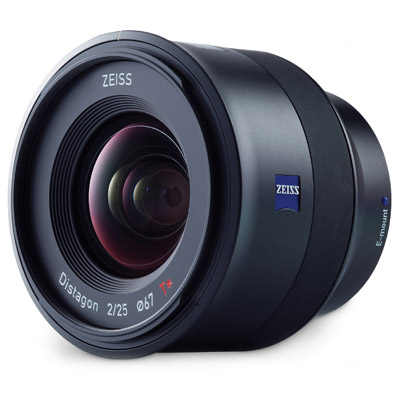 | Zeiss Batis 25mm f/2 Pros: * A date to be defined * Cons: Lens hood shameful, embarrassing, offensive to buyers and to the Zeiss story Opinion: I have no words. I got here today, and I thought the Batis series was a "Milvus" for Sony. Never error was bigger. The lens hood of the Milvus is granitic, in metal and with Velvet inside. This is a piece of ignoble plastic, without internal knurling or anything that can absorb the light. In fact, I think they do more damage with the lens hood inserted than by taking it off. Given the selling price is hallucinating, and I consider it really offensive to the entire Zeiss story. A decent lens hood how much would rise the price? But even if he had at least velvet, or toh an internal knurling. But so it looks like one of those super cheap Chinese lens hoods from €3. Even the plastic is of a low quality, as opposed to the body that is of a very pleasant metal. I don't know if I'll keep it, it's really disturbing a similar detail, staggering to say the least. UPDATE: A lens All in all pleasant, quite compact and with an image quality in the end of the accounts satisfying. Whether or not the required figure is relative, also because true alternatives for now there are none, apart from the Sony GM that costs a 30% more. Objectively the price difference is there and is widely deserved, so do your assessments. sent on January 16, 2019 |
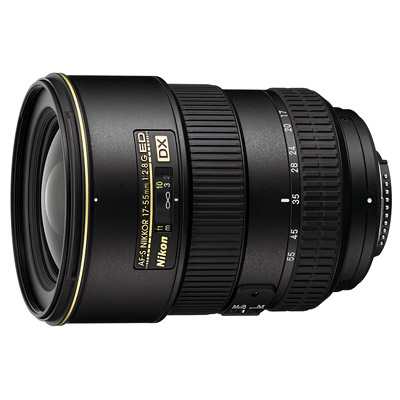 | Nikon AF-S DX 17-55mm f/2.8 G ED Pros: The 24-70 f 2.8 as it should have been Cons: Price to the new Opinion: Stunning lens, one wonders why Nikon has made a professional APS-C zoom as well, and the 24-70 Plasticaccia. It is really egregia, starting from the construction, to go to the optical quality, and to conclude with the speed of the AF. It's big, all metal, with a plastic lens hood but really well built. Definitely the best APS-C zoom on the market. The stabilizer is absent, so it is a matter to consider. Obligatory purchase for professionals who use Nikon APS-C (maybe on d500 where it generates a stunning coupled especially as AF speed in the dark), but also for advanced amateurs who want to stay in reduced format. Priced at around €600, it's a must-buy. sent on January 15, 2019 |
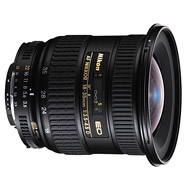 | Nikon AF 18-35mm f/3.5-4.5 D IF ED Pros: Comfortable focal Range, 77mm filters, light, economical Cons: Plasticious, optically not excelled Opinion: Lens that still defends itself, obviously coming down to compromises. It is light, economical, allows the use of filters from 77mm, you can not expect the moon. It was not born for sensors from over 24MPX, but I doubt anyone uses it with these. It is more designed to be a "wide angle street" lens, maybe on a sunny day. If necessary it is in the jacket, and it will not bother you. You can also who knows, mount the tripod on the fly and make some shots "veiled" by mounting an ND filter. Obviously it is not a lens to take in places lost to photograph breathtaking landscapes, it is more a "handyman" of quality to throw in your pocket together with another fixed of good opening. For the figure to which it is sold (now 200 \ \ 250) There is definitely no alternative, considering that it is a lens for FF. Absolutely not recommended on APS-C, where it will be too little sharp for 20 \ \ 24mpx DX sensors. If you are a d800\\d810 owner and looking for a wide angle to use on a tripod for quality shots, it is obviously not a sensible choice, you will certainly be disappointed, but not because the lens is of poor quality, but because you have the wrong goal. sent on January 15, 2019 |
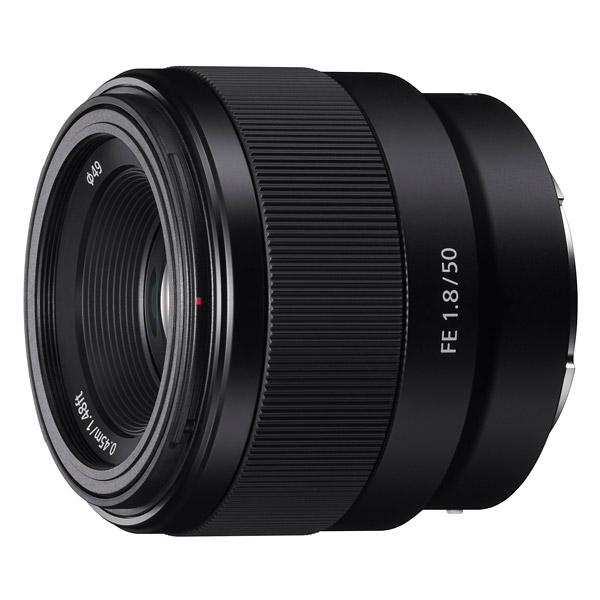 | Sony FE 50mm f/1.8 Pros: Small, economical, bright Cons: At the price of about €200, frankly nothing Opinion: Lens that is new at about €200, and sometimes less if on offer. I don't honestly find such striking flaws considering what is being sold. The construction is not even as bad as it tends to believe (good plastic and a ring of MF all in all Egregia), certainly better than the 35mm Samyang f2.8 (which instead has even the plastic bayonet). The optical yield is sufficient, aligns to the Nikon, and exceeds the Canon consideration. The AF is really lame, besides being particularly noisy. In conclusion, I believe that at the price offered there are no special alternatives, so for owners of Sony A7\\A7II who need the AF, is an obligatory purchase. Of course, if you climb in price is better (starting from the Samyang 50 1.4 AF FE), but even with this you will not be particularly disappointed. But I recommend that you point to the world MF, where you will really be spoilt for choice, starting with the Nikon 50 1.8 D, more artistic and even cheaper. sent on January 15, 2019 |
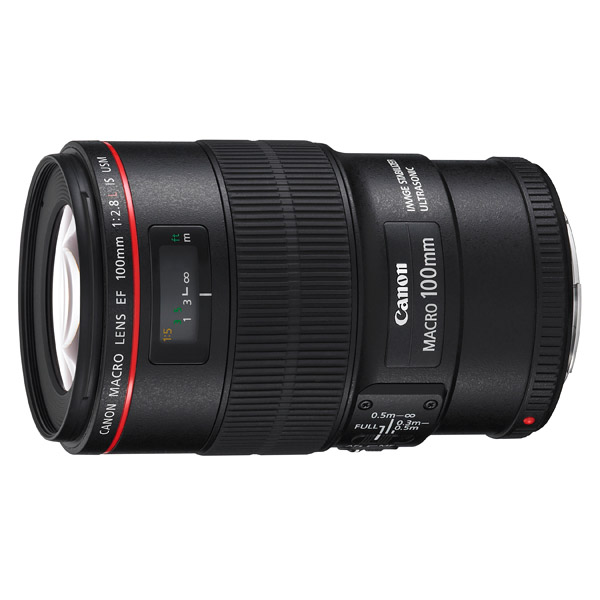 | Canon EF 100mm f/2.8 L Macro IS USM Pros: Excellent sharpness as long as it closes a little, construction and lightness, is, it is also good for portraits, 67mm filters, does not extend to ratio 1:1 Cons: Missing bracket, sharpness to f2.8 Opinion: Lens had by chance, I had other macros and I always "snubled". I have changed my mind: it is a great lens in relation to certain considerations. It is very light, it is stabilized, it has a discrete AF (also on Sony with Sigma MC-11), it is very sharp at f 5.6 (and for very I mean that I solve the A7R2 to 1:1 reports without problems), and it makes great in the portraits being "soft" to f2.8. Basically in my opinion is a lens absolutely to have if you have only one macro lens, or however you have a "minimal" kit. The lack of bracket is not a problem, it weighs so little that you will not strain the bayonet. The construction is average, not granitic as a Sony GM, but not even plasticose like the Nikon G. At the figure of 500 \ \ 600 € I think it's an excellent purchase. Maybe I'll keep it, maybe I'll resell it, but not so much for him, as for my luck to have already a 60mm 2.8 with RR 2:1 and a Sigma 180mm 2.8 with RR 1:1. But if I were to keep only one of them, I would almost certainly choose this. The only alternative is the Tokina 100mm, but it has neither the "sex appeal" of a red ring, nor an AF so fast on both Canon and Sony. In conclusion If you are looking for a macro lens is a purchase to be done with eyes closed. With the necessary considerations on the versatility of this lens, I consider it a "must-have" for all the canonists. It could be superfluous exclusively for macro lovers, probably already possessing a 60mm and a 150\180mm, which would find in this focal a little useful addition. sent on January 06, 2019 |
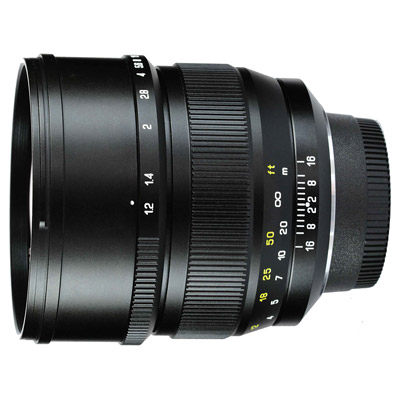 | Mitakon Speedmaster 85mm f/1.2 Pros: Construction all metal, F 1.2, sufficient sharpness to TA, resistance to AC Best of the Canon 85 1.2 L II, e-mount version made with criterion, very competitive price of about €500 Cons: Construction demanding, lens-free AF, no chip for EXIF, excessively brittle aperture, hood to be purchased apart and indispensable Opinion: Prestige Lens, with a truly egregious construction. It is completely made of metal, with a long and precise focusing ring, and a Leica style aperture ring placed in front of it. The focus is very smooth and "smooth", while the aperture ring is very brittle and declickata (although it is not as clear as this is possible and I have doubts in the length of time of such a mechanism). Despite the Chinese origin is a great lens in terms of image quality, with AC contained (in reference to the aperture of F 1.2), and a very good sharpness already to TA, which clearly increases exponentially up to f 5.6. Compared to the Canon 85 1.2 L II It is more contraended, with a very pleasant bokeh, and a general rendering in line with the counterpart. The substantial difference between these two lenses is the autofocus (in addition to the price clearly), which is a significant deficiency especially in dynamic contexts, in which the Mitakon is completely unusable. On reflex is very complex to use even in static contexts, and save a great knowledge and experience in manual focus, take home quality shots will require considerable effort and many shots lost. Different discourse on mirrorless, in which the focus aid allows a much more carefree and serene use, without excessive peripezie. Note how the extension to be adapted to Sony-E is of good quality, with an additional knurling to facilitate the grip. Very different from the various laowa\\sigma that instead simply put a cylinder, in the first case of really low quality (I do not recommend in fact the FE attack Laowa, it is better to buy the Canon and adapt them also for the presence of the chip with the EXIF). Very elegant packaging, luxury considering the leather casket in which we will be delivered the lens, with various certificates that attest to the pre-sale controls. Bad choice not to understand a lens hood, and indeed to sell it apart from an unconsidered amount. I recommend a simple aftermarket quality lens hood, in metal and with inner velvet. In essence it is a character lens, with a Leica-style construction (better than the Zeiss in terms of scratch resistance), which will give great satisfactions to all portraicists with a contained expense. Obviously in case of a use on SLR you need to consider having to work on tripod in LV. Do not make the mistake of buying it to use on simple viewfinder, because in my opinion the experience will be frustrating. sent on January 06, 2019 |
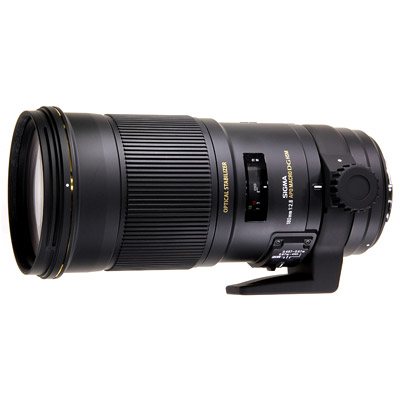 | Sigma 180mm Macro f/2.8 EX DG OS HSM Pros: Great but not "excellent" as the price Cons: Poor construction and ignoble lampshade, unusable filters, quality not up to par with the new proposals Opinion: I have to update the review after trying other much cheaper deals. This lens costs over 1300 euros regularly imported and simply does not worth them. It's a multipurpose lens, on Sony and Canon it becomes a very respectable canvas with a very good AF, but it is behind a 70-200 2.8 decidedly more flexible. It's a macro lens, and some AC you notice. Nothing limiting, but at almost 1500 degrees of macro lens you have to aim for APO performance, which this lens does not clearly achieve. The sharpness is also high but not from 10 to 10 as can be a modern macro ( sigma art 70 or irix 150 for example ). The construction is of poor caliber like the old sigma, decidedly distant from the new art-sports. Summing up is a lens that wants to be "everything", but in practice it has important limitations in every area in which it would like to place itself. For macro has some AC and the inability to use filters, for sport is a fixed and not too long with an AF less than 300 2.8 or the modern 70-200, for portrait is a beast that will make the shooting session a hell. Basically wherever you want to place it, there are better and cheaper lenses. I think Sigma urgently needs to update this lens, bringing the image quality to the level of 70 Art, reducing the front diameter (also closing to f4 the diaphragm ) and filing the price to a more suitable figure. The lampshade does not comment on him because he is slack, plastic, ignoble. sent on December 30, 2018 |
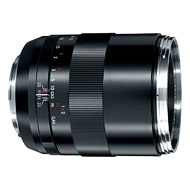 | Zeiss ZE/ZF.2 Makro-Planar T* 100mm f/2 Pros: Lofty construction, colossal optical yield, f/2 aperture untraceable on a macro (albeit 1:2) Cons: Construction (the metal scratches too easily, just a nothing to find scratch or paint stripping), MAF eternal ring, tropicalization very bad Opinion: I tried to roll out the dough with this lens, but it failed. How come? Is it not suitable to roll out the dough? I thought for what it cost at least as a rolling pin was usable. Joking aside (embarrassing reviews at the limit of trash), it's not a lens for everyone, and I've been disappointed for reasons inherent in the construction. The optical quality is excellent, from the sharpness to the micro-contrast, the praises that are read online are all justified. Its ductility is not a small value, it manages to unravel in a phenomenal way in portraiture, despite the words "Makro". The aperture f/2 is unique in this focal range, and it helps to "macro" magnifications to have excellent results of blur despite the maximum ratio of 1:2. The construction is completely metal, even the lens hood. If on the one hand this gives back an exceptional feeling, at the slightest touch the paint will jump, and the "lived" look is around the corner. Needless to mention AC, bokeh and colors, in a similar lens it is assumed that everything is at the top. Too bad for the eternal MF ring, probably exaggerated in the extension. The lens lengthens by doubling its length, does not have internal rotation as on a 100 L Macro or a 90 G Sony. After I bought it, 3 days and I found a touch of dust of about 1mm in the central group of lenses. It was probably already there, or maybe it came out of nowhere while it was in my case, made a dust resistance so low in such an expensive lens is simply inadmissible. It is not the first Zeiss in which I find myself a type of scaffold inside, already had experience with a Batis 85 1.8. The yield is not affected, the problem lies in the possible emergence of moulds that would find ideal nourishment in a similar granellone. In essence I would buy it again, because anyway as optical quality and "prestige" is unreachable, but I recommend to look very carefully at the lenses and be sure that they are clean. I had bought it online I could not tell, and alas I believed in a greater seriousness from the shop that I will not name. sent on December 27, 2018 |
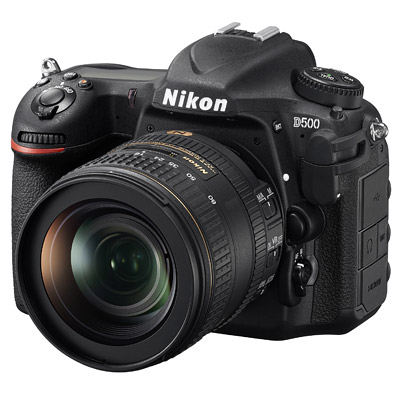 | Nikon D500 Pros: All Cons: Not having it Opinion: I find myself reviewing the last successful shot of Nikon home, before it went crazy with the mirrorless of dubious utility. So much is this machine is exactly everything you could want for sports and wildlife use. It doesn't have the AA filter, it has a 10 fps burst, it has an infinite buffer, an AF in some conditions faster than that of the D5 (!!!), a miraculous ISO seal (like a D750), double sensible slots (a xqd a UHS-II, not like Sony that puts UHS-II and UHS-I , so as to neuter the main slot, but it goes well), scary body completely in magnesium, all the keys at hand and beyond, touch screen, backlit keys (incredible breakthrough). I bought it to do sports having a kit Sony: In my opinion much more sensible to have a 200-500 or a 300 2.8 AF-S + d500 than to buy and mount the 100-400 GM on Sony. But then it has an AF hallucinating, we chase the bikes on the track, and anyway you have a scary super-Tele Optical park, starting from 300-600 AF-S, up to zoom 150-600. In essence It is a definitive machine for those who need a definitive APS-C, and also for those who use Sony and do not know which super-tele buy themselves (there are alas). Beware because it has a very demanding sensor, it is a 20mpx without AA, which means a pixel density of almost 50mpx. If you plan to buy it as a "handyman" and use slow patacche, there is a big risk that you may be disappointed. sent on December 20, 2018 |
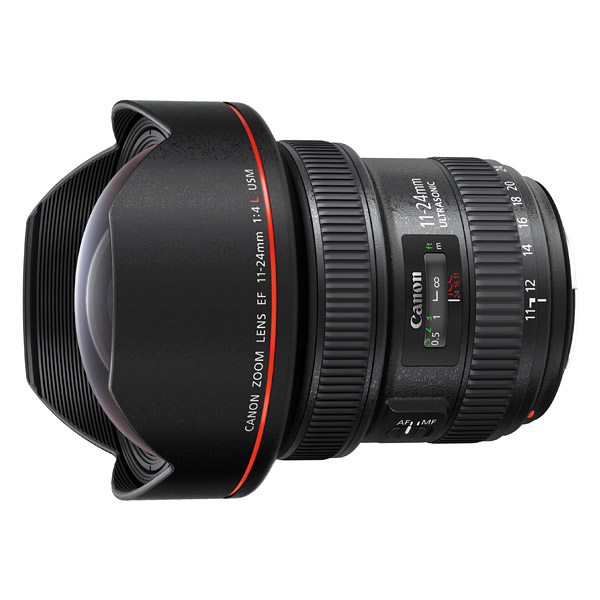 | Canon EF 11-24mm f/4 L USM Pros: Focal excursion, uniqueness, distortions controlled in a masterly way directly from the optical scheme, body that although not in metal is quite solid and allows temperature changes without problems that a metal construction would lead behind Cons: Price Opinion: It's a gorgeous lens, if it didn't cost a crazy figure it would be a recommended purchase. Unfortunately the online reviews are extremely misleading, and among those who can not read a graph MTF, and who defines a lens "professional" (to do what I still have to understand), you have to clarify. If you buy it hoping that your landscape photos suddenly become magical, you're throwing the money. What this lens guarantees you is an immense angle of field, with all the consequences of the case. It has a beautifully insignificant distortion, which at first impact could make you say "wow", pity that then takes over the other aspect: look at the world with a focal length of 11mm. If on the one hand the lines are beautifully straight, on the other you will notice how the subjects in the center seem far away from you, and almost "distorted" while not being. This means that your central subject will decrease in size, and you'll have to get used to that "vision". The yield to F4 is fairly low to medioframe\\edges, you have to close to F8 on dense sensors. You will find online reviews of photos made with 5d Mark III, which already makes you understand the preparation of these individuals, but it goes well. Not fully recommended for astrophotography without astrotracker due to the AC (in solvable daytime photos) and the low uniformity centro\\edges at F4. In conclusion, it is a beautiful lens, certainly innovative, but personally I would not buy it even if it cost €1,500 (bought fortunately used and resolute even more). I have not found in the focal so wide that magic that so decanta, but I found a lens extremely heavy, cumbersome and with problems of flare obvious given the exaggerated size of the front lens. In my opinion you can spend considerably less and buy a Sigma Art 14 1.8 or a 14-24, globally more balanced. The final weapon of this lens is its control over distortions, but in my opinion it does not justify the faults that it carries, and the price to which it is sold. sent on December 20, 2018 |
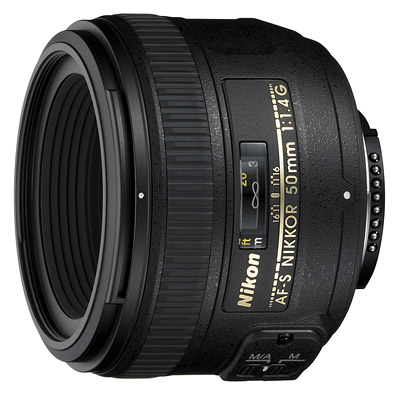 | Nikon AF-S 50mm f/1.4 G Pros: Good image quality, very compact, old-fashioned microcontrast while having an internal AF Cons: Price to the new perhaps excessive, ridiculous construction Opinion: It is a strange lens, certainly with an unjustified list price if considered the only IQ. It has its own why: it is very compact, and despite the large opening it can still be used in street photography without giving in the eye. It is not sharp, it has a gimp, but anyway if purchased around 200 \ \ 250 can give satisfactions. To be set aside immediately the idea of buying if you are of those that count the pixels, is not sharp, but still has a nice image quality (blurred, progression of the planes, colors). It suffers a lot the modern trend of "sharpness", and it is by many unjustly snubled. Of course, if you compare it to a Sigma Art 1:1 will be defeated, but you have to relate the surrender to Peso\\costo\\ingombro. In my humble opinion you will be satisfied for a carefree use, with a minimum of post-production and avoiding imposing prints. The construction makes you laugh, so much so this is the trend of Nikon, accept it. sent on December 20, 2018 |
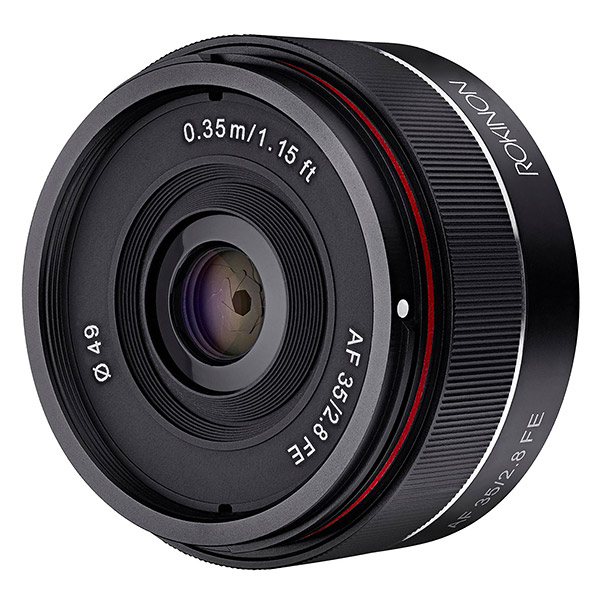 | Samyang FE 35mm f/2.8 AF Pros: Price, sharpness, final yield Cons: Construction? But you can't ask €200 the moon Opinion: Splendid optics, especially in relation to cost. Used is about €200, and it's worth them all. It's the cheapest Sony lens there is, and it's one of the absolute most lightweight ever built. Sure it's all plastic, but what do you pretend? The metal weighs, Samyang has been shown to be able to produce qualitatively important optics, but in this case it has decided to save both in terms of weight and cost of production (and thus of final sale). It is not a sharp lens from edge to edge, it is not suitable to make night landscape (not to f 2.8, you have to close really so much for a uniformity as it should be and therefore at night it is unusable), it is a nice handyman for street to carry around without many problems. You cannot expect the image quality of a Sigma Art, but it still restores beautiful three-dimensional images, favored by a non-brutal sharpness and an important micro-contrast. In Summary, for street enthusiasts is a must-buy, it costs much less than the Zeiss (which makes its price its brutal flaw), but still given its ridiculously priced I would call it "must-have" for all Sony owners. Samyang if it continues so it can clear all other third-party manufacturers, managing to offer the right product at the right price. sent on December 17, 2018 |
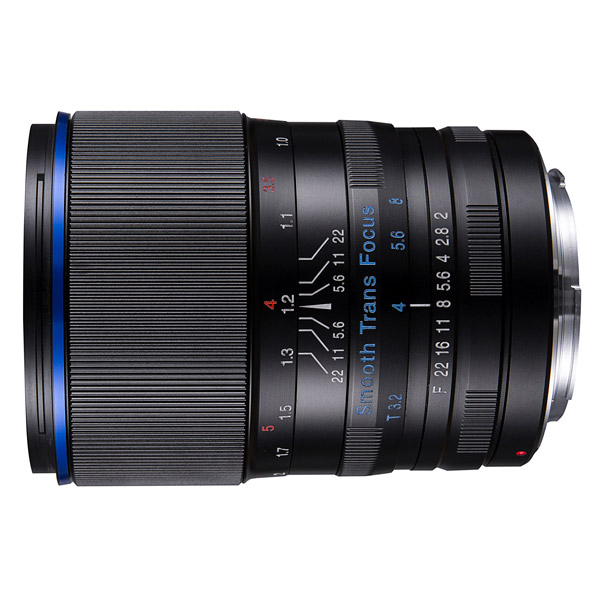 | Venus Laowa 105mm f/2 STF Pros: Sharpness, 0 AC, 0 distortion, excelled bokeh even without STF, STF, Microcontrast (3d Pop) Cons: As usual the FE version is of an exemplary ugliness Opinion: Stellar optics, little to say. Excellsa sharpness (but still not exaggerated), microcontrast, APD lens (although aberrations seem to be an APO lens), completely metal construction. The bokeh is gorgeous, in every condition and in every way. Not useful the STF system, but that however allows to improve the yield of light points or bokeh under certain conditions (not to be confused with the Nikon DC which is quite another thing). I would definitely recommend it to anyone needing a lofty portrait lens. It is charged, used less than €600 is not found, and new costs over €1000. The construction however is like a Zeiss, and the APD lenses cost. The addition of a gem as the smooth trans focus improves the package of a lens that even without would have been magical. Little useful in dynamic contexts (it is a lens only MF), so valued well. It is definitely an object of luxury and prestige, I would call it a Zeiss in everything and for everything. I strongly advise against the FE version, buy that Canon and adapt it. It's bad beyond consideration, and I don't understand why Laowa designed an "extension" in this way. sent on December 14, 2018 |
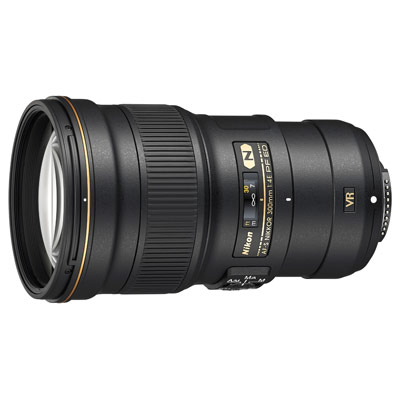 | Nikon AF-S 300mm f/4 E PF ED VR Pros: Miracle optics Cons: Price Opinion: Come on, when I picked her up, I was going to laugh. It is a 300mm f/4 that weighs like a 35mm quality. It's crazy. The AF is very fast, effective stabilization, if only it did not cost a crazy figure it would really be a "miraculous" optics. It's just a pity that it costs an embarrassing amount, about 2000 euros, which for a 300 f4 is a enormity. But here is a reflection: a particular quality is paid for. We are talking about a 300mm f4 that weighs not even 800gr, very small and with an excellent image quality (compared obviously to other zooms of that category and not obviously to a 300 2.8 fixed )... doesn't deserve the money it costs? It is up to you to make the necessary considerations. If you think that such a lightness would allow you to take home shots otherwise not possible, I think the investment makes sense. Of course it is nonsense if designed with a typical use of a 300 2.8, i.e. fixed on the head to wait for the subject to arrive. sent on November 22, 2018 |
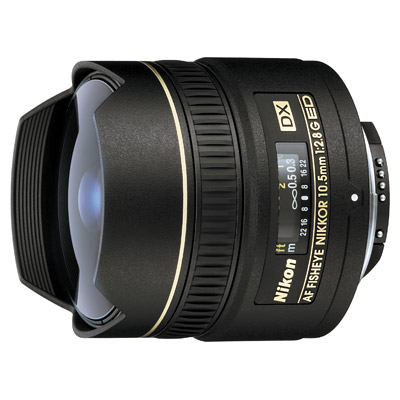 | Nikon AF DX 10.5mm f/2.8 G ED Fisheye Pros: Great lens if that's what you're looking for Cons: Nothing Opinion: Complex lens to review, in fact leaving the white spaces above is the thing in my opinion more sensible. It is a very attractive price lens, dictated by a fast "reckless" post purchase resale of many. We go for order: This lens is born for DX, and used in such a way is a fantastic 15mm with an excellent image quality from edge to edge, and an enviable construction compared to modern lenses; On full frame it becomes a circular fish-eye, very complex to use correctly, and if purchased by "purists" of the photograph could prove a hole in the water. Indeed, it is a very artistic and little "technical" lens: If you are not imaginative (like me that in fact I resolute it in a lightning-fast way), you will throw the money and resell it. Note that on full frame to be used should be removed the "fins" of the lens hood, unfortunately not removable and then have to be cut with a criterion by an expert. You can find many in the market already arranged for use on FF. Surely it is a great lens for its segment, the problem lies precisely in finding its use. I sold it to a professional who would have to use it for photographs at 360 ° of interiors. Try it and do not buy it without having it first tested. But if you only need a wide angle for reduced size DX go quietly because there is better. sent on November 18, 2018 |
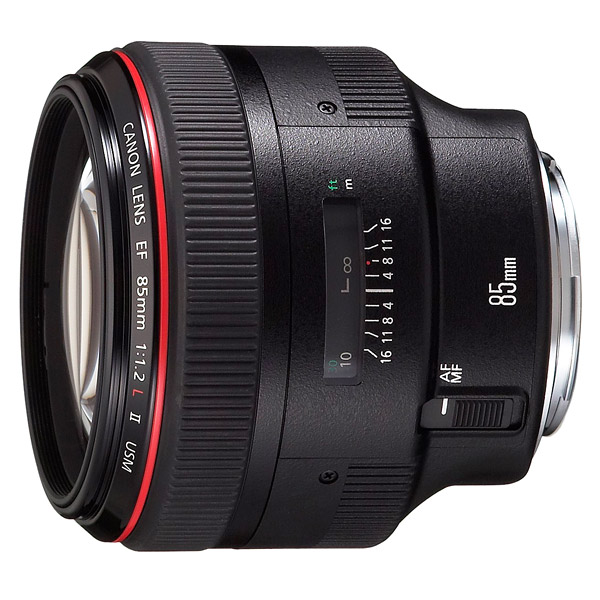 | Canon EF 85mm f/1.2 L II USM Pros: Definitive for portraits Cons: Nothing except the construction we say "delicate". Nothing to see with the next version 1.4 that compares is a SPACCANOCI Opinion: There is no way that this lens can be "outdated". Masterful for portraits thanks to its opening and its minimal optical pattern. A lens that makes its character and its ability to faithfully restore the image to its winning weapons. A spectacular micro-contrast, a non-excessive sharpness that allows pleasant tonal passages impossible with much more correct lenses such as a Sigma Art. This lens has 8 elements, the Sigma 85mm has 14. While a higher number of elements could correct aberrations, on the other hand it destroys the microcontrast. Personally I think this one of the best portrait lenses ever created, and that can hardly be replaced in the future, given the tendency of nikon\\canon\\sony to produce lenses super sharp but not very artistic. But to emphasize how the ergonomic side is really outdated, and the general construction is not much. The specimens I had skinned, and the last lens placed on the bayonet was more time that I disassembled to clean it than the one I used. Irony aside, it is a very delicate lens and to be cured, an error while you mount it and do damage by salary. In fact the lens placed directly on the bayonet is in my opinion a bad engineering choice and unjustifiable, which will be the source of a few anxieties and worries. sent on November 14, 2018 |
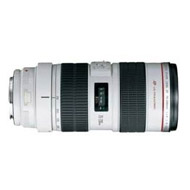 | Canon EF 70-200mm f/2.8 L IS USM Pros: ---- Cons: It's not worth buying Opinion: The price difference between this lens and the next version is lowering terribly. There are 70-200 is II to €1000 in perfect condition. What is the point of spending €200 less, for a perspective that is largely demonstrating its age? It is sharp if you use 12mpx machines, if you climb you see its objective limits. He weighs like a kid, and the stabilizer makes a tremendous noise. By the way if they also make them pay used because they are rare to find, and therefore there is risk that you find them even at €900. Absolutely not recommended in my opinion the purchase. Much better than the smooth version, also because shooting at 1 \ \ 60 and the like with a 70-200 I find it a bit... useless? If you are doing sport at 1 \ \ 60 The images are moved to you because the object moves, if you are doing stationary portraits where you can use 1 \ \ 60... Do not use the 70-200. I do not know, I repeat how personally I find the difference in cost with version II widely justifiable, even in the perspective of future resalability. I have yet to understand this obsession with the stabilizer, it seems that people do not live without, when for me is really useless. More expense, more weight and less quality only for the stabilizer? sent on November 08, 2018 |
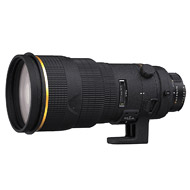 | Nikon AF-S 300mm f/2.8 D IF-ED Pros: The best 300 2.8 home Nikon in terms of quality Cons: You have to be big to hand it free Opinion: What about, a monstrous lens in terms of optical quality and construction. The only flaw is the important weight of 3kg. I don't see it much as a "wildlife" lens, more from sports photography quietly laid on a tripod. The contrast, the sharpness, the final rendering of the image, there is no history, is equal to the fantastic 300 2.8 today. It is to say that however the latter possess a redistribution of the best weights and a greater lightness. I do not consider the VR an advantage, since using this lens freehand I find it a bit ' a suicide, and also because I would not use it with times in which the VR can make a difference (shooting sports or similar with times Style 1 \ \ 50 do not find it possible in my opinion). The presence of front filters is convenient (they are mounted near the sensor), which allows to mount any 52mm filter without any problems. Of course, in case it is a polarizer there is the fluting to remove it every time, turn it and reinsert it. Nikon sells its externally rotatable B + W Filter by means of a special ring to the figure of €150. I find it to be an acceptable figure for a filter of that quality, and most likely I will buy it shortly. Be very careful in buying this used optics, because if you sell the filter holder without anything, you have to buy a Nikon NC filter 52mm (This glass is part of the optical scheme so it can not be removed and so many greetings). Basically if found cheap in the used, in my opinion is an obligatory purchase for all those who need a 300 2.8. Note that the AF is substantially the same as the later versions, and in terms of real differences, it only changes the minimum focus distance (of course in favor of the modern versions). sent on October 30, 2018 |
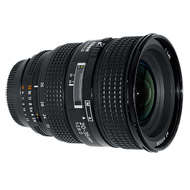 | Nikon 20-35mm f/2.8 D IF Pros: Granite Construction, perfect focal length excursion, optically egregious Cons: For the reference price nothing Opinion: Nikon's old-fashioned optics, had and of which I immediately appreciated the robustness. The focal range from 20 to 35 allows to contain the dimensions and the use of crazy systems to reach ultra wide-angle focal lengths. This allows an excellent image quality from 24mm to 35mm. Unfortunately at the minimum focal length of 20mm the aberrations are several, and on sensors already from 24mpx the sharpness from mid frame to the edges is not satisfactory. Optic Born for film, you can not ask too much in terms of optical rendering. For the price of about €300 is definitely a purchase to think about. Would I recommend it compared to 17-35 2.8? I'm not sure, also because now there are some specimens at really low prices, and the difference in quality is remarkable. Good possibility to assemble filters of human size. It certainly can't compare with the newly-produced super-wide angles and production, but for a low budget kit, it can be a great choice to get the focal lengths from 0 to 50 without a major expense. sent on October 30, 2018 |
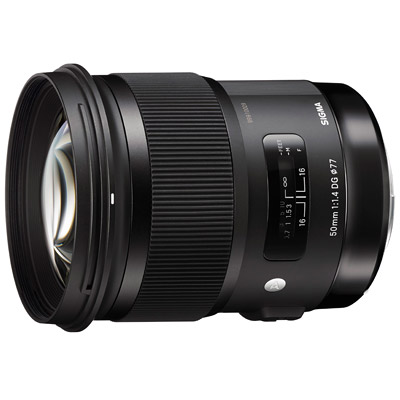 | Sigma 50mm f/1.4 DG HSM Art Pros: Optically unrivaled if we seek sharpness and creaminess of the bokeh Cons: Construction not up to par (like all sigma Art), problems with autofocus and size Opinion: A bit like all sigma Art: sharpness at the highest levels, excellent bokeh, but ridiculous construction. As usual you use it two months and it looks like it's 30 years old. To add the stress of the dock (not a real problem, but anyway €40 you have to unhook them, and sometimes you have to calibrate everything), that when you start having 4 \ \ 5 Sigma lenses, it becomes enough time to spend to calibrate them all. If they are zoom, let it go because we spend the day. Of course, at the optical level is a bomb, it will not be "characteristic" but I could call it "surgical". It doesn't get unbalanced in dominant tones, it has no smude, it's a scalpel. If that may interest you it is up to you. Absolutely not recommended on Sony, either with Sigma MC-11 or native. It becomes cumbersome and impossible to turn by hand (like all Sigma Art unfortunately). Definitely a very good purchase in anticipation of prints of important size, bad with regard to street or other similar genres. sent on October 28, 2018 |
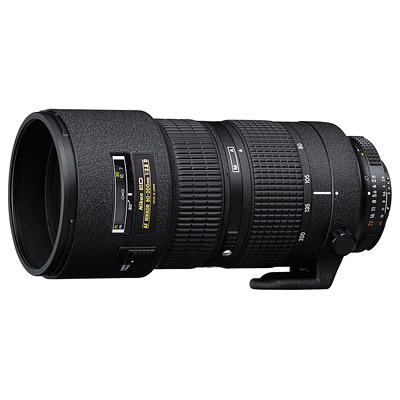 | Nikon AF 80-200 f/2.8 ED D Pros: Nice lens if found at the right price Cons: Possible molds Lurking Opinion: A very interesting lens. Compact to be a 70-200 (10mm do not feel), definitely brandable freehand and the absence of the VR is not felt. I'il be the big one, but it really seemed like a feather. The yield is interesting, the coldest colors of the bestial VR II, but the sharpness is completely satisfactory. Unfortunately the technology is felt, and if for the optical rendering the difference is not so marked, for everything else yes. Not having an internal AF motor, it exploits the engine machine, and albeit fast it is very noisy. I would not recommend it for weddings, but for sports where the quietness is superfluous yes. Also because the VR in sport I find it quite unnecessary, however, having to use very fast times to freeze the image. Only huge downside is the use of glue for the lenses. The molds are lurking. Beware when you buy it used, because the sellers are very clever (I happened one today), and certainly will forget to tell you. To be sure open the diaphragm to TA, aim the inverted lens (as if it were macro) towards a light source very weak or close (if the direct bet you blind and see nothing), and make sure it is clean. Don't panic about some speck of dust, but mold yes. It can be dangerous even for the other lenses you have. It's not worth the risk. Don't worry because the molds are recognizable. Looks like cobwebs. In case there is some speck of dust, just avoid keeping it in damp places where it might arise. Once a lens is attacked by molds, it is better to throw it. 9 times out of 10 repairs are not carried out as required, and you will risk throwing hundreds and hundreds of euros in photorators who will answer "eh but you can not do more". sent on October 26, 2018 |
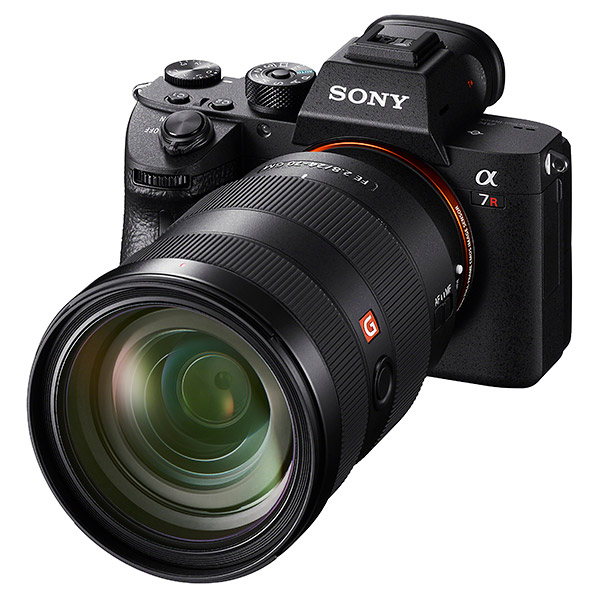 | Sony A7r III Pros: It's practically a A7R2 to which they have removed the flaws... improved the solidity of the keys, the fluidity and the resolution of the viewfinder (even if the increased resolution does not notice much as opposed to the higher refresh), double slot, high burst considering the 42mpx, PIXEL SHIFT, possibility to use the machine by loading it with a Powerbank directly (not present this function on series A7 1 and 2), AF finally usable in a perfect way with Canon optics even at night Cons: Ergonomics not Excellsa (usual need for battery grip or additional pieces), cryptic menu (less than the series 2, here they put a "recap" at the top, but there are still more features) with even more cryptic translations. You'll end up with stuff like "AST. Faf. RAF." To synthesize very long translations that will be impossible to comprehend except by opening the manual. Opinion: I was very undecided whether to buy this car or not. I had so beautiful a A7R2 at home, but I was limiting in terms of AF. In fact, being in love with Sony sensors and doing naturalistic, I was always bogged down in shutter speed and autofocus that with Canon lenses was unfortunately insufficient in very dynamic environments (and I certainly do not spend more than €2000 for a 100-400). If in fact in controlled environments the usability of Canon lenses was "sufficient", in dynamic environments unfortunately not. I'm not saying it was unusable, but not perfect. Let's add some flaws on the batteries always to be replaced, overheating almost immediate, and some other defect... Let's say that €3,000 I would never spend it on this machine (having the R2 is meant). However I was proposed new to €1950 (used a week by a guy out of his mind, but is new to €2500 with cashback and worth them all), and I could not refuse. It's perfect in everything, nothing to add. Brutal for landscapes and the like thanks to the possibility of pixel shift. This technology in fact is not replayable in post-production (as many mistakenly think). It is not a simple stack of images to increase the resolution, but exploits the intrinsic of the Bayer sensor to faithfully restore the images, capturing the same scene by translating in 2 dimensions the sensor of 1 pixel, up to 4 shots. It is not something "prizes and hello", because however in post-production these images must be merged, modified, and in case of moving subjects (clouds, water etc.) must be masked. This does not mean that the static subjects reach a definition and a detail unattainable from other combinations Machines\\lente. For everything else is a brutal machine, with a monstrous AF, an imposing burst, eternal battery life... Essentially the definitive machine regarding dense sensors. But if you only do real images and are willing to sacrifice the pixel shift, I would opt to save and remain on the R2 version. Note that this Pixel Shift is only usable in controlled environments. In fact if you photograph a landscape, the slightest movement sends everything to the air. Therefore to discard any situation with Nuvole\\fogliame. UPDATE: Updated after a few days of use. The difference in viewfinder level is impressive. It is already much better than the a7r2, and immensely better than a normal A72. At the outlet level each key is much more robust than the previous version. It almost seems to have passed from a Canon entry level to a 5d (to make a comparison). Just passing instantaneously from a A7R3 to a A7R2 you can see the many improvements made, even in terms of the layout of the keys, slightly improved with the presence of a button AF-ON Canon style that previously lacked. Addition not to underestimate the high refresh rate of the viewfinder that I think reaches 120hz (but it is still a pleasure to move quickly and see almost as if it were an optical viewfinder). UPDATE: In the end I was resolute and I resumed a A7R2. Better €1000 more in your pocket, than those few goodies in addition, which for an amateur have very little sense. sent on October 17, 2018 |
 | Zeiss Planar T* 50mm f/1.7 (C/Y) Pros: For the price all Cons: ------ Opinion: Superb optics, taken with a bargain at just €80, and I have to say one of the best 50 I've Had. Surely it stops everything if you reason in terms of "peso\\power". small, it mounts on any mirrorless without any problems. I have few shots made with this lens, but I must say that even a simple flower takes on a character all its own. Obviously I talk about the yield on full frame, on aps-c I do not express myself. Try it because if you like vintage lenses in my opinion it is one of the Best. The bokeh is really peculiar, quite creamy despite being "only" F 1.7, but still it's a bit "swirly", which makes it really unique. sent on October 15, 2018 |
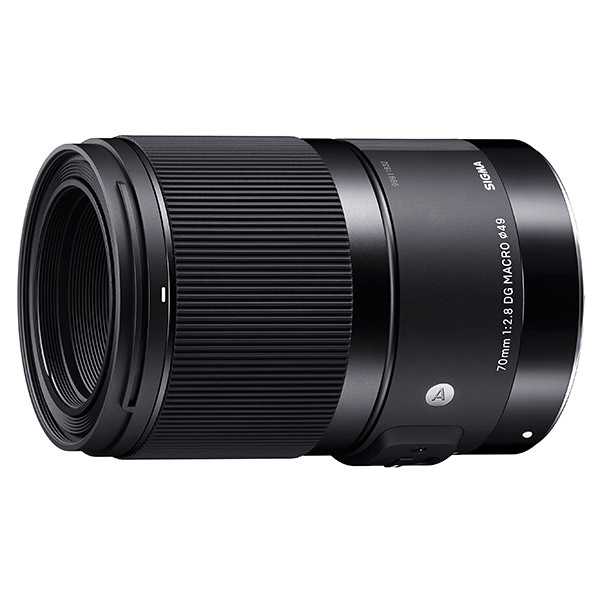 | Sigma 70mm f/2.8 DG Macro Art Pros: Compulsory purchase for Macrophotographers Cons: Maybe on Sony E-mount is unbalanced, but besides all Sigma art for Sony are tremendous in terms of ergonomics Opinion: Magnificent lens in every Respect. Mind-blowing Bokeh, sharpness higher than any existing lens (staying on full frame), really small size. Allows it to be used anywhere, and lack of stabilization frankly does not feel given the lightness. Horrendous the fact that arriving at ratios of 1:1 the lens will stretch enormously, which the Sony 90 G does not do. It has, however, a greater lightness, a better sharpness, and probably a general rendering of the best image. Unfortunately the construction compared to the Sony is unparalleled... But it costs half. Lens paid €450 New MT Trading, the only lens in my life that has bought new (or that you remember frankly). It is not advisable for very susceptible insects (it is only a 70mm), so it is better to operate it for static Subjects. At the level of optical quality does not exist any better, it really does not have a single flaw about the IQ. All I can do is advise her with her eyes closed. sent on October 14, 2018 |
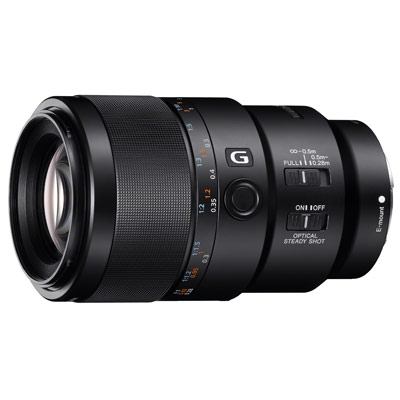 | Sony FE 90mm f/2.8 Macro G OSS Pros: sharpness, internal focus, panic construction, all bokeh, fair price Cons: Nothing Opinion: This is the perfect lens for me. Used several times, resolvated and rebought often. One of the very few lenses I just took in my hand made me say "WOW". The construction is absurdly solid, everything is metal, including the Ring of MAF. You won't find a specimen of these ruined in the trade, because unless you helmets you will never seem to used it as it is incredibly solid. Switching from MF to AF is possible by sliding the ring nut all the way up and down, comfortable compared to a switch. But then you guys are perfect, it has a very fast AF, the bokeh is amazing, the sharpness is superb, it doesn't slide forward the body even going to ratio of 1:1 (like macro lenses that stretch)... I don't know what to say, you have to try it 5 minutes and you'll love it. I never praise a lens in this way (my reviews speak clearly), but here Sony is to applaud. It has also succeeded in inserting an internal stabilization, probably useless but it is always comfortable. I sold it exclusively because I switched to a sigma art macro 70mm. But if I had to trim the kit, I would definitely take it to have a portrait lens and macro that covers me from 50 to 135mm. Among other things, it has a very comfortable customizable button at will on the body. It's also tropicalized. I do not know, it is only missing that on one side of the lens bait a Neapolitan coffee. Ah and all this for the modest amount of €700 used and under the €1000 new. One of the very few lenses that deserves a 10 \ \ 10 (along with the Batis 18mm f2.8 and a few other lenses). sent on October 12, 2018 |
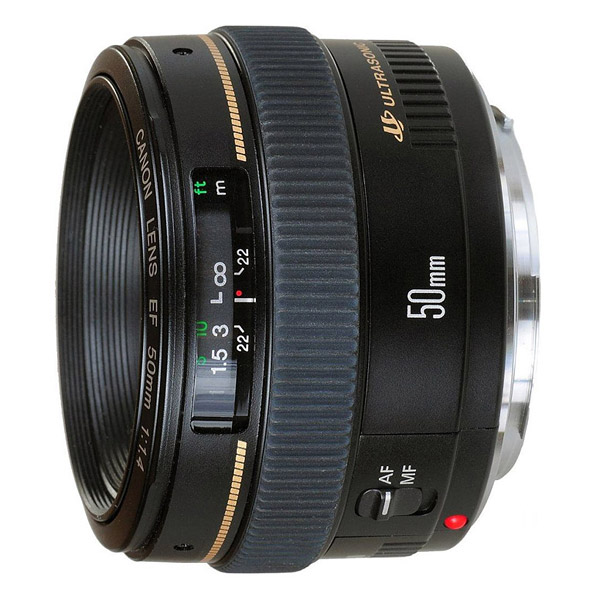 | Canon EF 50mm f/1.4 USM Pros: Good starting point Cons: At the price at which there is nothing of what Opinion: Nice lens to start photographing as it should, to get comfortable with the reduced depth of field. Costa €200 new, get to make long disquisitions on chromatic aberrations or the non-superb sharpness would be misplaced. It's a good starting point for everyone, better than the Plasticotto 50 1.8 that frankly disadvise. If you do not have €200 for a lens, do not buy a reflex and go 3 times a restaurant. For the rest will give you some rewarding shots. On APS-C it becomes an 85mm suitable for portraits. It also pulls out a really blurry one, of a middle ground between a swirly and something not well defined, chaotic but without being ugly. If you are amateurs and can not focus the first few times do not give up, just take your hand. Note that it is also a very compact lens. sent on October 12, 2018 |
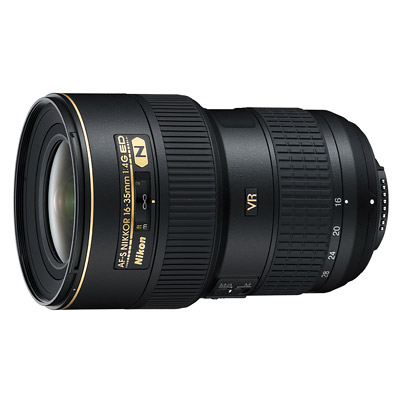 | Nikon AF-S 16-35mm f/4 G ED VR Pros: Great lens... Cons: To use as Paperweights Opinion: There is unfortunately the slip of a brand, and if for Canon was the 16-35 (which have always been far from being a decent lens), for Nikon is this lens. Now let's bypass the construction considerations directly. Already said on my review of 24-70: Nikon wanted to lower the bar. Maybe to try to sell more spare parts and more manpower once the guarantee is over, I have no idea. I only know that if you compare it to a 17-35 or 20-35, the construction will be enormously different. I can't get my head off the toy sensation once I've picked up the new Nikon Lenses. It's going to be me, but it's okay. About the optical quality I do not understand how you can praise a similar lens. It costs a roar, it is an f4, the sharpness at F4 makes laugh from half frame to the edges and becomes homogeneous by dropping on average at f11. Nikon has put the VR in a wide angle because so you can shoot at F11 in broad daylight without raising the ISO (ahahah). I don't really tell you not to buy it, I just tell you to look at the graphs MTF or lw\\ph online, and to see this lens actually as it is. But then it costs new as a sigma art 14-24... sent on October 12, 2018 |
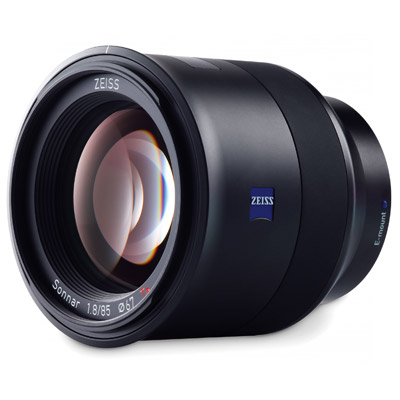 | Zeiss Batis 85mm f/1.8 Pros: sharpness, construction, AF, Lack of AC... in short everything Cons: Senseless Optics Opinion: Zeiss has produced a masterpiece of Lens: very solid, with a ring of MF that looks like crumed butter (difficult to explain the sensation), excellent sharpness, non-existent AC. I mean, it's a perfect lens, except for one thing... it costs madness and it's f/1.8. Zeiss used to be a stratospheric lens and then said "tié is an optical quality but to use it you must kill, all manual". Now proposes these lenses with absurd constructions, small, autofocus, schermetto style OLED "technology pioneers", but then I'll Square an 85mm with an aperture 1.8. I refuse to spend €1,000 for an 85mm with an aperture f 1.8. The Nikon consideration will pull it over, that Canon too, and the Sony apart from a less prized construction and some more AC is Identical. By the way my specimen had a huge speck of dust in the last front lens. I wonder how it came in, but it was really big, and I was going to contact the Zeiss, but then I sold it. It is not a magic lens, it has no particularities you will remember. It seems to me so much a optics from €300 "best buy", as could be the Nikon 50 1.8 G for nikonisti, simple without many pretensions but super sharp and EXPLOABILISSIMA. Pity that this costs over €1000 NEW. I find it unequal and ridiculous to compare with a Sigma Art 85 or a Canon 85 1.2 L II. Zeiss on this lens as on the 135 mm f/2.8 (a lens like that you buy vintage from €30 and you have with some retouching in PP the same optical quality, but maybe even without) is out of your mind. There is no other explanation, why make an 85mm f 1.8 and make it pay so much by taking care of the construction so much, you must have lost the Reason. If you want to buy it do it, but don't expect it to become your favorite lens. sent on October 12, 2018 |
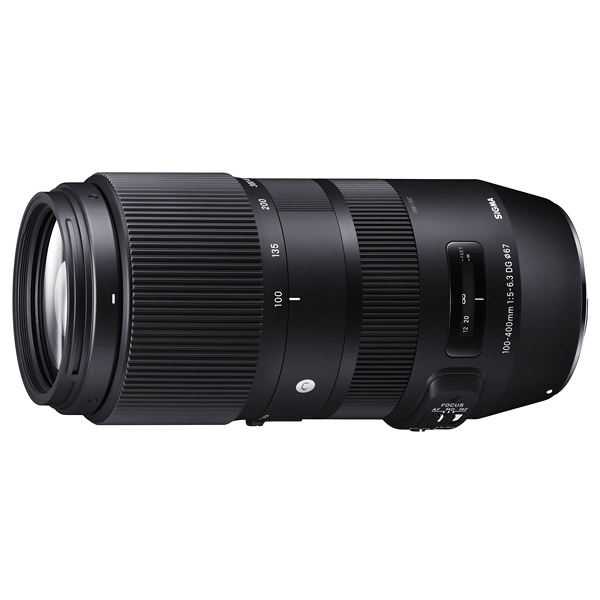 | Sigma 100-400mm f/5-6.3 DG OS HSM C Pros: Stratospheric lens for cost and use Cons: Nothing Opinion: As usual the reviews on Juza are misleading. We are talking about a lens capable of solving almost completely a Sony A7R2 TA (which in this case is 6.3, but acceptable to have maximum sharpness to a focal of 400mm ), and I read of people who consider the 150-600 sport better. Where is it better? I prefer serenely cropping the image a bit, than having a native 600mm with a mediocre sharpness (as indeed all 150-600 to 600mm ). Another thing I read about the 100-400 Canon considered "uncomparable", when the tests can calmly demonstrate how the Canon is massacred in terms of optical quality at every focal and every diaphragm. I'm not saying that, just look online for accurate tests performed by famous warheads. I paid this lens the ridiculous figure of 600 euros as new from RCE, although new costs a little more. For this figure we have the perfect lens to make naturalistic. It weighs practically nothing, it has a valuable construction, you can use human filters of 67mm, they say it is not tropicalized but it seems to be (it has rubber on the bayonet ), it is perfect left to TA and we have no need to think about regulating the diaphragm. How can you then consider the lack of the collar a problem? It weighs like an 85 art, but I don't think people bother to use it and wrote in the reviews "lack the collar". The heave of the heave of the 100-400 series 1 L Canon better than this... when in fact the sharpness is exactly THE META' ad f11, of this at TA. As usual then, take a good look at the mtf charts before jumping to hasty conclusions. But then let's think exactly what a lens like is for. It allows us to carry it along the trek, to handle it with serenity. This year I found a marmot while climbing, I had to lie on the ground with 150-600 g2 tamron because I could not brandish it at 600mm freehand (tiredness also affected a lot ), and I practically had to do the marine lying on the ground... To summarize if you're looking for a definitive lens for naturalistic before jumping to the colossal 500 f4, 600 f4 and 400 2.8, consider this. PS: It is critical to update the lens via dock at the time of purchase. In fact with firmware 1.00 will be really mediocre in terms of AF speed. Once updated it will be fast enough for 99% of uses. sent on October 12, 2018 |
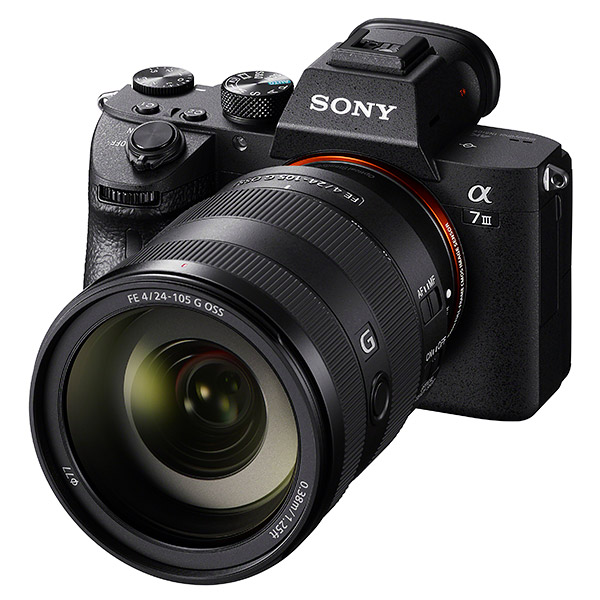 | Sony A7 III Pros: The quintessence of the Sony A7 Cons: Menu exaggeratedly Cryptic (even compared to series 2) Opinion: Immense machine, hard to wish for more (apart from a denser sensor, which made me hang for keeping my loyal A7R2). It has all the features that an event photographer could want: brutal AF, double slot, long battery life, excellent dynamic range, stellar iso, ergonomics and keys arrangement able to speed up every action with respect to the Competition. Unfortunately the menu even compared to the series 2 has messed up even more, becoming enormously dispersive, with the subcategories that have multiplied, all at the expense of the immediate speed of use. It is to say that however once the machine is set up, you really have everything at your fingertips. Even the settings of the 4 customizable buttons are now editable according to if you are in Foto\\video\\media view. But maybe €2,000 is too many, if you consider only the image quality as a Factor. But if you are a professional and you consider this machine in its entirety (even compared to a flagship as D4\\D5 and Canon's counterparts), the speech changes. To take into account that what you save with the bodies, will then go into the optics, all super expensive (but undeniable quality). Canon and Nikon pay a lot the old age of their projects, with fixed that are not comparable to the Sony counterparts, neither as optical quality nor as construction (feel a 85 1.2 L and a 85 GM and you will understand the colossal difference in terms of build quality). If you are an amateur this machine is useless, we will not have quality gains compared to a Sony A7II, and the differences so dear to a PRO, you will not even notice. sent on October 11, 2018 |
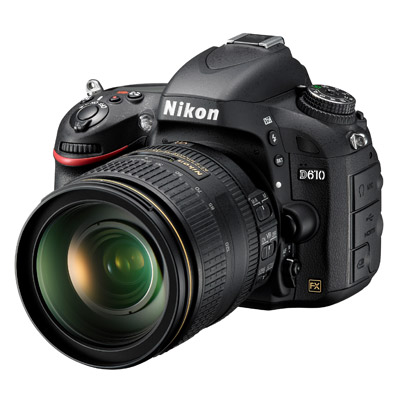 | Nikon D610 Pros: Perfect Cons: At the price of €600 in the used no one Opinion: Perfect machine to enter the full frame, and except professional needs of niche, also excellent for working. Sensor, autofocus, dual SD slot, ergonomics. I don't understand what you want more from a car. Sony offers a car similar to 3 times the price of this (A7III), and sincerely except sports Photography The difference is not there. In fact, with this you can stop having the anxiety for the batteries. Maybe now for 200 \ \ 300 € should go directly to D750, but they are calculations that everyone must make themselves. About the ergonomics then in my opinion Nikon is coming years ahead at all. Gripping a Nikon seems to have an extension of its arm. Maybe less resistant in time than a Canon 5d, but as a feeling of use are unparalleled. I now use Sony and I wouldn't go back, but I still miss grabbing a Nikon and feel how ergonomic the grip is... For those who do not know the Nikon sensors The dynamic range is exaggerated, you will recover the impossible. Also excellent for amateurs who want a car to enjoy photography in serenity without many technological bells of dubious usefulness sent on October 10, 2018 |
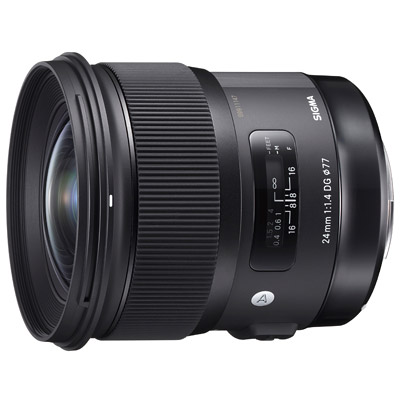 | Sigma 24mm f/1.4 DG HSM Art Pros: Sharpness Cons: Frankly no one Opinion: Optics that I sincerely resold, but needless to say how is a 24 practically perfect (distortions apart but solvable). I don't know how to use it as a portraiture optics. The sharpness is also hallucinating to F 1.4 in the center, it is noticeably at the edges at each diaphragm, so it is not recommended for landscape use. It is the sharpest of the Sigma art after 70 and 135. Maybe some professional 24-lover can be of interest. Comfortable the fact of being able to mount human filters from 77mm (even if the 35 mounts them from 67 and I do not understand why), and excellent macro capabilities. I would have kept it as an optical to make fabulous pictures of flowers or other objects of such close size, but then I preferred to monetize it and buy the 70 macro art (perfect optics). Pity is not stabilized or tropicalized, but given the bad uniformity between the center and the edges, you will not take with you to do landscaping or night. In Summary It could be a good alternative especially for nikonists, but I highly recommend to try it before buying it. The bokeh is also perfect at night taking advantage of the light spots, pity that being a 24mm is really complex pull it out... I recommend a conscious purchase, because anyway the 24mm is an advanced focal, which as written alas I can not fully exploit. sent on October 10, 2018 |
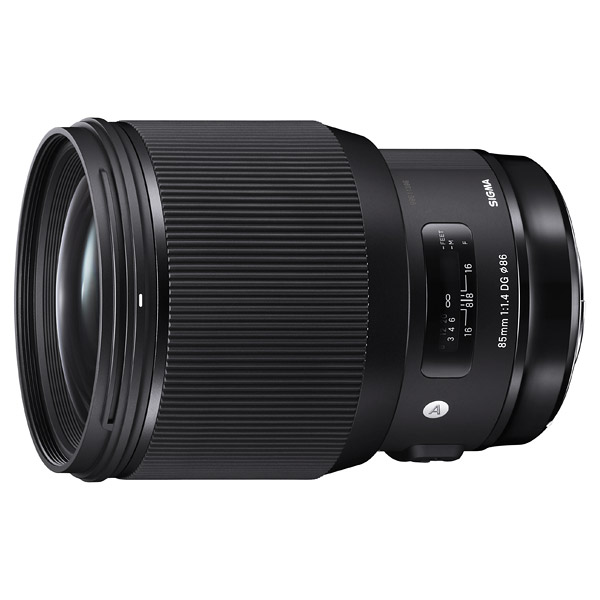 | Sigma 85mm f/1.4 DG HSM Art Pros: Optically perfect if you are looking for the only sharpness and bokeh, use in the studio for good sized prints is your field Cons: Huge and delicate, images too flat and not very artistic due to the huge amount of lenses Opinion: The perfect optics for studio use. Unfortunately it is really huge, with yes a very comfortable and precise ring, but unfortunately the dimensions limit enormously the use. Turn with two bodies on which one is present this will be a feat. On the other hand, it's a perfect lens. The MTF graph speaks clearly, the aberrations are almost not there, the astigmatism either. Canon must necessarily update its 85 1.2 L to upset similar optics (always according to terms of comparison "Nitideschi"). Compared unfortunately emerges a crushing victory of the Sigma Art. But honestly, however, I prefer the 85 1.2 L II, especially because of the micro-contrast and the more "magical" and "unique" of the photos. Unfortunately at the level of bare and raw quality this lens outclasses any 85 on the market, except perhaps the Sony 85 GM, which however apart from being Sony exclusive costs virtually twice as much. Strongly recommended for use on Sony. The set will be enormously unbalanced. Sigma has made it really crazy to produce Sigma Art e-mount attachment by simply sticking a extension cylinder on it, and the handiness suffers enormously. sent on October 09, 2018 |
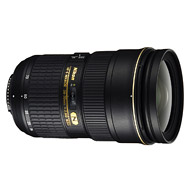 | Nikon AF-S 24-70mm f/2.8 G ED Pros: Good optical quality, fast and responsive autofocus, excellent for professional use Cons: Building from "let me replace every year" Opinion: What about, a great lens as far as optical quality is concerned. You certainly do not do the landscapes at 24mm, but it was not born for This. Unfortunately the quality of construction compared to a 28-70 is ridiculous, and every year you will replace the tires at the service Center. Too bad that Nikon has lost the urge to produce granite optics, and to make lenses "belline to behold", has sacrificed so much Durability. If you take a 28-70, this in comparison will seem like a toy. In summary it is a nice lens, excellent for professionals, but consider that every year will take a stroll from the Photoriparatore. Then if you want to go for weddings with the equipment that seems to have made a war... sent on October 09, 2018 |
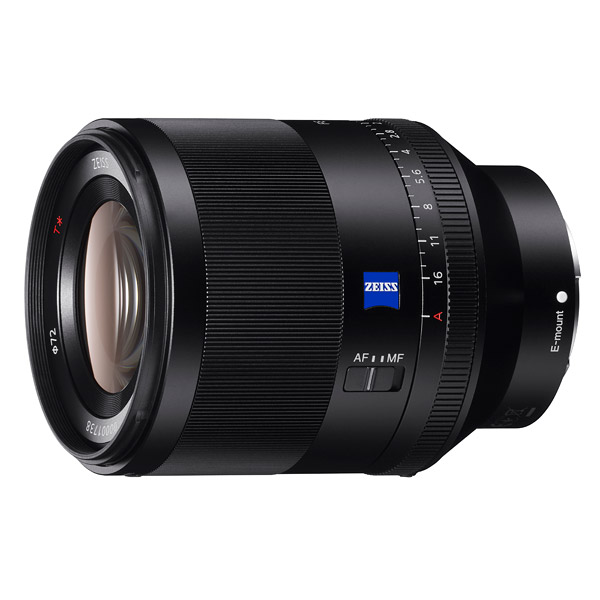 | Sony FE 50mm f/1.4 ZA Planar T* Pros: Lens to be defined standard, with perfect optical quality and very precise AF Cons: Senseless price if you think it's a 50 1.4, exaggerated and sometimes limiting dimensions, Plasticaccia lens hood Opinion: Here we are, after having sold it I can give an objective opinion, without risking that the only review would end up in the hands of possible buyers and make them desist. It's a lens that when you take it from the outside it looks like a work of art. It is solid, all metal (the lens hood is Plasticaccia), to the touch very massive, and anyway it has the air of being able to split the nuts. It seems to be holding a 105mm, and already here the problems begin. The lens is too coarse, too heavy, too massive. Compared with a lens for Nikon or Canon (even the 50 1.2) comes out sadly defeat. It is so large that it exceeds the base of the machine and on some tripod plates it cannot be mounted (my manfrotto for example). Okay quality, but is it really necessary to make a brick by almost 1kg? I think not. The 50mm is a focal from street, quiet to lug around, and with this lens you will not do what a 50mm is born. About the optical quality is perfect, it has almost zero AC, amazing sharpness, perfect AF. On the other hand for almost €1500 if it had not been it would have been funny. Unfortunately the bokeh is not so exciting. Compared to the 50mm Samyang comes out sadly defeated, and this is staggering since it costs 4 \ \ 5 times more. Of course it has a chromatic fidelity that the Samyang dreams (this tends to the yellow), with colors really perfect without any need to post produce. Yes it has some more features like the declickable bezel, but frankly it never came in handy. I find this lens perhaps the best for video makers needing a 50mm to use in video. Absolutely not recommended to photographers given the price and image quality in terms "artistic" lower than the Samyang 50 1.4 FE. sent on October 09, 2018 |
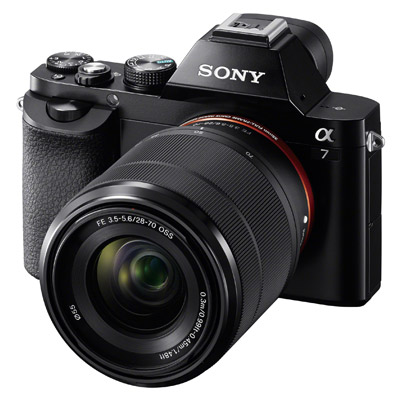 | Sony A7 Pros: Perfect machine for vintage lovers Cons: unusable to work Opinion: Machine with magnificent sensor. A perfect 24mpx full frame, with dynamic range and top recoveri. Unfortunately the AF makes you laugh, and the construction is not up to par (completely revised in the second series of A7). Click button place on the top, very uncomfortable. The advice therefore for a use "vintage", mounting optical zeiss\\contax etc. with rings adapters (the immense Nikon 105 F 2.5 AIS makes a fable), but absolutely to advise against optics equipped with AF (as well as being slow is too small for a Any lens both FE and Canon adapted). If you want to switch to Sony you are obligated to at least one A7II (but also here not the advice to the professionals). Can find space in the outfit of a professional as a machine to which to associate eternal lenses, such as can be a 50mm f 0.95, or as mentioned above a Nikon 105 F 2.5 AiS. The whole thing to use for example during an event for some "posed" shots. Find online A very famous matrimonialist who uses one flanked by a Mitakon 50mm f 0.95 (but there are other alternatives including I recommend the Nikon 50 1.2), but certainly not as first body. I hope you have an idea of the use that Sony can have. I recommend you to inform about all the technology represented by the viewfinder EVF in case you have a reflex and you are really fasting of what is the world mirrorless, because it is only this that could push you to buy a mirrorless (beyond the Considerable overall savings when used with vintage lenses. For the rest the SLR is vastly better for now, especially as operational ergonomics. sent on October 05, 2018 |
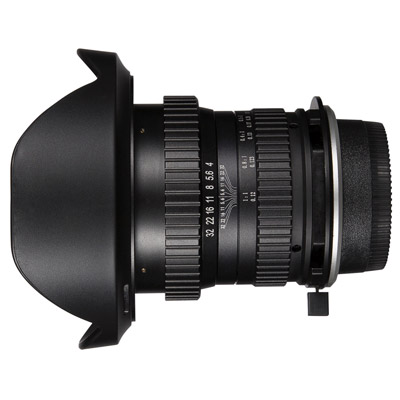 | Venus Laowa 15mm f/4 Macro Pros: Excellent construction Cons: Little sense in general in my opinion Opinion: Crappy lens, especially if it attack e-mount. The tilt shift mechanism I then aggregate myself to call it "grotesque", there is no more suitable term. The hood is then a piece of microscopic plastic of a really poor invoice. However the lens has a valuable construction, all of metal including the ring Nuts. The colors are better than the samyang, but unfortunately it has a very bad uniformity of sharpness. At the center is very sharp, at the edges it falls conviously at every opening. It has declickated diaphragm therefore comfortable for videomakers. I bought it by believing in the miracle, but frankly doing exceptional shots with live subjects is virtually impossible, and with a 70mm macro Art sigma (same Cost) you get an enormously better result at image quality level, simply Moving away a Little. If instead you want something like this, you can take a Samyang 14mm and put a macro ring of small thickness at half the price. In conclusion lens that I recommend to buy used, and in case Resell. Interesting tilt shift and the ability to mount filters from 77mm. In essence It is a perspective that alone can make us both from macro and lens for landscapes very economical both diurnal and nocturnal (we do not have to buy absurd filter kits that sometimes cost more than the lens itself being able to mount those from 77 that we all have). You draw your own conclusions. sent on October 05, 2018 |
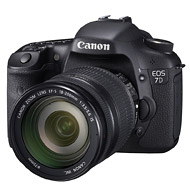 | Canon 7D Pros: Machine with Final price value Cons: Niche machine Opinion: This is a professional machine that costs like a low end compact. It is now at €300 in good condition that you can mistreat. AF very fast, good level burst, nice sturdy to endure even truly SAIC Treatments. The machine is tropicalized even if Juza says No. Unfortunately all this is paid with an inability to repair files come out Bad. If you cannate the shot you throw it. Not that Canon gets used to its customers at decent sensors, but this is even worse. If instead the shot is thought as it should and balanced in exposure, the result will be TOP. 18MPX also for an aps-c I think are the limit to withstand decent ISO (except the mythical Nikon d500). In essence this is a machine for professionals or however experts who need a body to do photographic hunting or sports in very poor Condition. Having paid then €300 we say that it will make us feel less bad if we ruin it. Personally I bought it just for this, so keep my beautiful Sony at home away from the weather, and throw me in the forest to hunt or on the sidelines with this 7d. If you are amateurs do not buy it, you will not do anything, it is not a machine handyman and you risk throwing money. sent on October 05, 2018 |
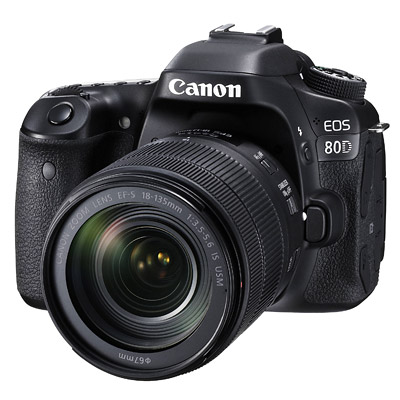 | Canon 80D Pros: --- Cons: Construction does not live up to the price Opinion: I state that I was looking for an APS-C to do photographic hunting without huge pretensions (no lightning-fast chases), but I was looking for something that would allow me to recover some shots even "not perfect", which with my old 7d was not even Remotely thinkable (and the prefered to the 7d Mark II because it has better dynamic range). I found this 80d at a ridiculous price (new), and I was wondering why. Jack I immediately realized how to call it a toy is not an exaggeration. You feel the poor quality, and the comparison with a 7d also mark I is enormously unequal. What is the point of selling such a reflex (with a good AF and an interesting sensor) to almost €1,000, and then equip it with a similar body? Each button seems to crumble in the hand, the tires are quite different from the body (index that will be ruined immediately), and many other small constructive features that I did not think you could not have on a machine "almost pro". Does not stand anywhere near the comparison with a 7d mark I, let alone 2, and do not dare to put in the field the Nikon D500 because the Canon could explode. Basically a machine that I do not recommend absolutely, for sports use should orient on a 7d mark II, if you do landscaping etc. Buy directly a full frame (I do not understand how you can do portraits and the like with an APS-C but it is a My personal opinion). Let's not talk about the video side, excellent screen tiltabile sensibly (not like that of the Canon M5 to say that it flips where the cavalletto\\gimbal...) that allows you to vlogging serenely, but the lack of 4k is a big limit. In summary it is a beautiful machine enclosed in a ridiculous body, sold at an exaggerated price. sent on October 05, 2018 |
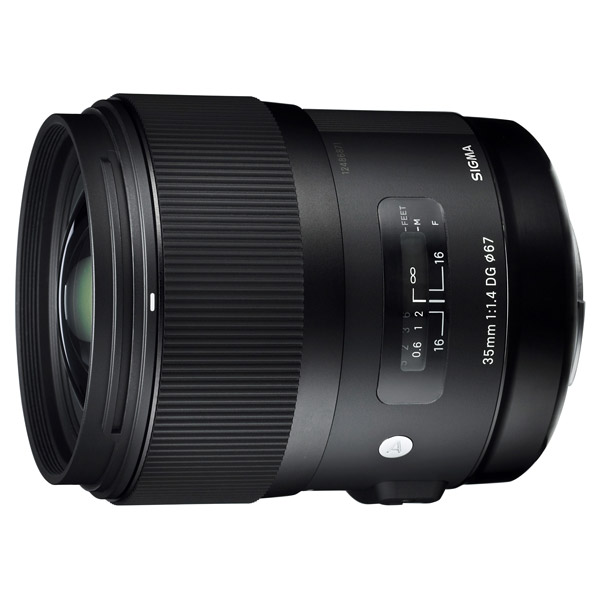 | Sigma 35mm f/1.4 DG HSM Art Pros: Sharpness and bokeh from before class Cons: Awkward construction and obvious lack of character due to the optical "perfection" Opinion: Now when you see comparisons of lenses, it is almost obvious that on the podium there is a sigma art, of any focal. I find really futile reviews focused on front back focus, problem that you are aware of and easily solvable (but that still becomes annoying in the long run). The problem is another, that is the construction does not live up to an optics with this image quality. Just use any of the Sigma art for a couple of months, and you'll already notice the fading of the lettering, the tires full of white powder (it seems to be Scrostino), and a general aspect of the optics really bad more than lived. Note also the great fragility of the diaphragm department. I personally saw a sigma art 35mm intoned with a blown reed, with the owner complaining about how it was possible to still photograph us, but of course with a big handicap. Let's also put the habit of people to buy them Asian import, and good luck in repairing. Regarding optical quality it is impossible to get better on a 35mm (always referring to sharpness and bokeh). In the center is super sharp, and at the edges even to F 1.4 is not bad. Closing at F4 already becomes uniform to be able to take landscapes, up to F8. From F11 the sharpness starts to decrease due to diffraction. The bokeh at f 1.4 is super creamy, and anyway as a whole also closing the diaphragms, or using it at night to TA with light points, the yield is always beautiful. Too bad for the construction I thought was valuable, until I had some specimen in my hands. Therefore, I recommend the purchase for a studio use, or in any case in an established and controlled environment. I doubt it may have the same duration as a Canon 35 L II If used for example during a wedding, between strusciate and various Bottarelle. sent on October 01, 2018 |
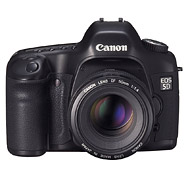 | Canon 5D Pros: The top to start photographing, even for beginners Cons: You will feel the turkeys to having spent 20 times as much for a last generation machine Opinion: I hope this review can push some neita to buy it, instead of throwing money with APS-C of doubt use and equal value. On the other hand, if you plan to save at the beginning with an APS-C kit, such savings will go to a blessing once you try to re-enter that expense. In fact selling medium-range APS-C material is almost impossible, if not almost giving it away. I therefore recommend investing in quality products, which are beautiful and good circular checks. That said, let's move on to the car. It is amazing used at 50 ISO (although they are not native), has pixels as big as peanuts that will allow you to make incredible photos. Only problem that even at 400 ISO you will notice very annoying noise, so it is completely rejected for night situations without flash. At the level of functions has everything you need: shutter up to 1 \ \ 8000 (to exploit lenses even 1.2 in daylight and with Flash) and a super durable body. Basically with this machine you can make every possible photo "reflexive", to the ridiculous figure of 200 \ \ 250 coffees. Of course, forget to use it for photographic hunting, sporting events or places like theatres or discos. The AF cannot withstand these conditions. But I think for an amateur this is really the best machine possible to start photographing. Buy this, a nice Canon 50mm f 1.8 STM, and with even €300 you can serenely reach by amateurs the level of a professional. sent on September 30, 2018 |
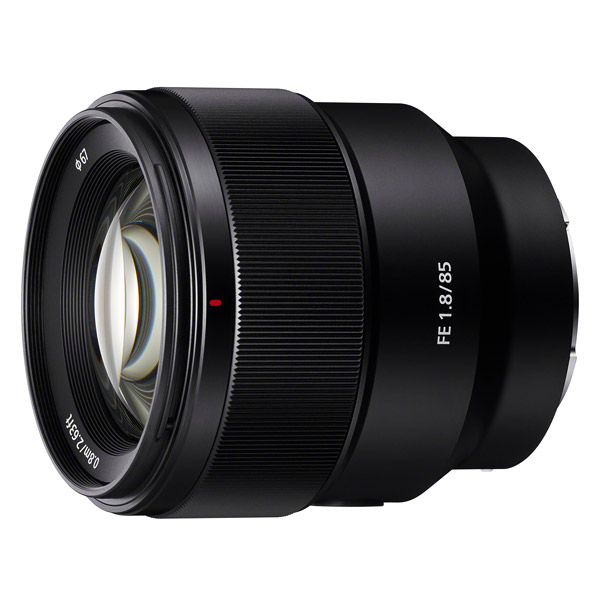 | Sony FE 85mm f/1.8 Pros: Overrated Lens Cons: Horrendous light points and bokeh not up to par Opinion: Buying this lens I thought I was in my hands a little gem, and instead I had to reconsider. The construction is also of a fair quality, but the light points are really embarrassing. Ad F 1.8 All over the FRAME are unwatchable, being anything but circular. The comparison with any Sigma art from 24 to 135 ends with a resounding laugh (at the level of bokeh and light points). At the level of sharpness I do not express, is not what I look for a portrait of the genre, but anyway if you are interested in splitting the pores of the skin, with this you will succeed. In essence It is a surprise that it would be amazing if it cost €250, but pay €600 for an unusable portrait optics to exploit light points (and with bokeh anything but exciting)... Personally I would never spend this figure for an 85mm f 1.8, also because those who have such a figure to spend, I think can make some sacrifices and point to the Sigma art (in case you need the AF) or on manual optics much more artistic and character. Too bad that the yield of the light points and the bokeh are so unsightly, because however it has an interesting optical pattern, but with this magagna. Note that there are strong chromatic aberrations and against the light is not the maximum, even if both these problems are solvable with a little ' serenity in post production. NB: It is obvious that compared to the Sony GM and Batis is economical, this does not mean that it is "economical" in general. We are talking about more than €600 for a mediocre lens, to be mounted maybe on machines that cost €2500. For portrait I would orient myself serenely on a 85 1.4 Zeiss series Zf\\ze, with enormously better results. Also because the AF does not find it indispensable on a lens designed for portraits. sent on September 30, 2018 |
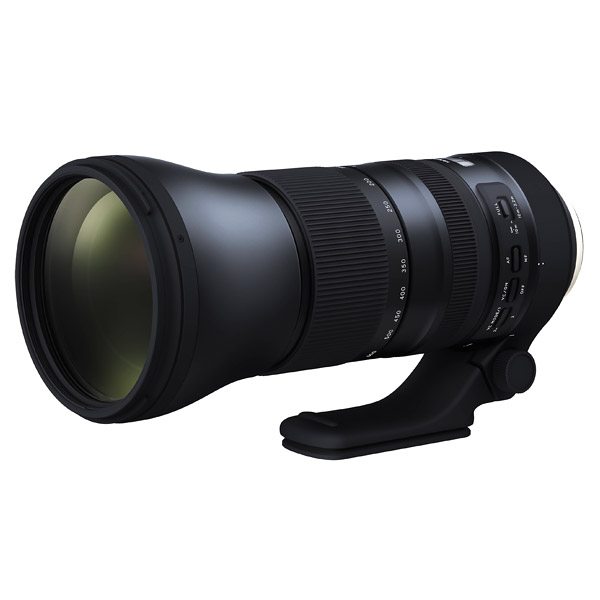 | Tamron SP 150-600mm f/5-6.3 Di VC USD G2 Pros: Sharp, handy and AF great Cons: Dust in the lenses and construction not up to par Opinion: Lens to be praised optical side, unfortunately with a other immense problems: infiltrations of dust in the front lens and gums neckline. Defect also recognized by Tamron that in the presence of this fixes in a free way and seals differently (and hopefully better) the last lens. The tires have already unsealed after a really bland use, so much so that to turn the zoom is not possible to do it with one hand, cause lifting of the tire and impossibility to turn. In essence you can not zoom with two fingers rubbing, but you have to grasp the ring of the zoom with the hand set to semi circumference, making the use fast without a tripod almost impossible. In fact with one hand you will have to hold the camera, with the other the lens from the 3 foot attachment, and in theory sliding two fingers should be possible to maintain this position by turning the zoom ring. This does not happen, and therefore we will be forced either to tilt body and lens down, or to do other stunts. In conclusion a very sharp lens with a truly quality AF: therefore side "quality \ \ Price" insurmountable. Unfortunately the construction makes you laugh, both for tires already ruined and for infiltrations of dust. Note as despite being a manufacturing defect, in case the optics are guarantee Europe (and not Asia), Polyphoto does not solve the problem for free, but indeed we are talking about €80 only shipments. Embarrassing behavior, and probably last optical Tamron. It's fine optical quality, but if then the construction and the assistance are not sibling level... sent on September 30, 2018 |
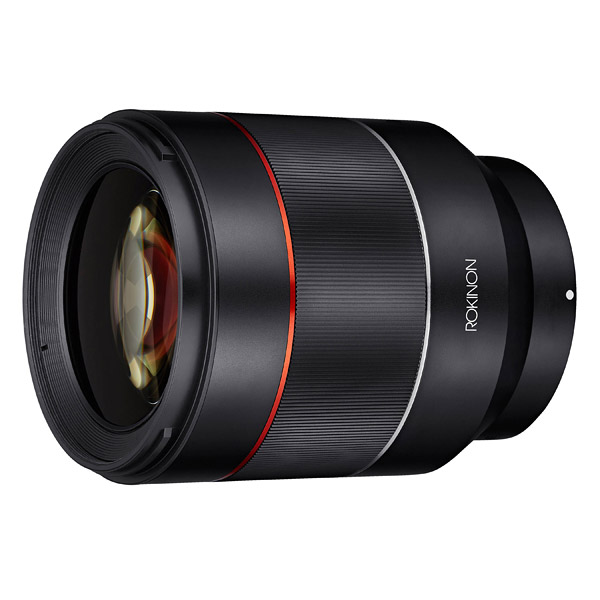 | Samyang FE 50mm f/1.4 AF AS IF UMC Pros: Equal to the Zeiss if not better as optical quality Cons: AF Noisy Opinion: An incredible lens, impossible to ask for more from a optics of about €500. It has superb image quality, it is not comparable to the Zeiss not because it is poorer, but simply because "different". It has a more creamy bokeh, we could define more "artistic" than the Zeiss. Obviously has some functionality in less than the latter, such as the various keys on the body and the aperture ring declickabile very convenient. Loses in sharpness but the differences are appreciable only with the sensor 42mpx with extreme crop, on 24mpx are identical. Unfortunately only huge downside is the AF really noisy. It is at the edge of the annoying if used indoors, and absolutely to avoid in contexts where the silence is required. Another big problem is the fact that the MAF is electronic, so even using in manual the Ride ring by wire (very precise compared to a classic) there is the annoying noise of the internal mechanisms. It is therefore the question of advising it or not with respect to the Zeiss, which I find unfortunately overcrowded (although it is a virtually perfect optics). Make your considerations but do not plan to buy the Zeiss for image quality, but for the AF well more usable in working contexts. PS: Note how this lens actually is a 1.2 F and not F 1.4. It seems absurd, but compared with the Zeiss is a more creamy bokeh and a greater light transmission. sent on September 12, 2018 |
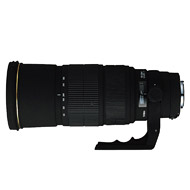 | Sigma 120-300mm f/2.8 EX DG HSM Pros: All, apart from the autofocus Cons: Af Opinion: Bought used at a ridiculous price, unfortunately I have not clearly now what to do. The AF is unusable if not for almost static subjects (and I'm talking about a use on 5d Mark III). The image quality is very good, the weight is subjective, the internal zoom is very comfortable, the sharpness satisfactory, rendition of the colors idem (this also leaves the time that finds seen the possibilities of modern post production). Essentially an appreciable optics, with unfortunately an AF not abreast of the times. Impossible to use in avifauna, perhaps with a little ' hand and a good dose of luck you can use it to make us sport. It remains the use in good light with subjects in light movement. Certainly do not make us minimo\\maximum in a fraction of a second, little but sure. Surely on €1000 there is no alternative, if not the Canon 300 2.8 massacred whose spare parts are unavailable. Nikon offers several alternatives, but here too I have not quite clear the situation regarding the spare parts. To summarize is a good optics if you settle and you do not have in mind to chase the birds in flight or motorcycles on board, maybe buying with the money you save a good 150-600 recently produced with AF modules of discrete quality for when you have to chase , and this for more static use. sent on September 09, 2018 |
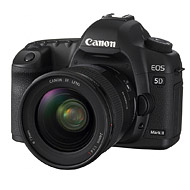 | Canon 5D Mark II Pros: ----- Cons: Fanatics machine Opinion: I wonder in 2018 how you can "recommend" a similar machine. AF slow (inoperable in live view, back in eyepiece focuses and then back to LW), dynamic range almost nothing, a war find the correct exposure all the time hacking with + \\-(inaccurate light meter). At this point to learn how to photograph you might as well spend €250 and take a 5d Mark 1, so as to fully enter the optics "reflex", and get your bones. Unthinkable to think that at the same price are the Nikon d610 used, which is enormously better in everything. In addition let's put the only CF cards that objectively does not use anyone (with the Mark 3 have understood to put the SD). Reading the reviews here on Juza makes it seem even the most pan of the optics a Zeiss, and even the oldest of the machines, as if it was useless to buy a reflex that is not 15 years behind. To whom do I recommend? To some masochist who wants to get hurt, because objectively I do not understand how we can recommend a similar machine in 2018, whereas they are still sold to over €600 if in good condition. EDIT: Responding to the review above, in essence the machine is not worth even remotely €600, but as a professional would manage to click discreetly, it automatically becomes a recommended purchase. A true PRO makes you shots as you should also with a mobile phone 10 years ago, and find online some nice videos on this topic. Write a review of a car because according to you "you can take us home the Loaf" (with the skills of an expert matrimonialist), I find it misleading and unnecessary for the purpose of an experiential disclosure. 99% of those who would buy it are not PRO, and read such reverie, can not do anything but delude. sent on September 02, 2018 |
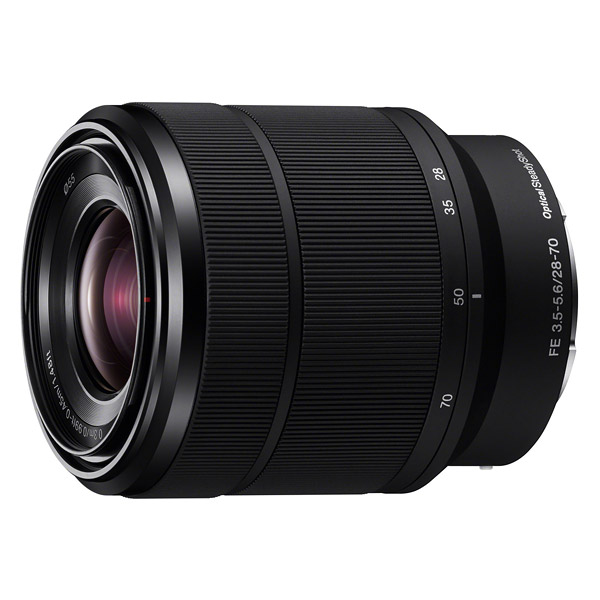 | Sony FE 28-70mm f/3.5-5.6 OSS Pros: does not explode Cons: All Opinion: I wonder people like face to advise such an optics. I wrote a more thorough review about it, but I try to summarize. How is it conceivable to use such a lens on camera bodies that at least cost €800? I don't understand, it really goes against every basic logic of photography. You buy yourself a A7R2, and then you put yourself to save on a lens, buying this bottle bottom? The kit optics are born to take the first steps in the photograph. What is the point of making a FULL FRAME view? Who spends so much on a camera body what is it doing with such a lens? The only positive note of this lens is how sharp it is in the center, fine. It is not uniform, it is not bright, the construction makes you laugh, the bokeh pulls it out by entering practically with the lens in the subject you want to photograph. I wonder why here on Juza are the 90% misleading reviews about the lenses. It's okay that you've spent money, but that doesn't imply that you have to invent things that don't exist. This is a lens without meaning, it is as if tomorrow Pirelli made a tire train only for Porsche 911 from €30 each, and people started to say "eh but cheap, however their duty they do, will not be great but for the price are good". If you don't have the money for the tires, you don't buy a PORSCHE 911. sent on August 31, 2018 |
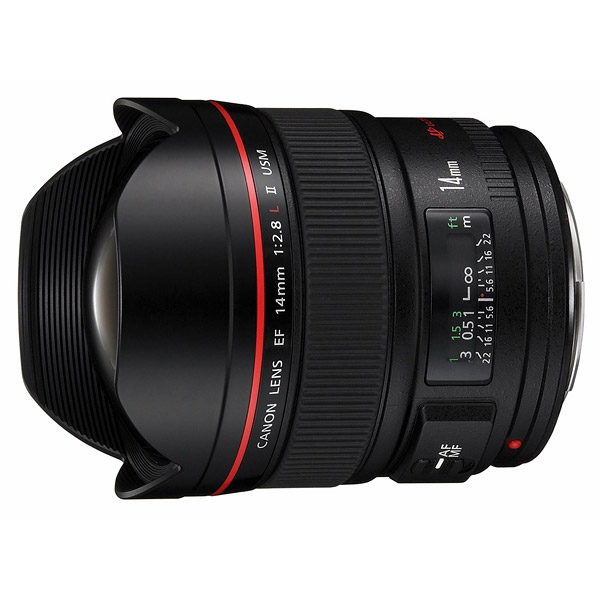 | Canon EF 14mm f/2.8 L USM II Pros: Wants to know them Cons: All Opinion: I wonder about the Canon engineers when they designed this lens what they had in mind. It is less sharp than the Samyang 14mm f/2.8, along the edges pulls out hallucinating chromatic aberrations (which do not disappear by closing the diaphragm), the sharpness at TA is tremendous in the peripheral area such as to render it unusable for nighttime photos. Ok is reasonably sharp in the center, but what do I do with a 14mm with a uniform sharpness exclusively at F11 (online graphics Videsi)? By the way all this for €2,350 official Canon price. The only "value" is the autofocus, but that at this focal length leaves the time it finds. I wonder the people who wrote the other enthusiastic reviews how many degrees of myopia missing has, because objectively it is a lens that does not deserve even 3 \ \ 10, and the value for money is the worst that can be found in a goal. The only positive note is the lack of distortion, especially when compared to Samyang. Pity that then with a click the distortion of the latter disappears, and the only thing that remains from the comparison is the deep bitterness for having thrown €2000. Compare it for example to a Zeiss Batis 18mm f/2.8, and you'll understand how pitiful this comparison is, all considering the price of the batis of not even €1300. NB: I had both lenses, I tested them next to each other, and I have seen with my bitterness all that. But if you don't believe me there is a thorough online review that will clarify all your ideas. sent on July 31, 2018 |
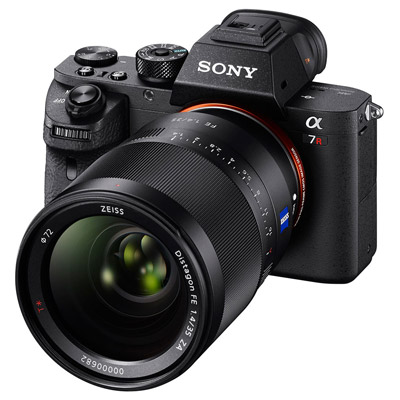 | Sony A7r II Pros: TOP image quality, silent shot, AF great Cons: Battery life, questionable RAW compression, slow Opinion: Surely it is an amazing machine, slow to ignite, but after it becomes a pleasure. Immense step forward compared to the A7 basic version, unfortunately not exploitable in the workplace (delicate, unergonomic, AF to forget). The resolution is hallucinating, a machine quietly usable for huge prints. The BSI sensor also allows you to go without fear with the ISO (provided you are aware that the noise on the bokeh is already seen at 1600 ISO), as opposed to the previous very dense machines that had the problem of very small pixels (here solved to point with the back Sensor illumination). So little to do, regarding the sensor and the direct image quality, currently on the market to see differences (even here not so pronounced) you have to climb the medium format Fuji (I do not consider Hasselblad that price is out of category). To date 2018 I do not recommend the version after A7RIII for the few improvements made. The completely silent shot inherited from A7S is very useful when you are photographing in macro or in silent environments. Of course you have to associate a lens that focuses silently, if not is useless. Downsides (if we want to call them) are a rechargeable battery life (which resolves to €20 compatible with charger exploitable with any micro-USB), and files of inhumane size. Unfortunately the compression of the RAW offered by Sony kills the file, and is not usable (some online test videos). So for those who have a serious computer there are no problems, but for those who are not a geek and not have a good monster, may arise big problems. On average, RAW files range from 80 to 90 MB, and when you work with TIFF, the situation becomes worrying. The AF is very, very satisfactory. To give an example, it makes usable sigma art canon mount, which on Canon 5d Mk 3 \ \ 4 were really unreliable. Other great acclaim at Sigma that produced a truly incredible adapter. Even the super tele work, albeit with some reserve (Canon 400 F 5.6 L works well with AF on center point, of course not chase the bikes on the track, but even there I have not deepened that much). Usability side is really fantastic. A mountain of customizable keys, a hundred different settings that will excite the geeks. Certainly will be the nightmare of the now 50 year olds who started with film, but compared to Canon we are on two different universes. In conclusion for the current used price of 1300 \ \ 1500 € is an absolute BEST BUY. The image quality is at the top, the optical park is immense (all Canon L series, all Sony, the new fantastic Samyang, the Sigma Art both Mount Canon and just directly FE, even Nikon with a new adapter that seems to offer similar performance to Canon, Leica, Voigtlander), usability is fantastic. What else do you need? sent on July 26, 2018 |
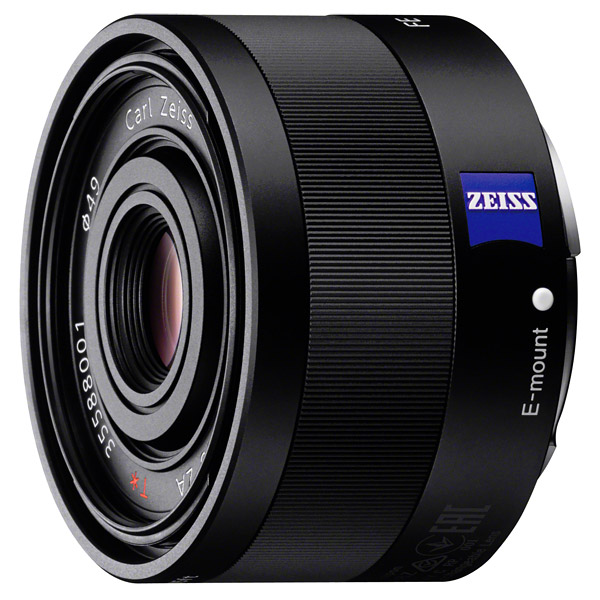 | Sony FE 35mm f/2.8 ZA Sonnar T* Pros: Sharpness, construction, compactness Cons: Price, effective utility Opinion: This will be an honest review. Driven by the superb reviews I bought this lens and... it didn't go. We start from the fact that the price is absurd and unjustified. At the same digit (new second-used used) you buy a sigma art 35mm. But let's go by degrees. Anyone who thinks of buying a lens like this has a mind to flank it to a Sony A7 and turn it as if it had a compact. The problem is, you don't have a compact. Would you turn with a A7R2 in the jacket pocket? Frankly I find some nice reviews, you're talking about a couple worth over €2000 to the new minimum, and people talk about it as if they had a sandwich in their pockets to eat. Needless to mention the image quality, from a 35mm f/2.8 you can't have poor image quality, it's unthinkable. But you in a perspective to kill (because if you keep it in the pocket of the jacket this you do), look at the sharpness? It seems that this lens was born to take in hyperfocal forgetting of any bokeh effect. Another big flaw is the ride-by-wire, which absolutely does not return a pleasant feeling, the ring slides as if it were oiled, probably due to the still immature design of the electronic focus system. So for me, it's a completely flunky, fancy-eye lens. For those who really need an absolute image quality in the size of a compact would do well to orient on a much more comfortable and sensible RX1, which with also a splendid optical F2 certainly allows better results. If you have a professional car instead, and you are not sick that you turn with thousands of euros in the pocket of the jacket (in this case this is the optics for you), orient yourself on other. sent on July 25, 2018 |
 JuzaPhoto contains affiliate links from Amazon and Ebay and JuzaPhoto earn a commission in case of purchase through affiliate links.
JuzaPhoto contains affiliate links from Amazon and Ebay and JuzaPhoto earn a commission in case of purchase through affiliate links.May Beauty Be Everywhere Around Me